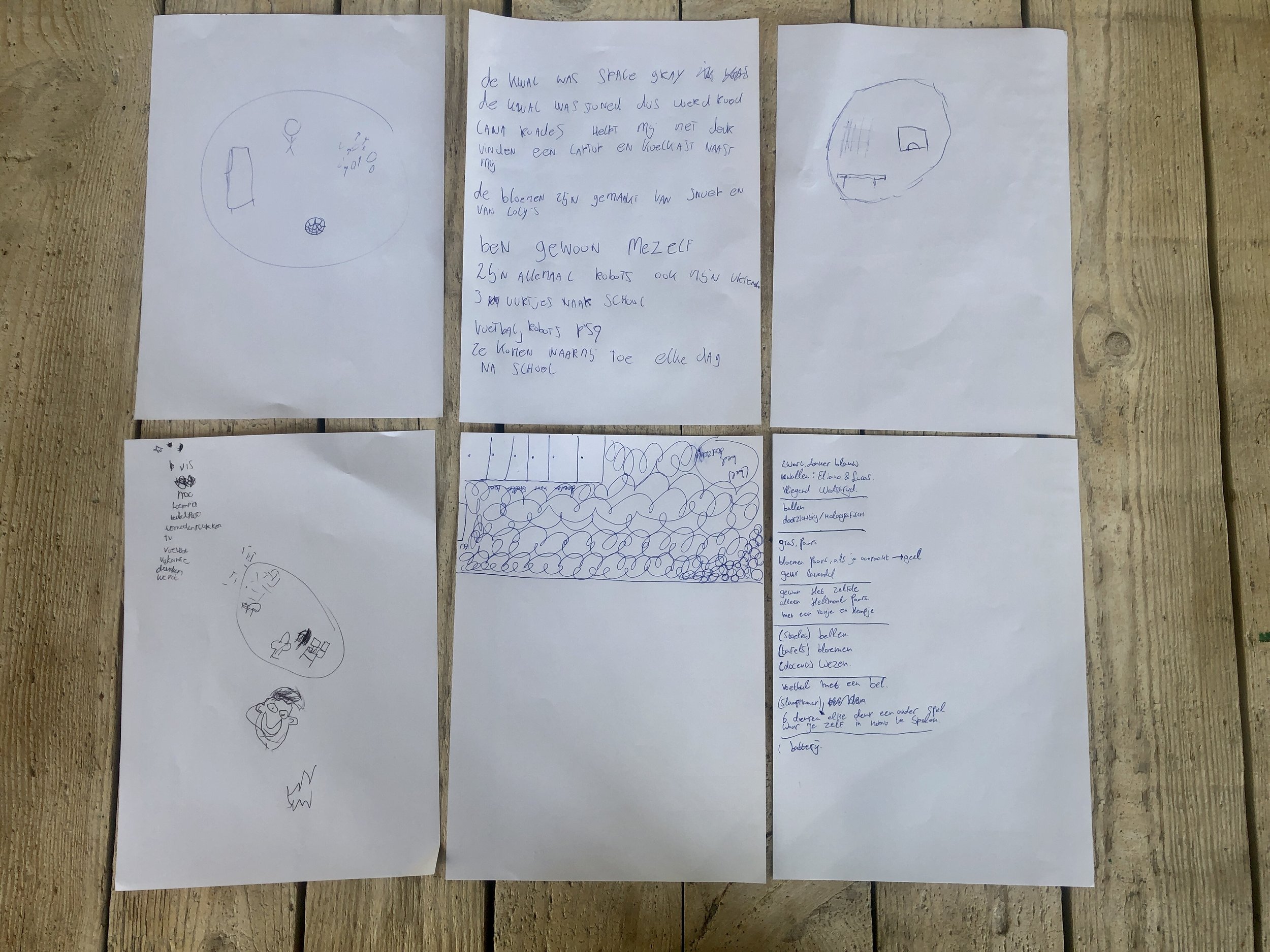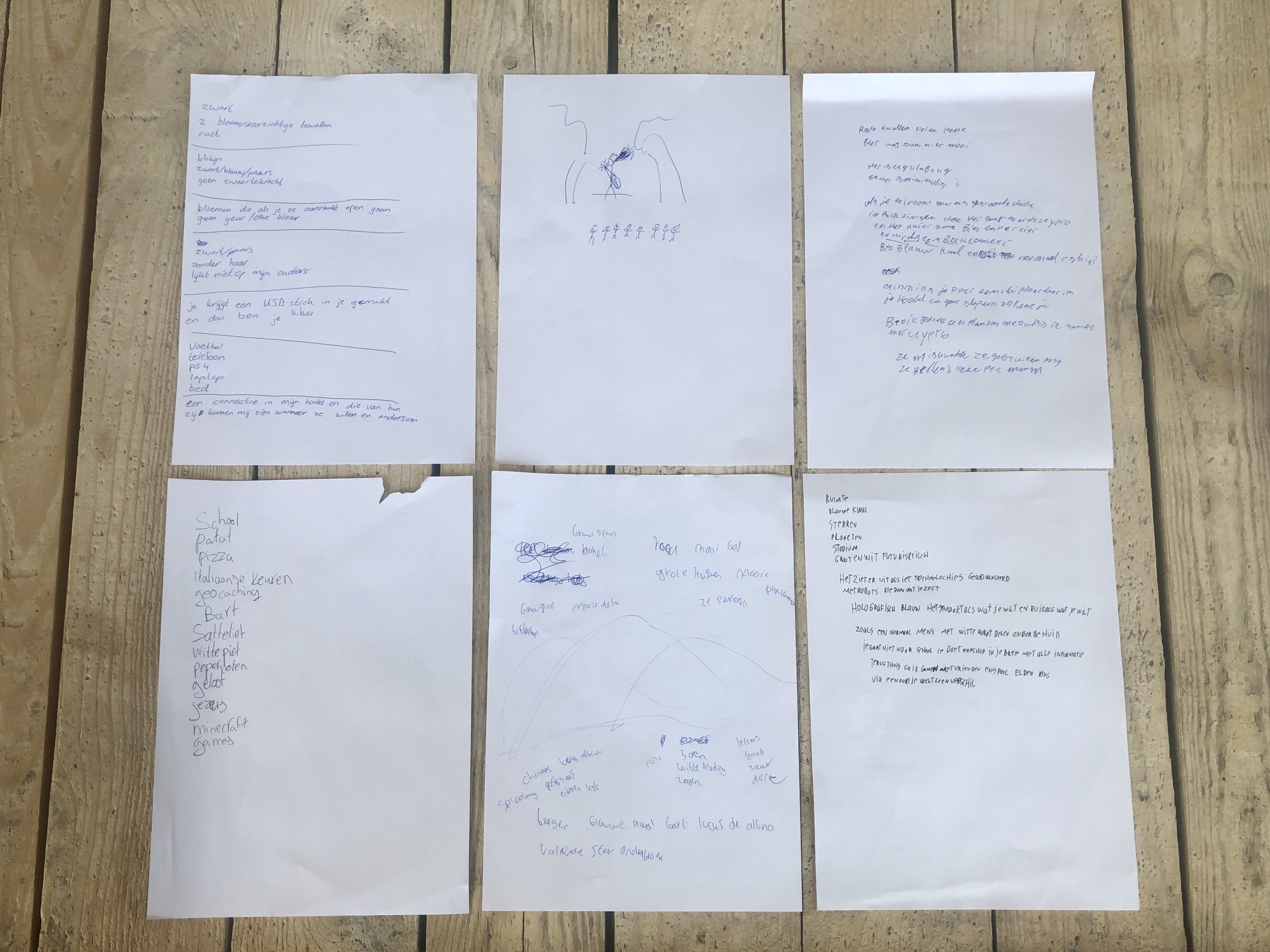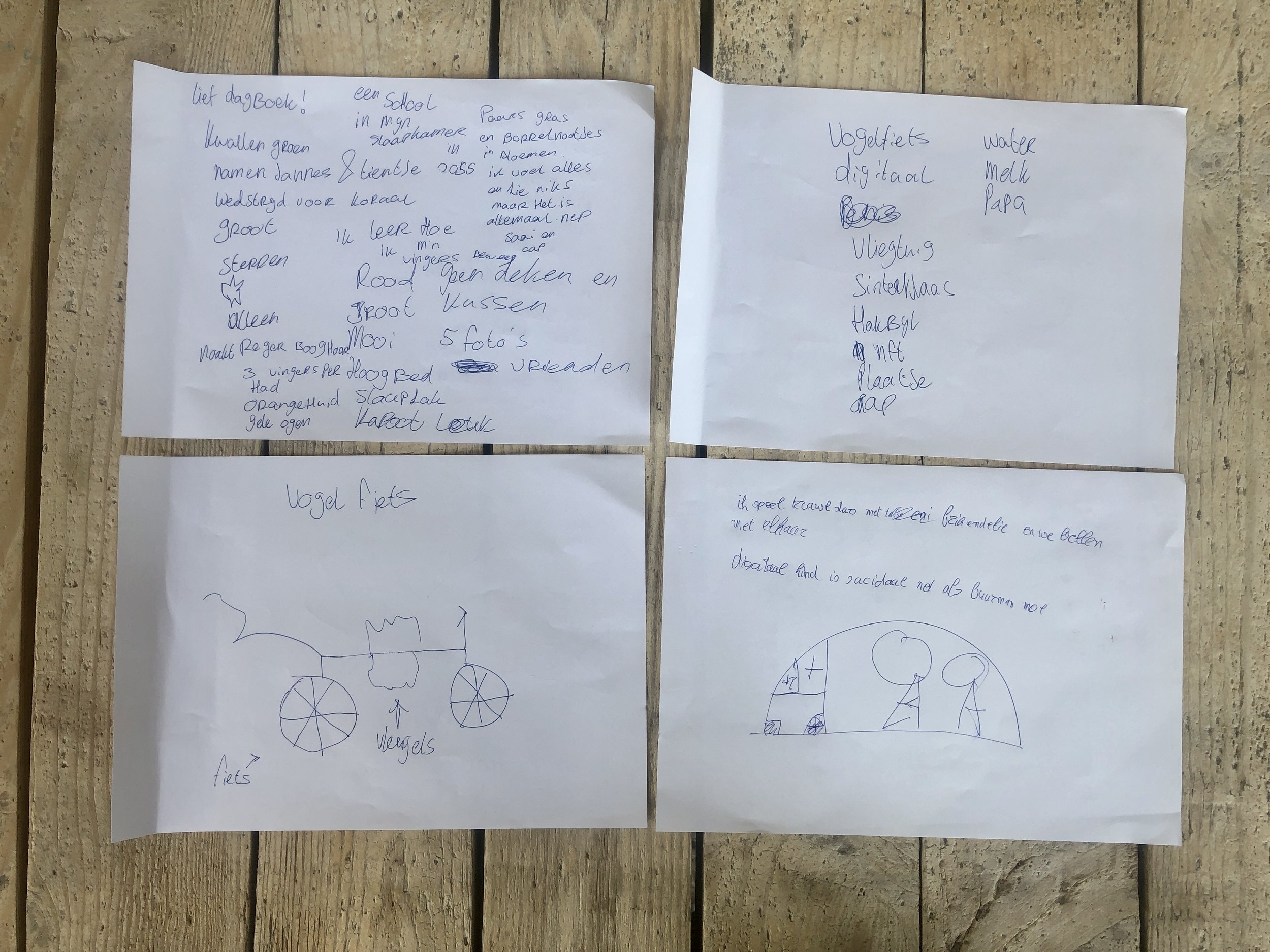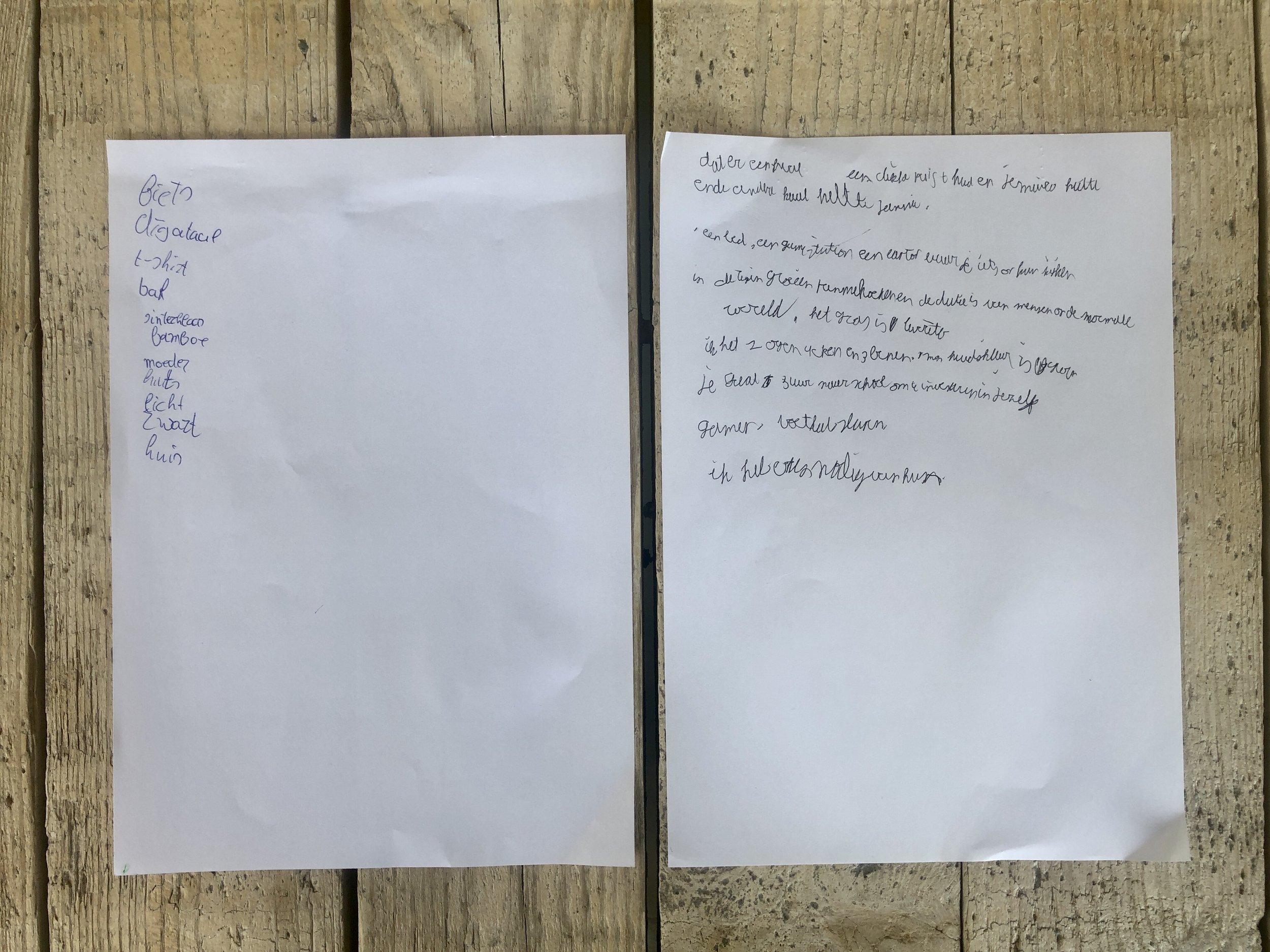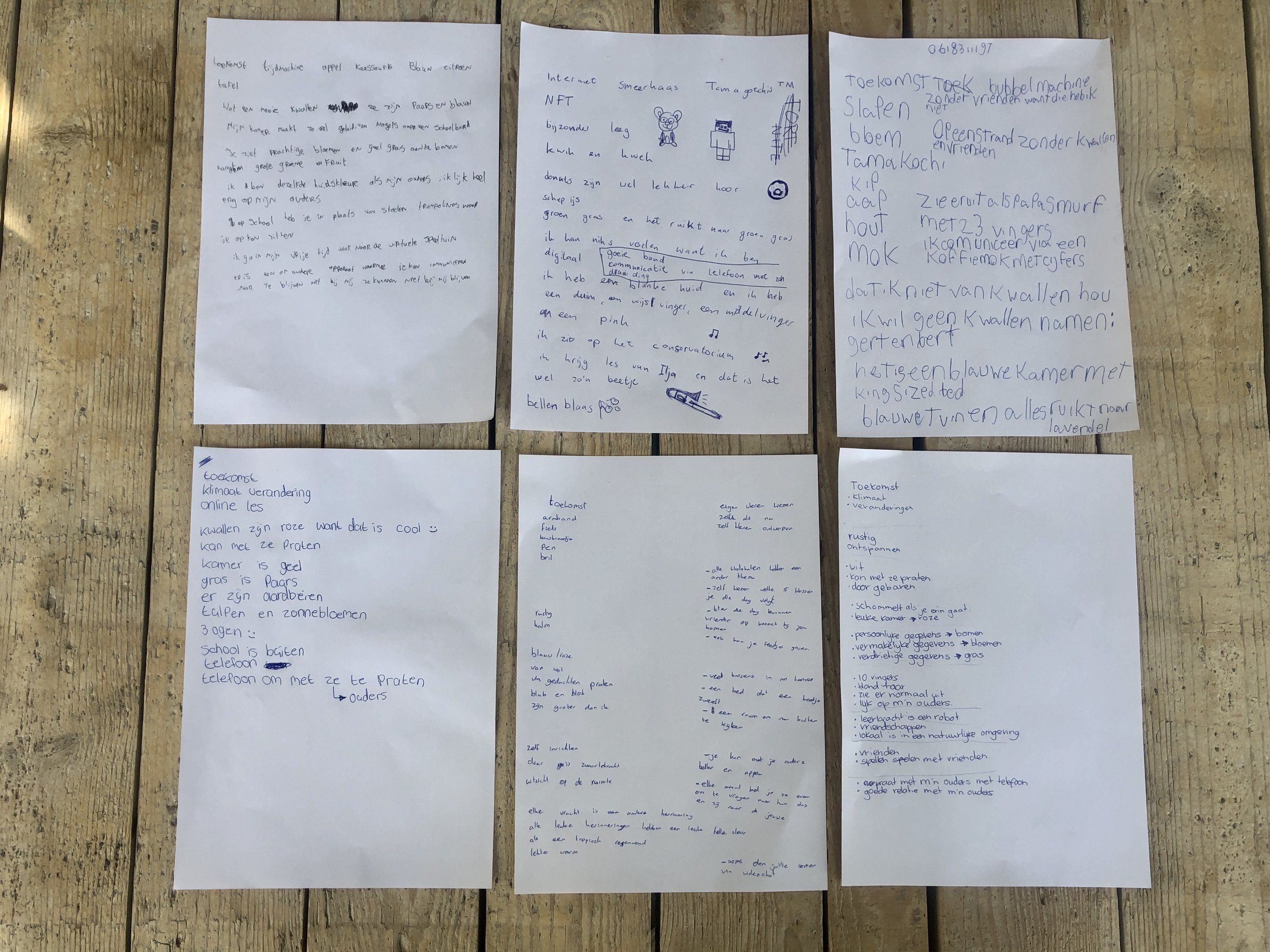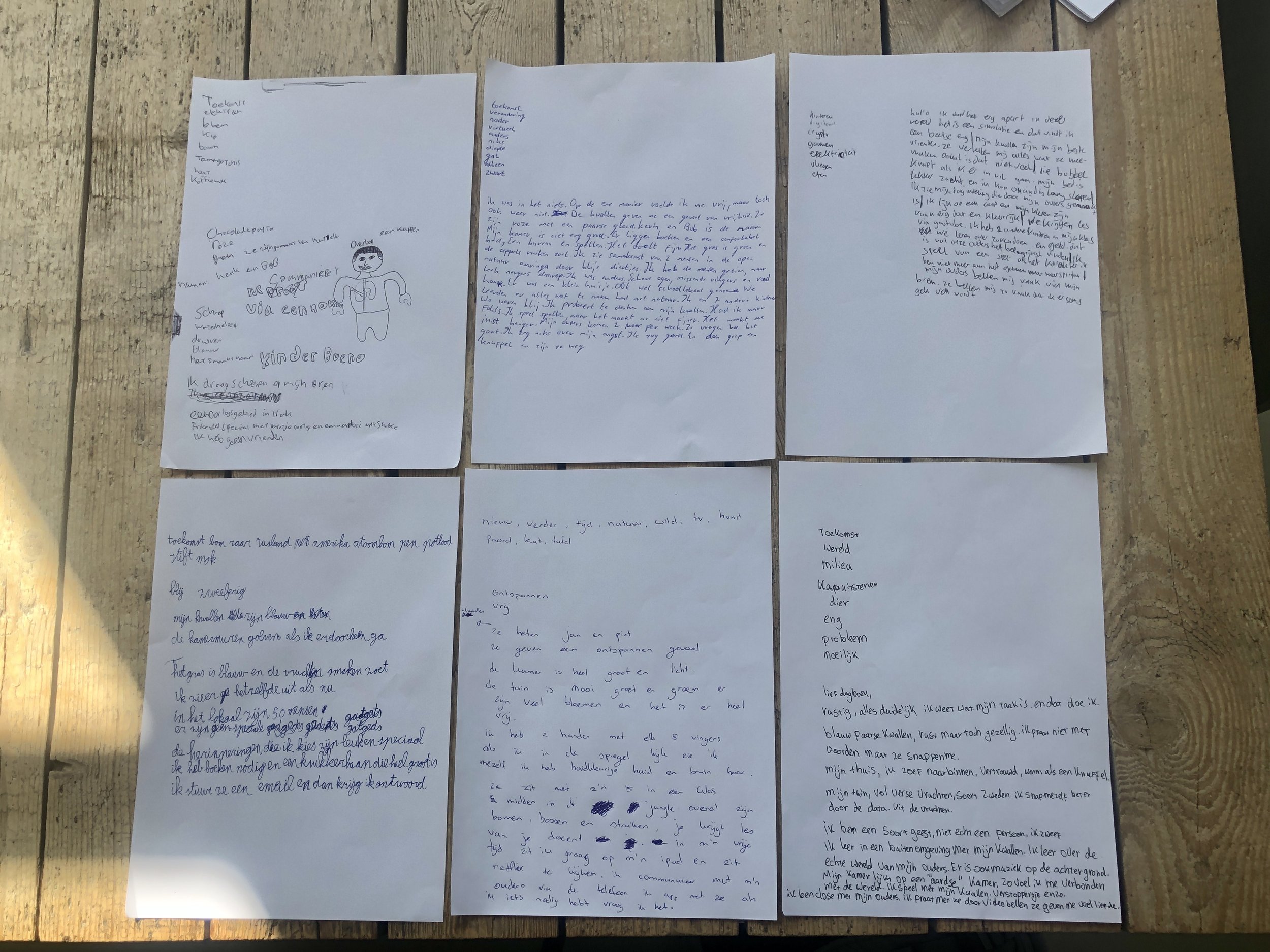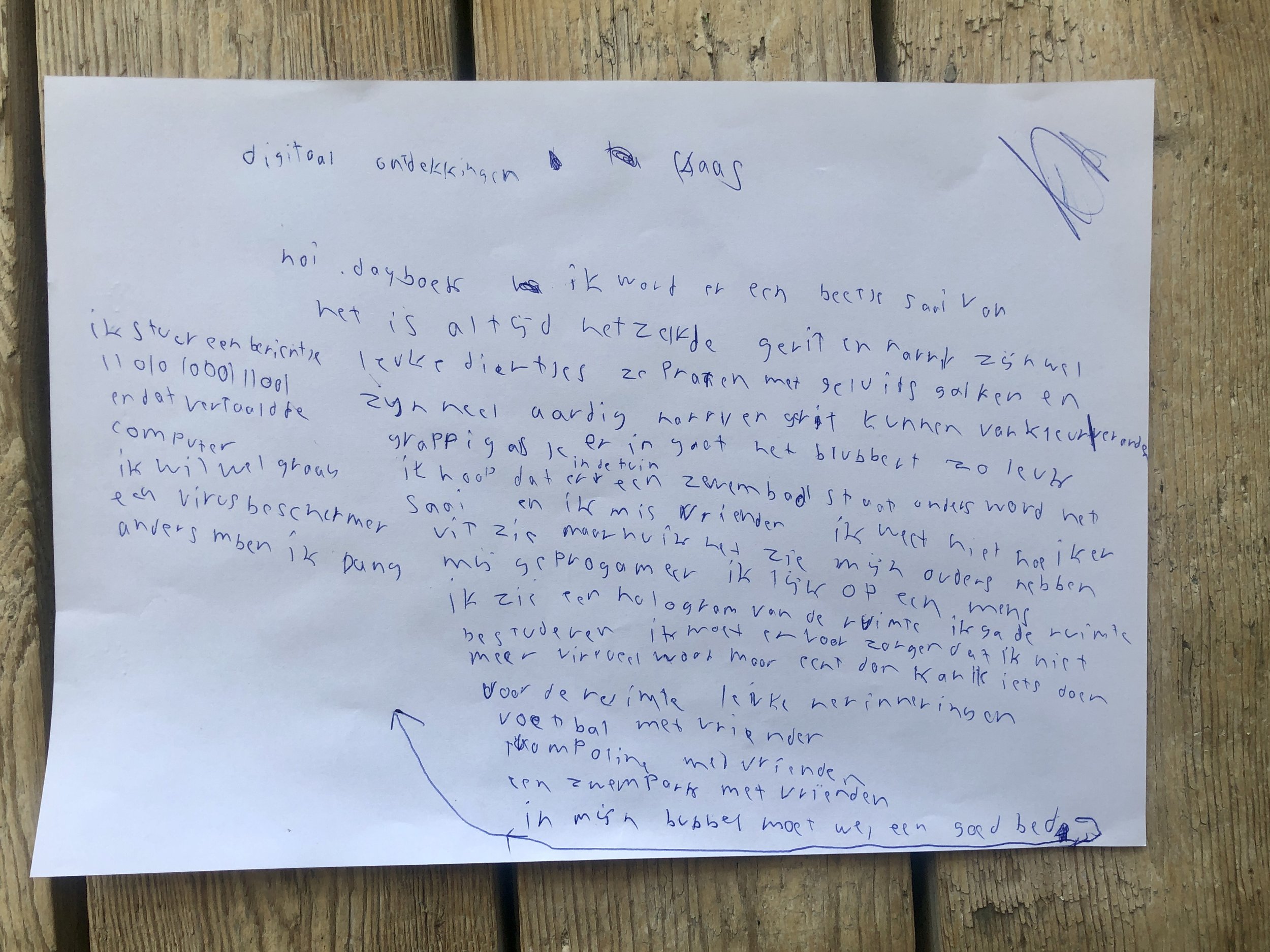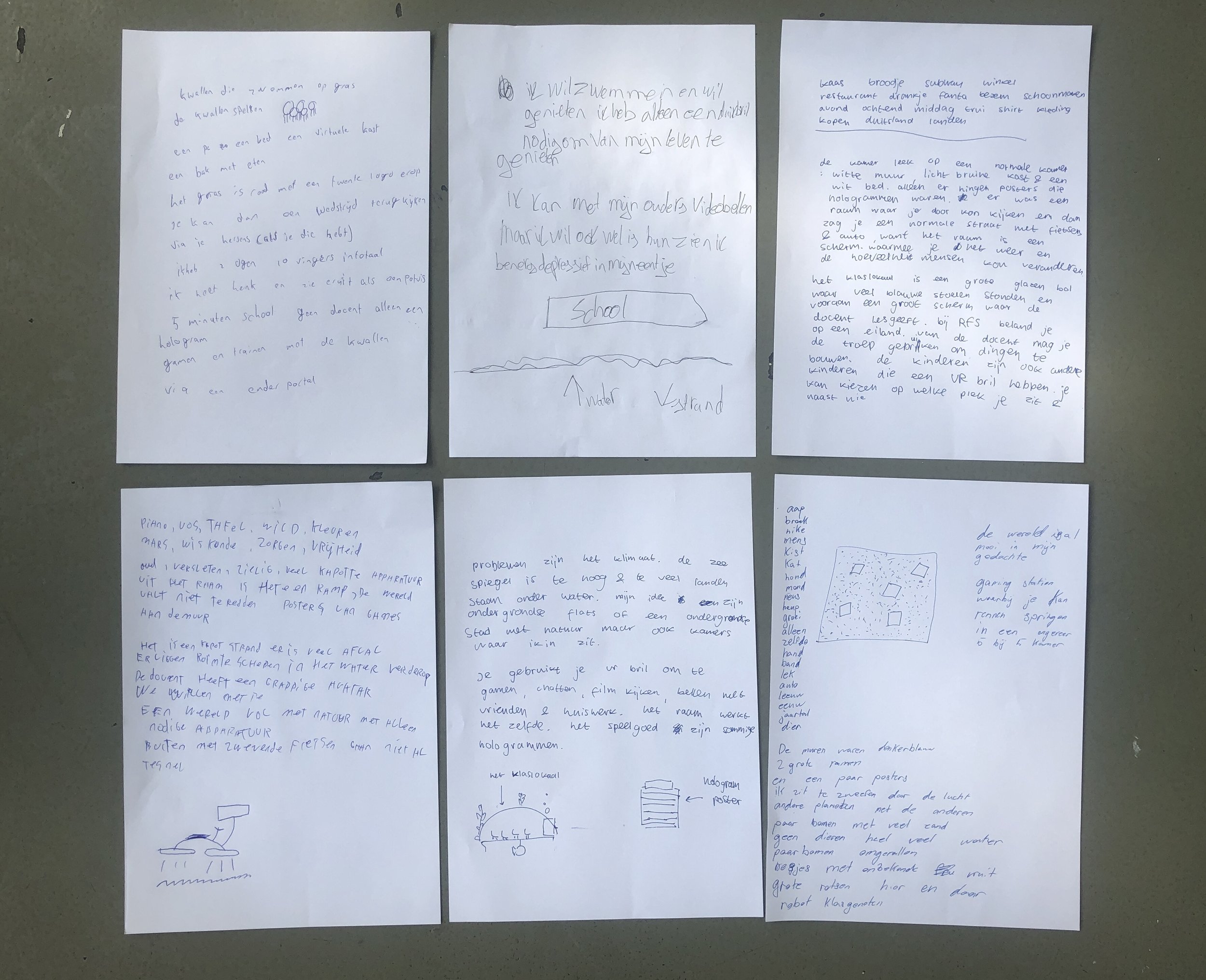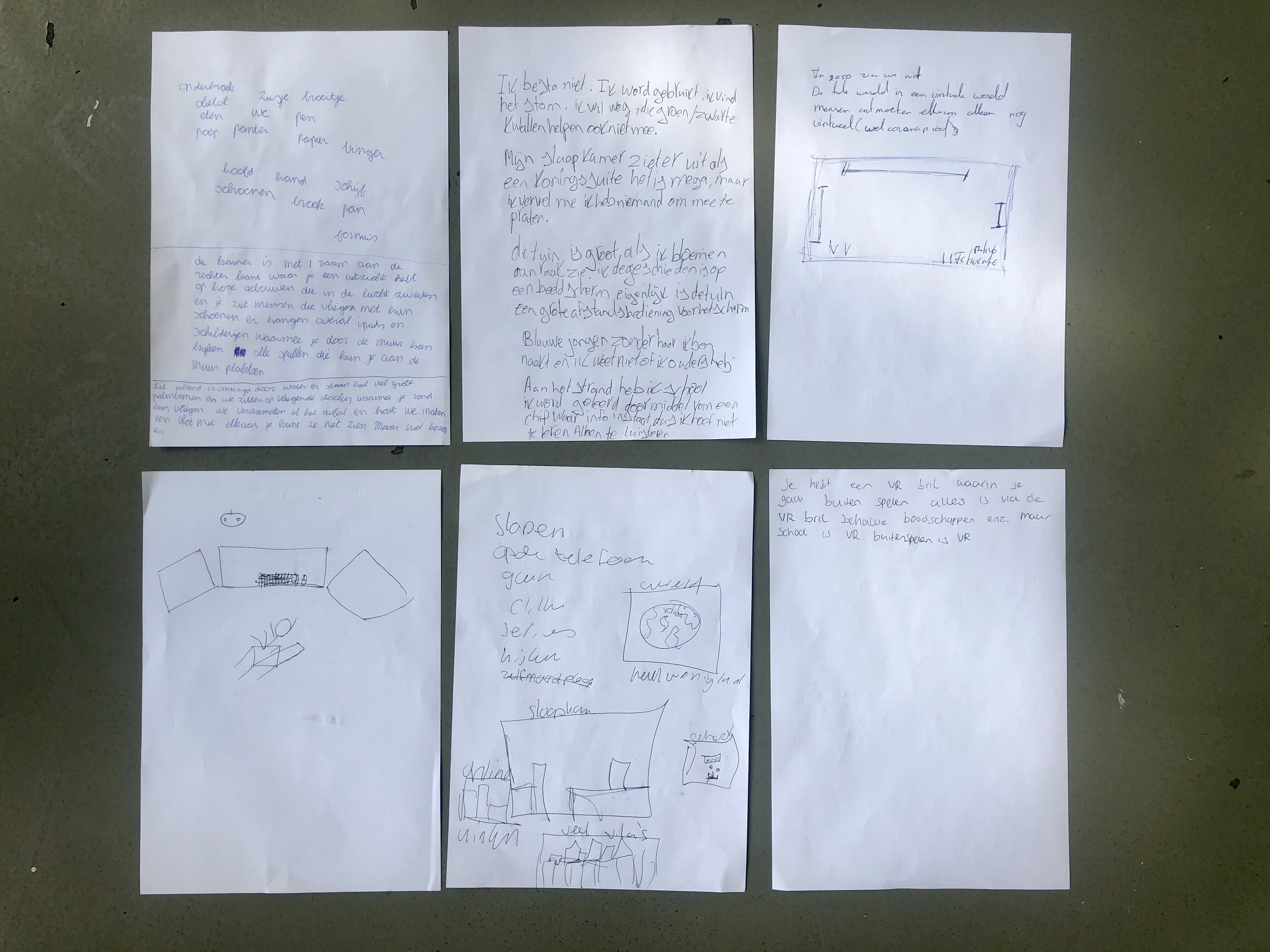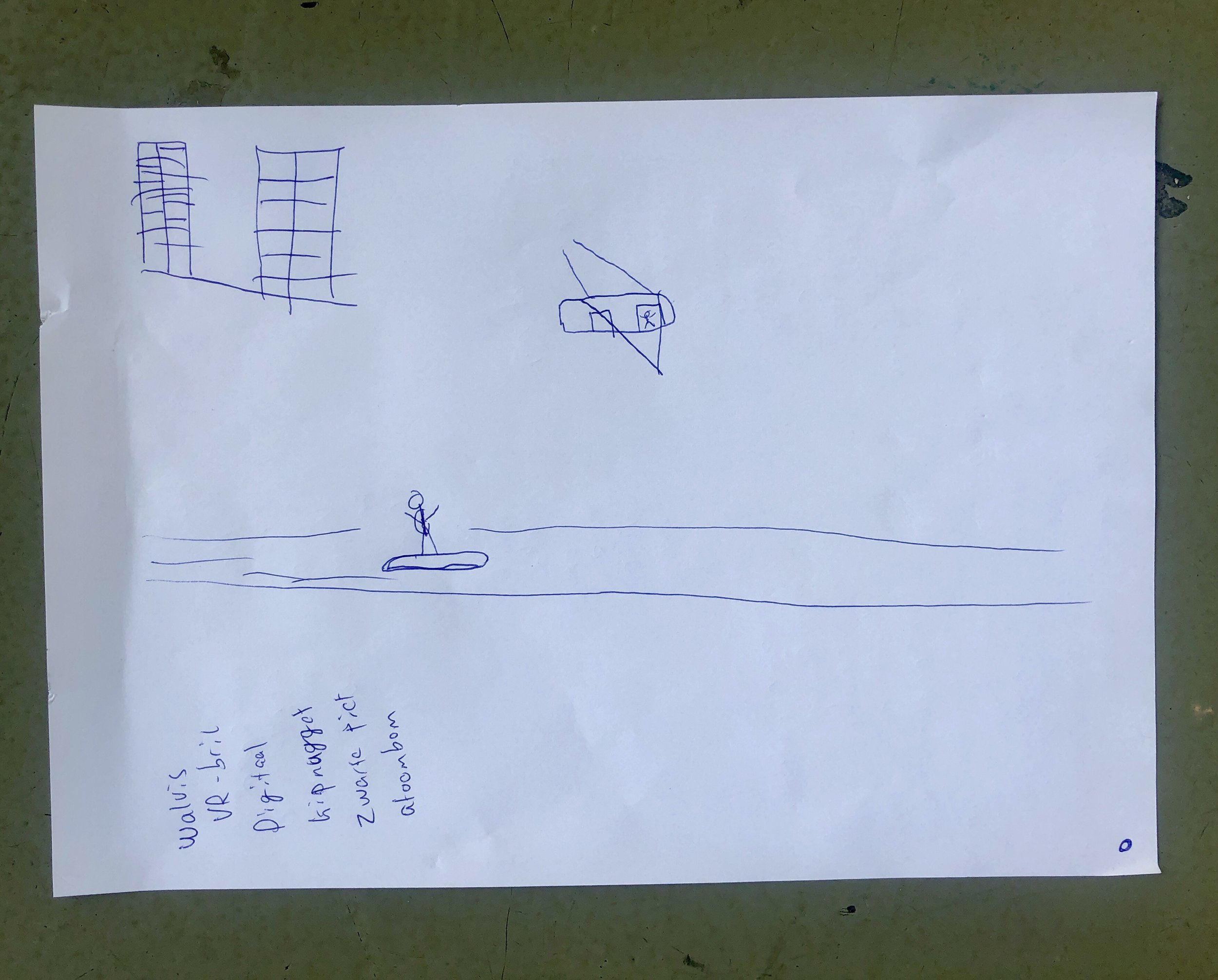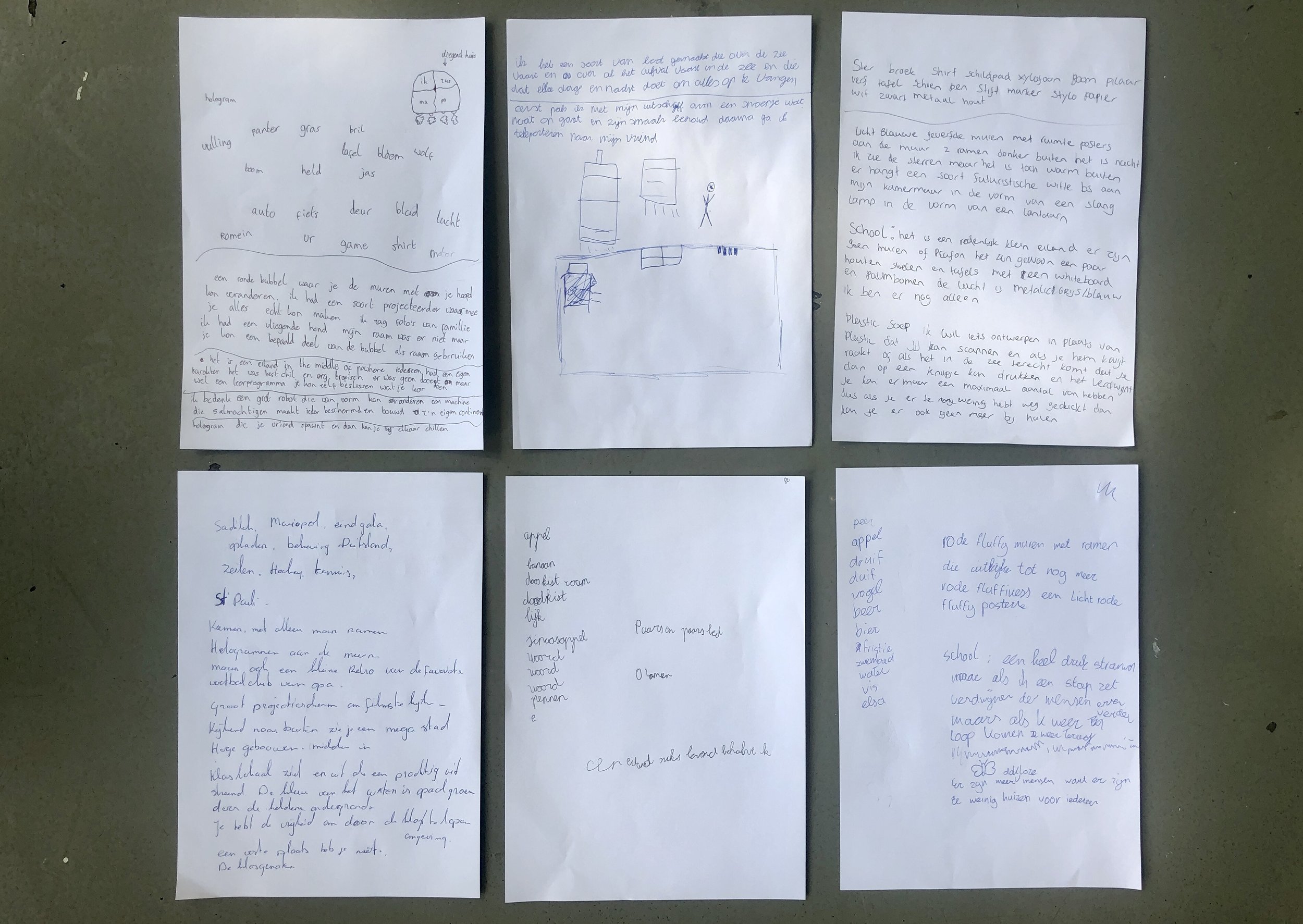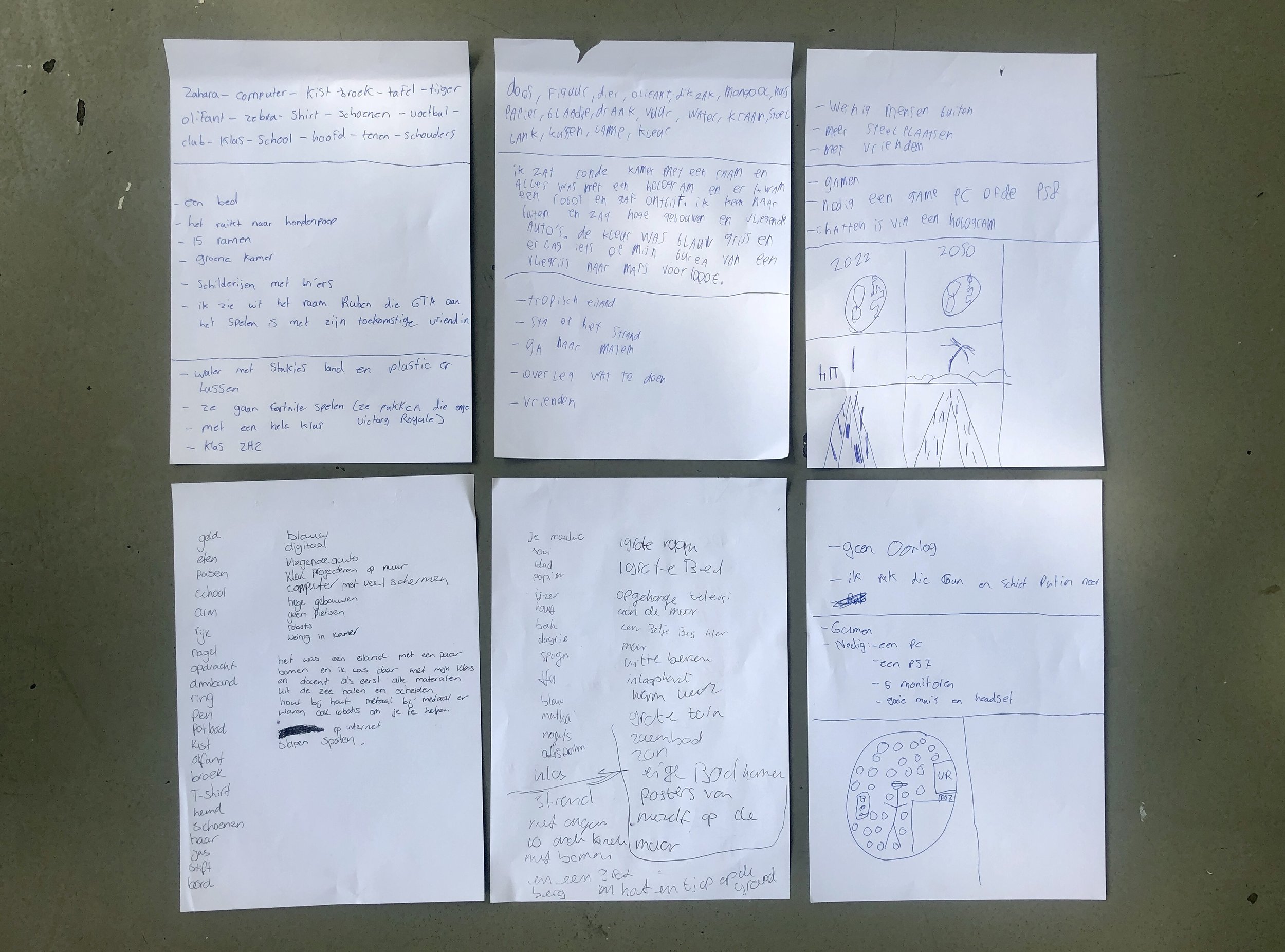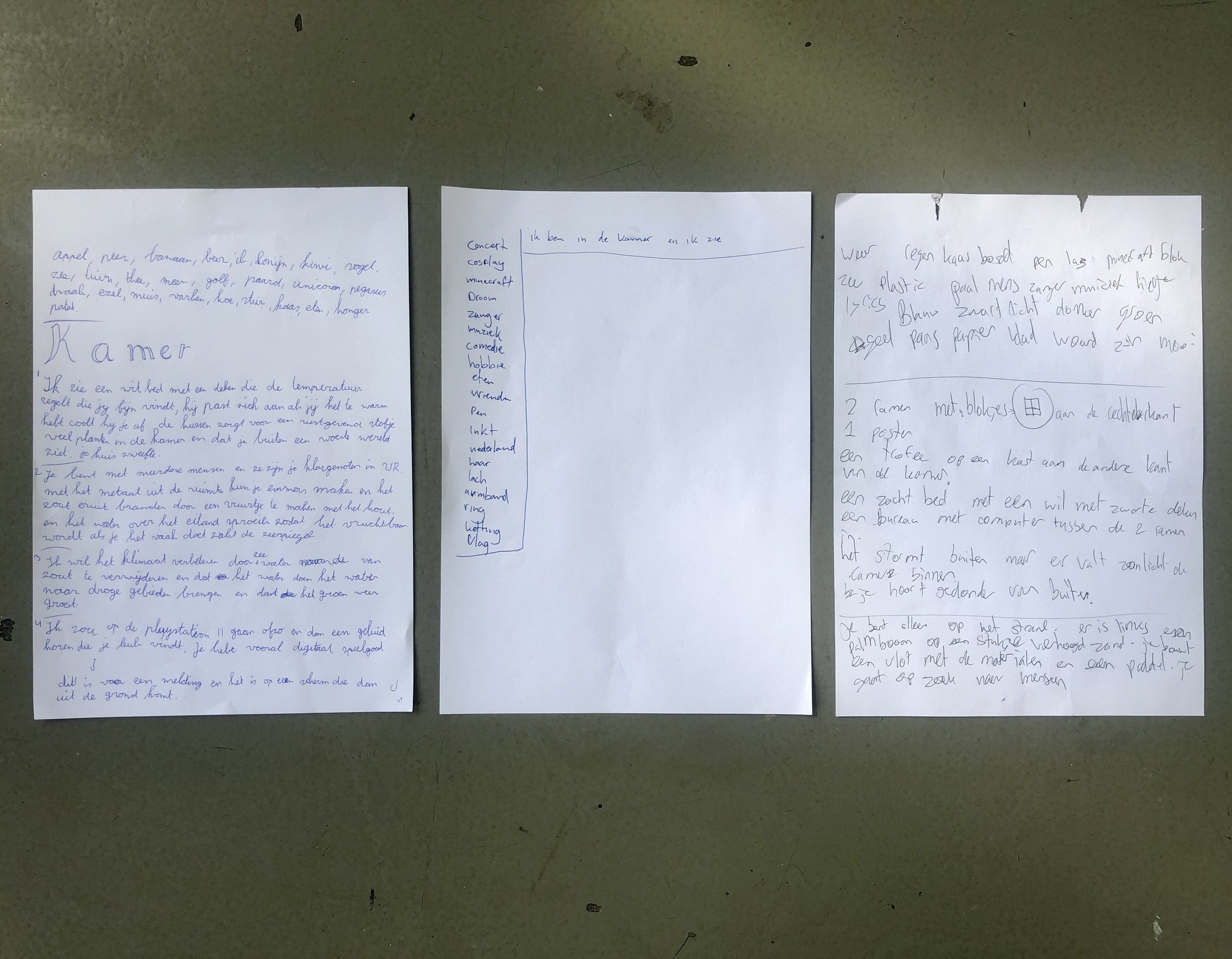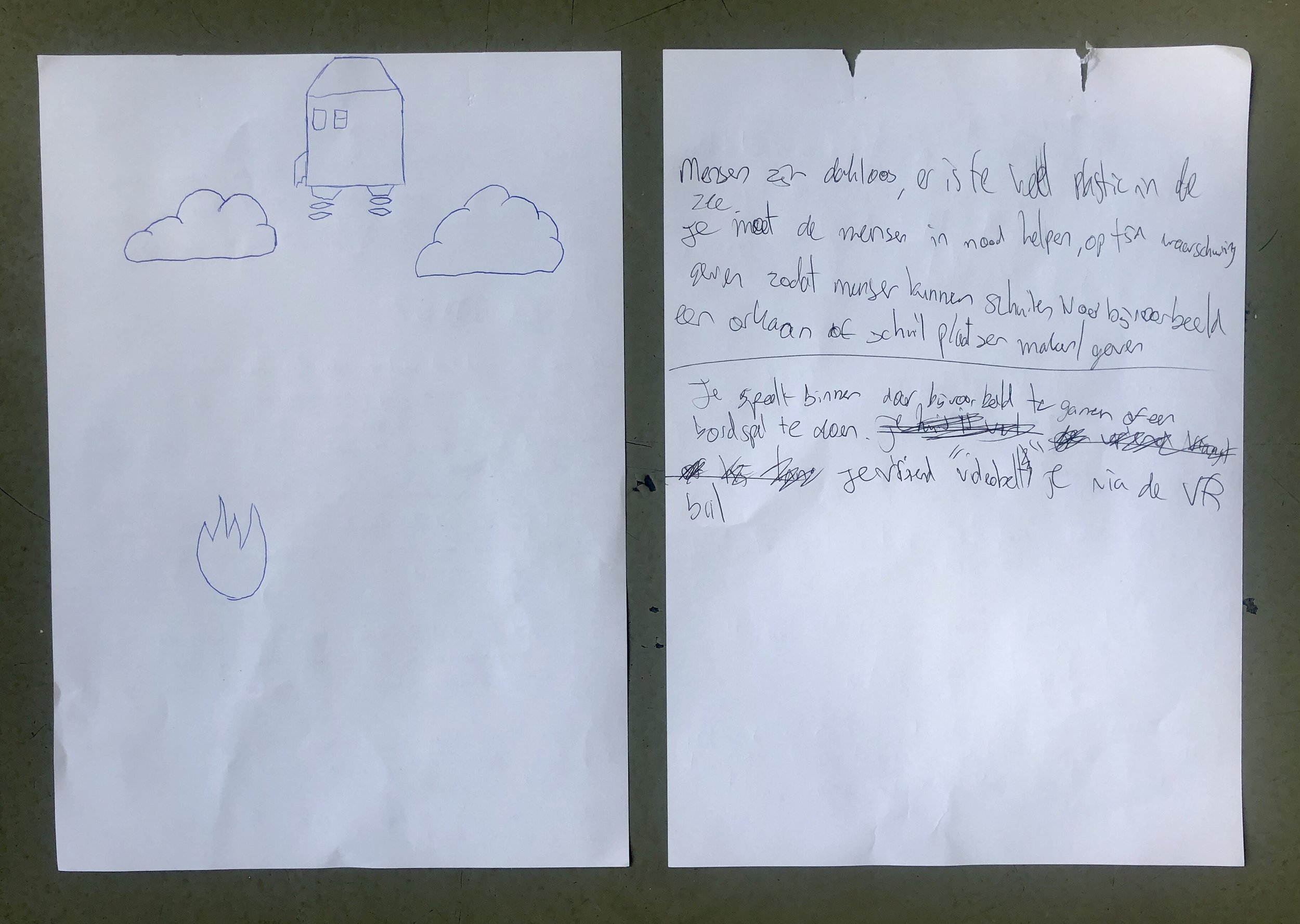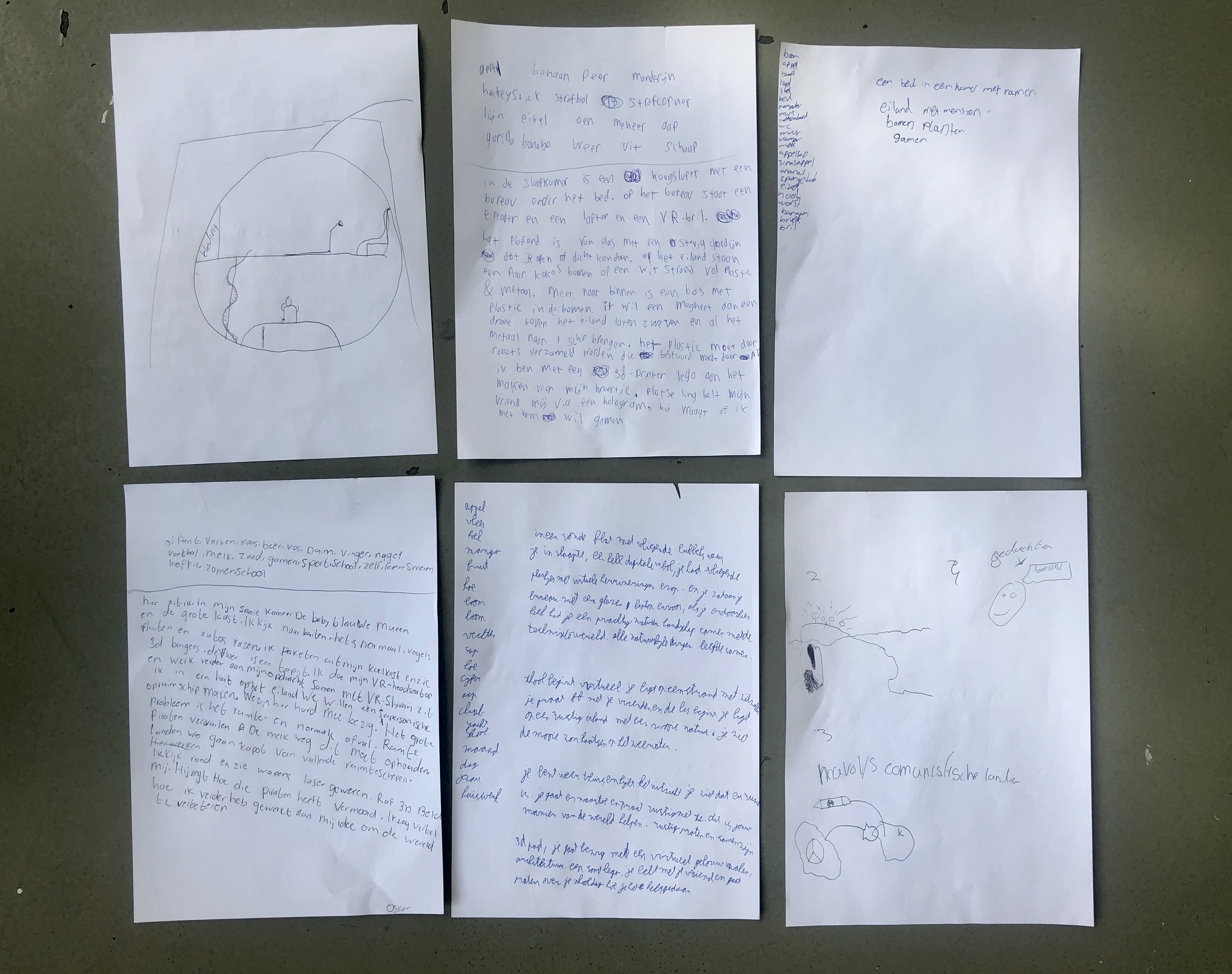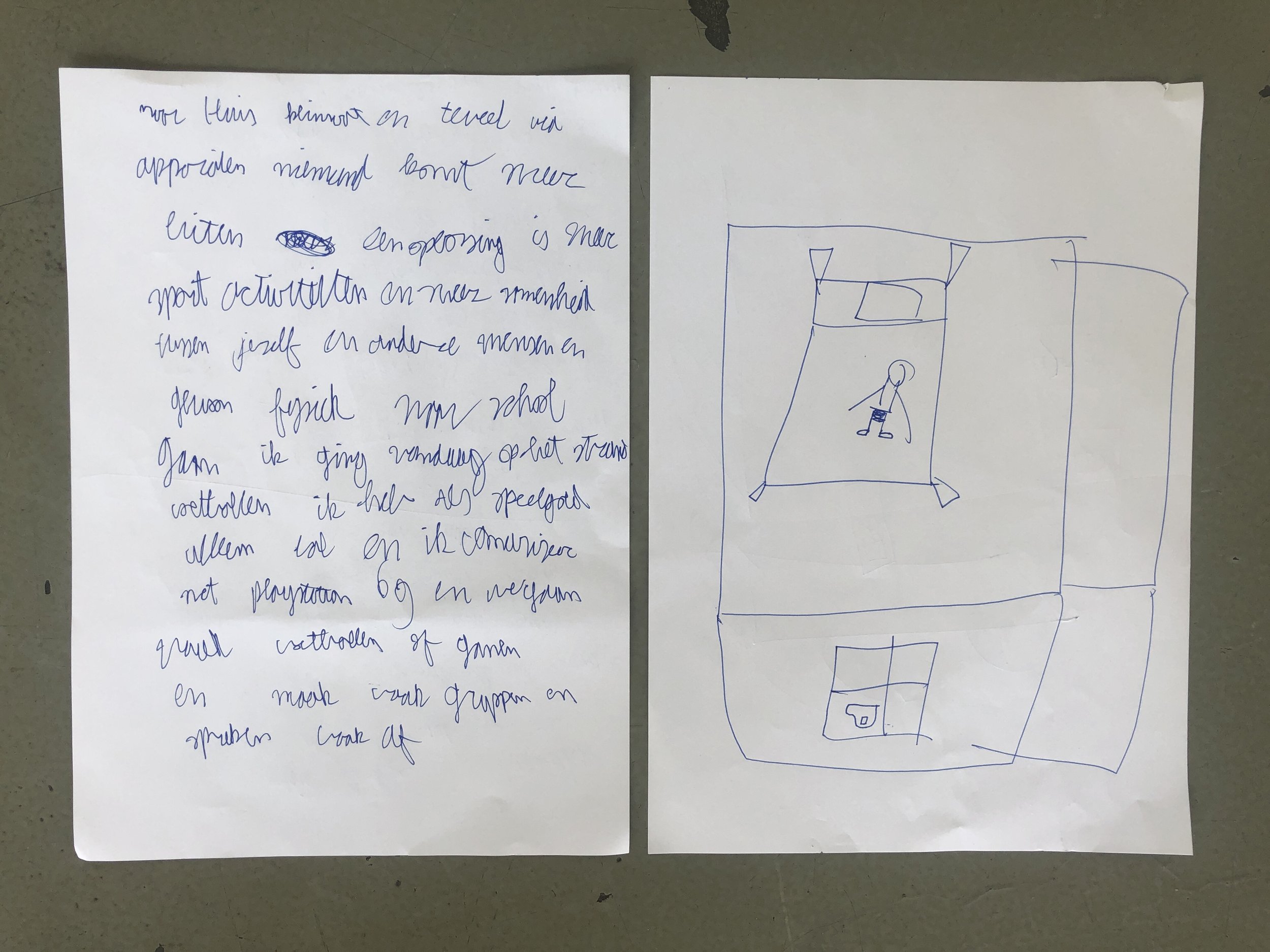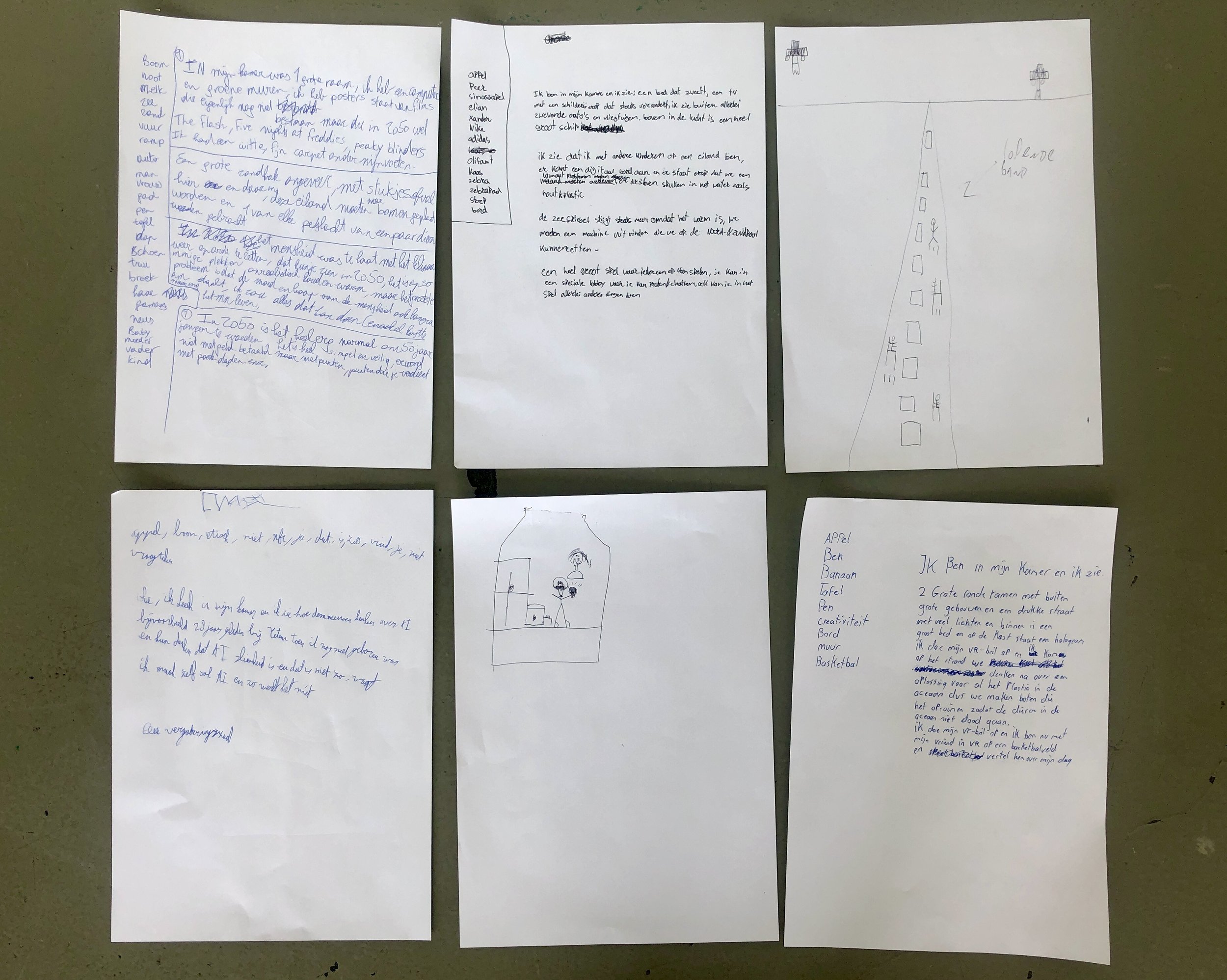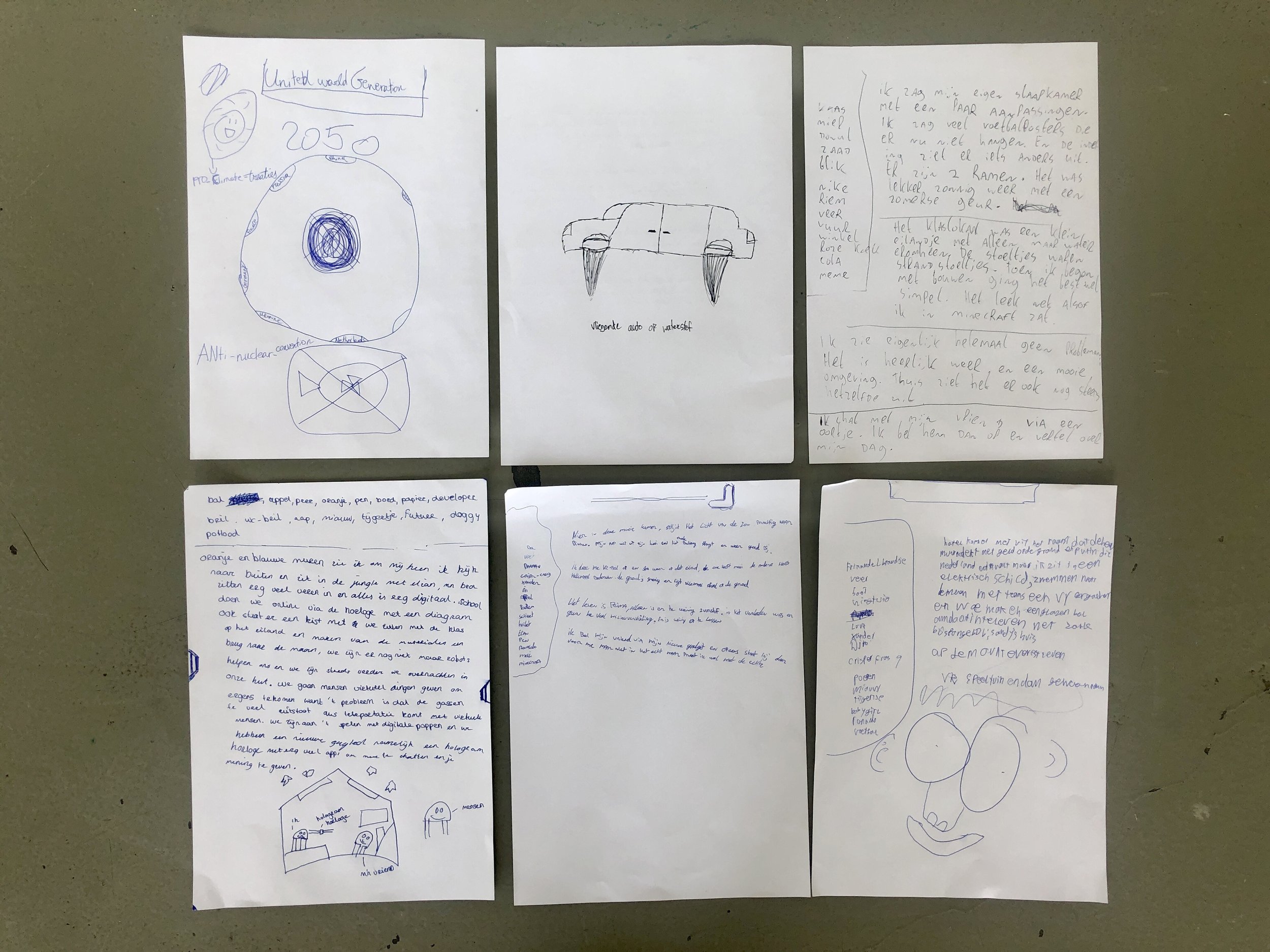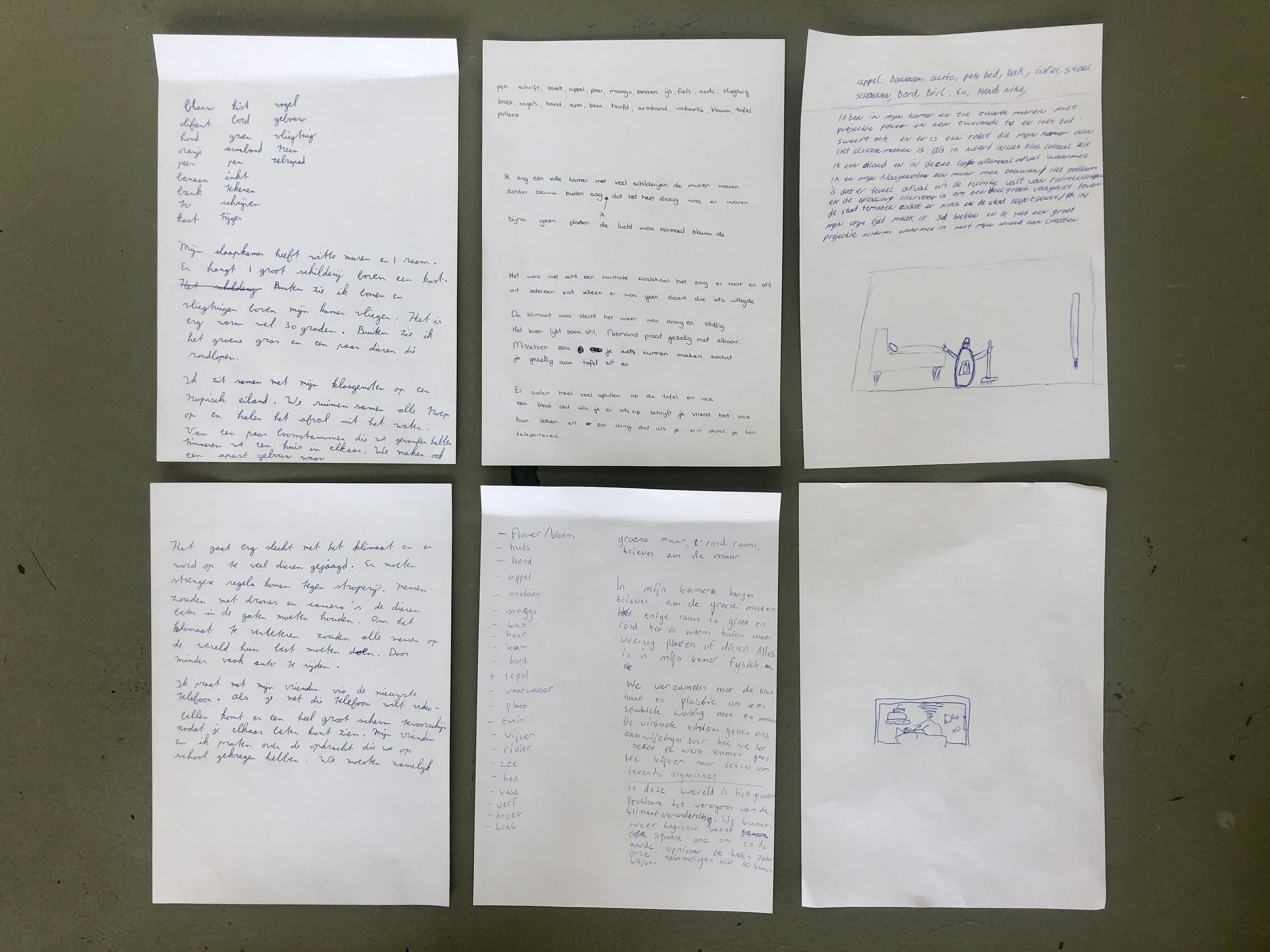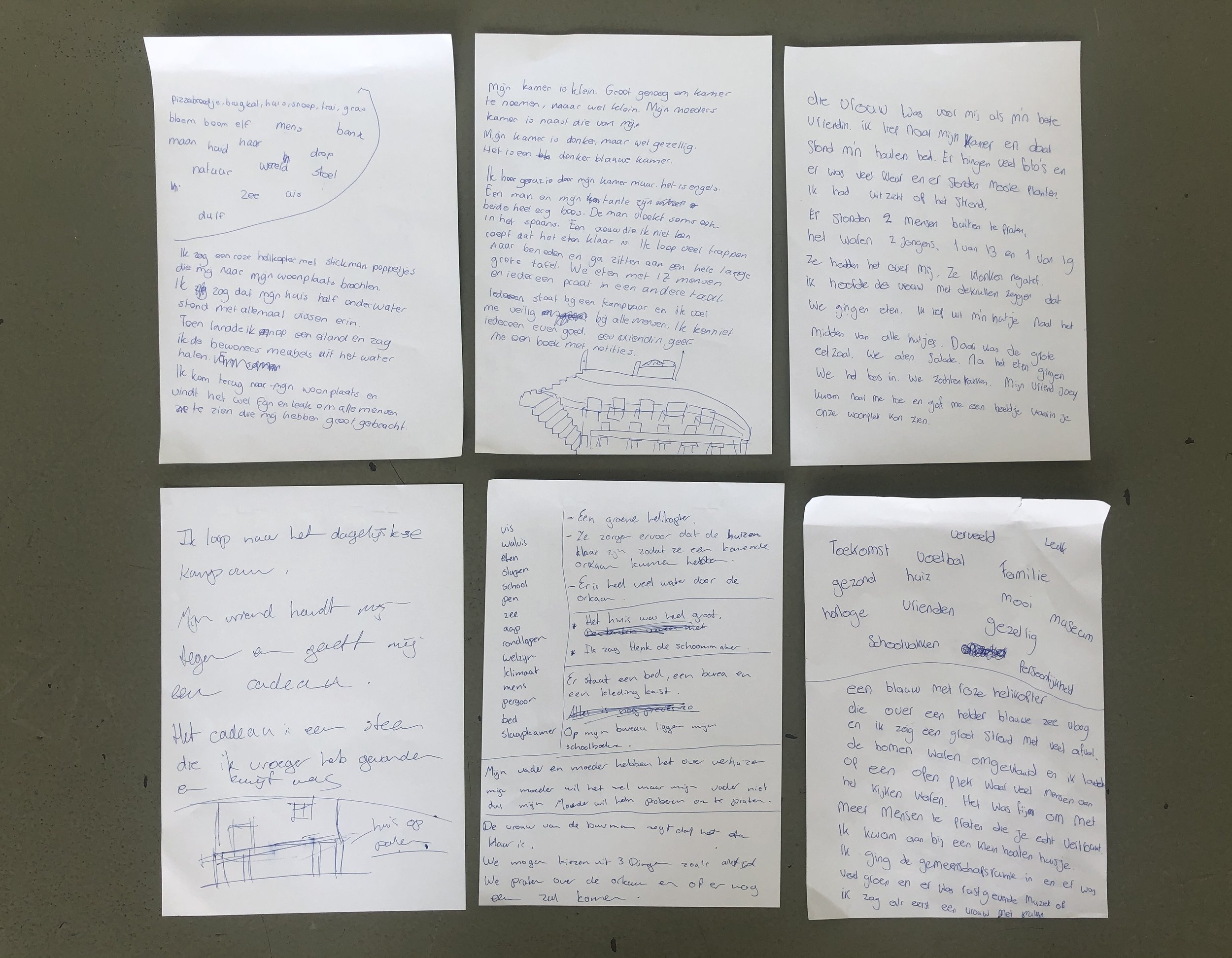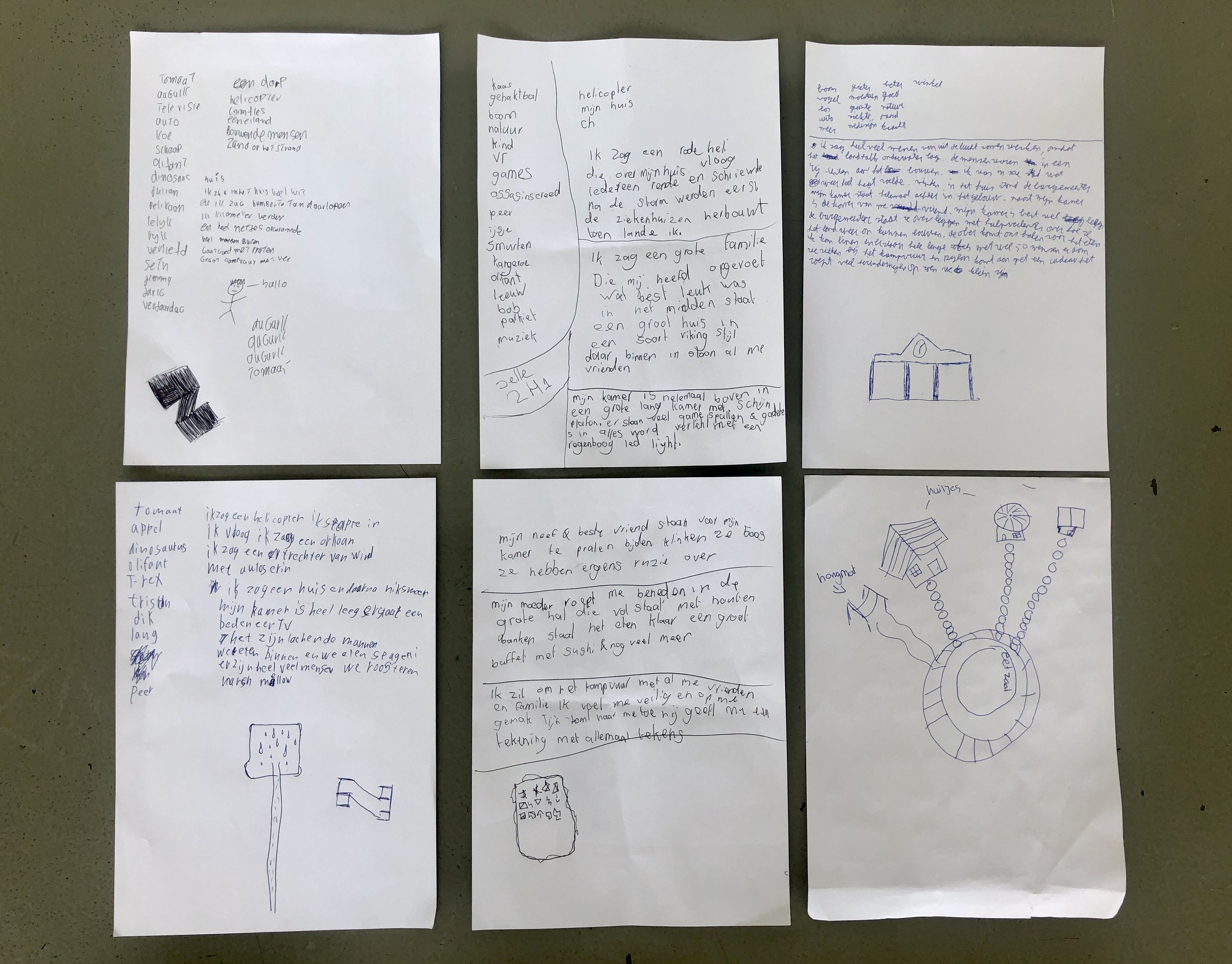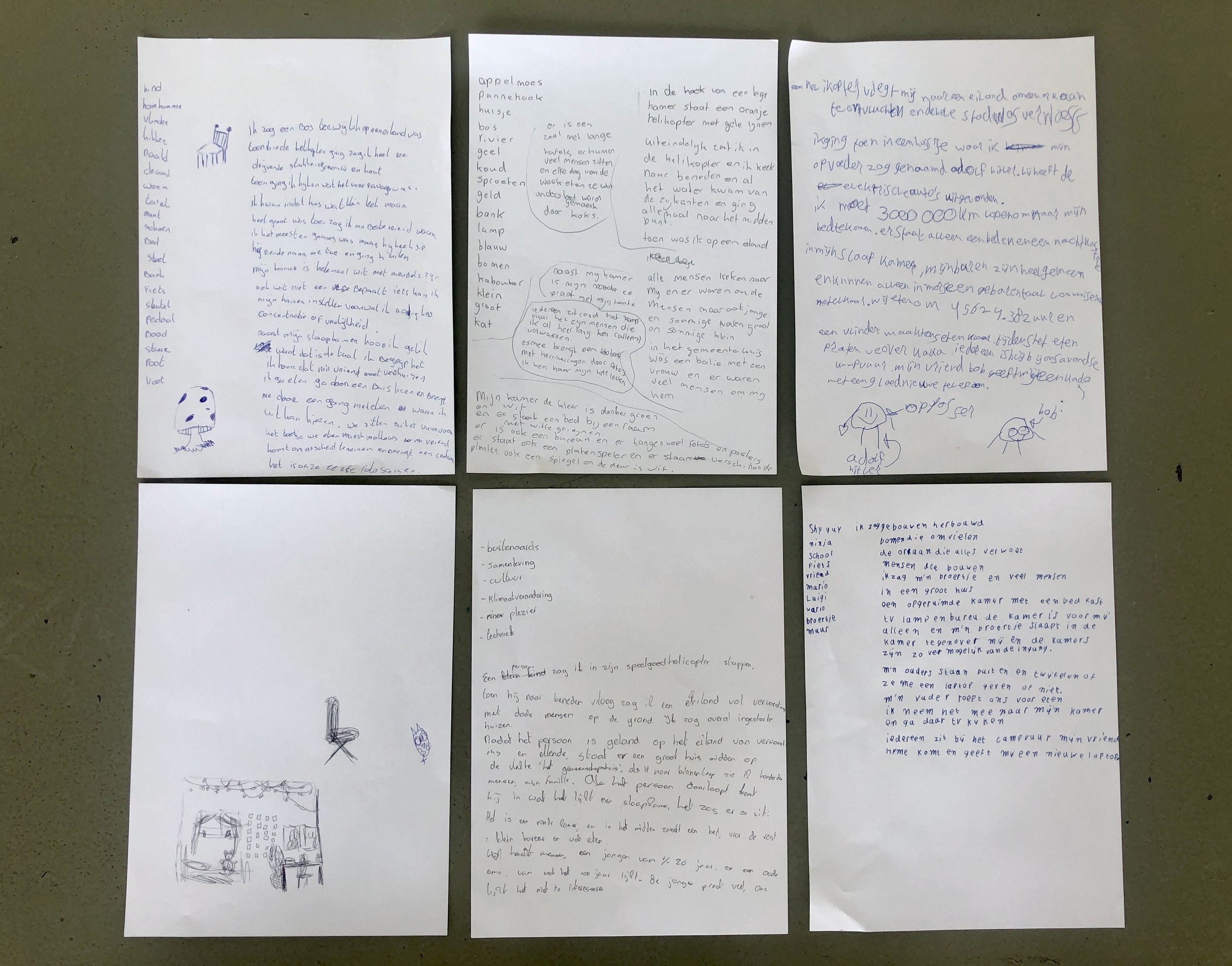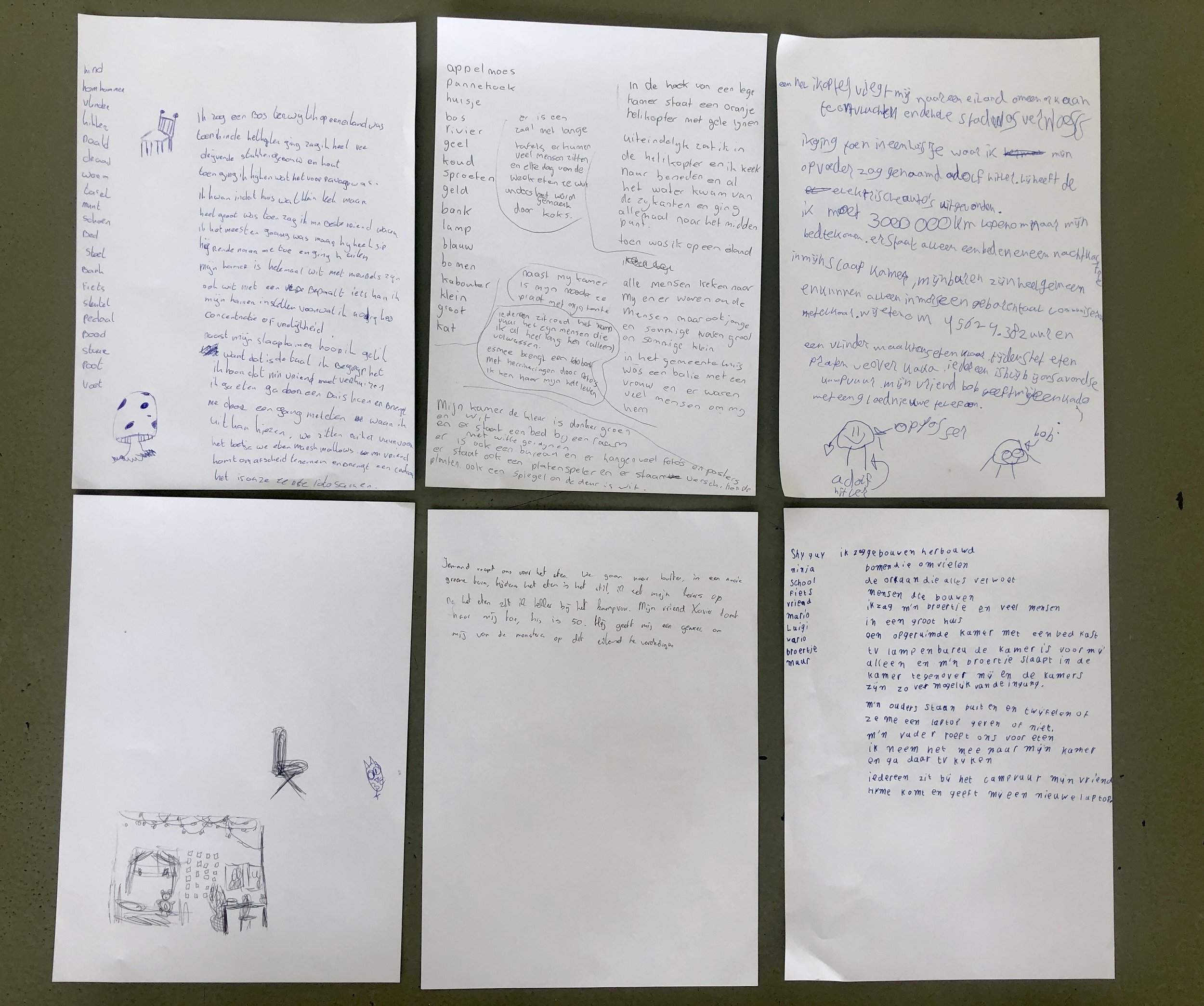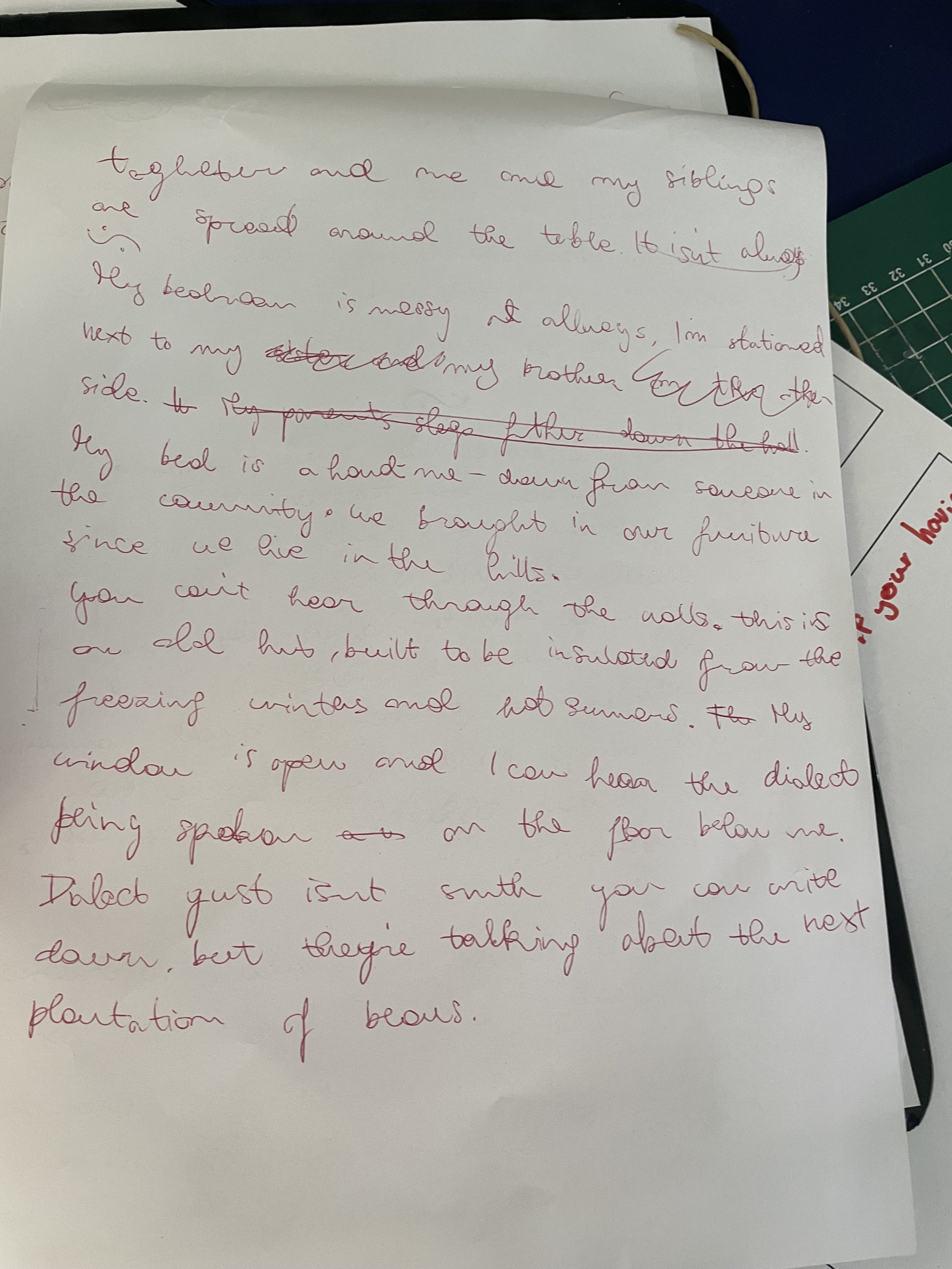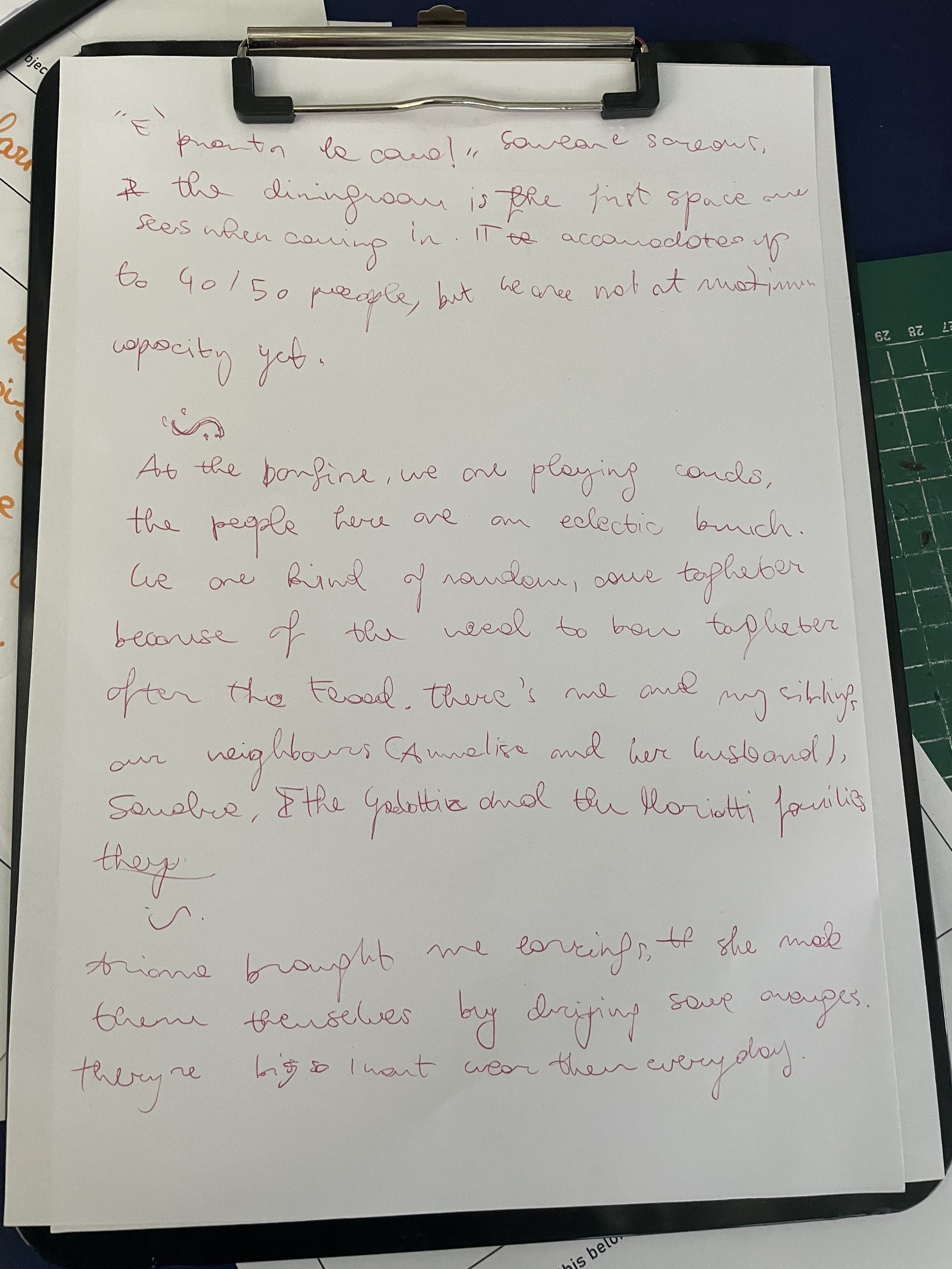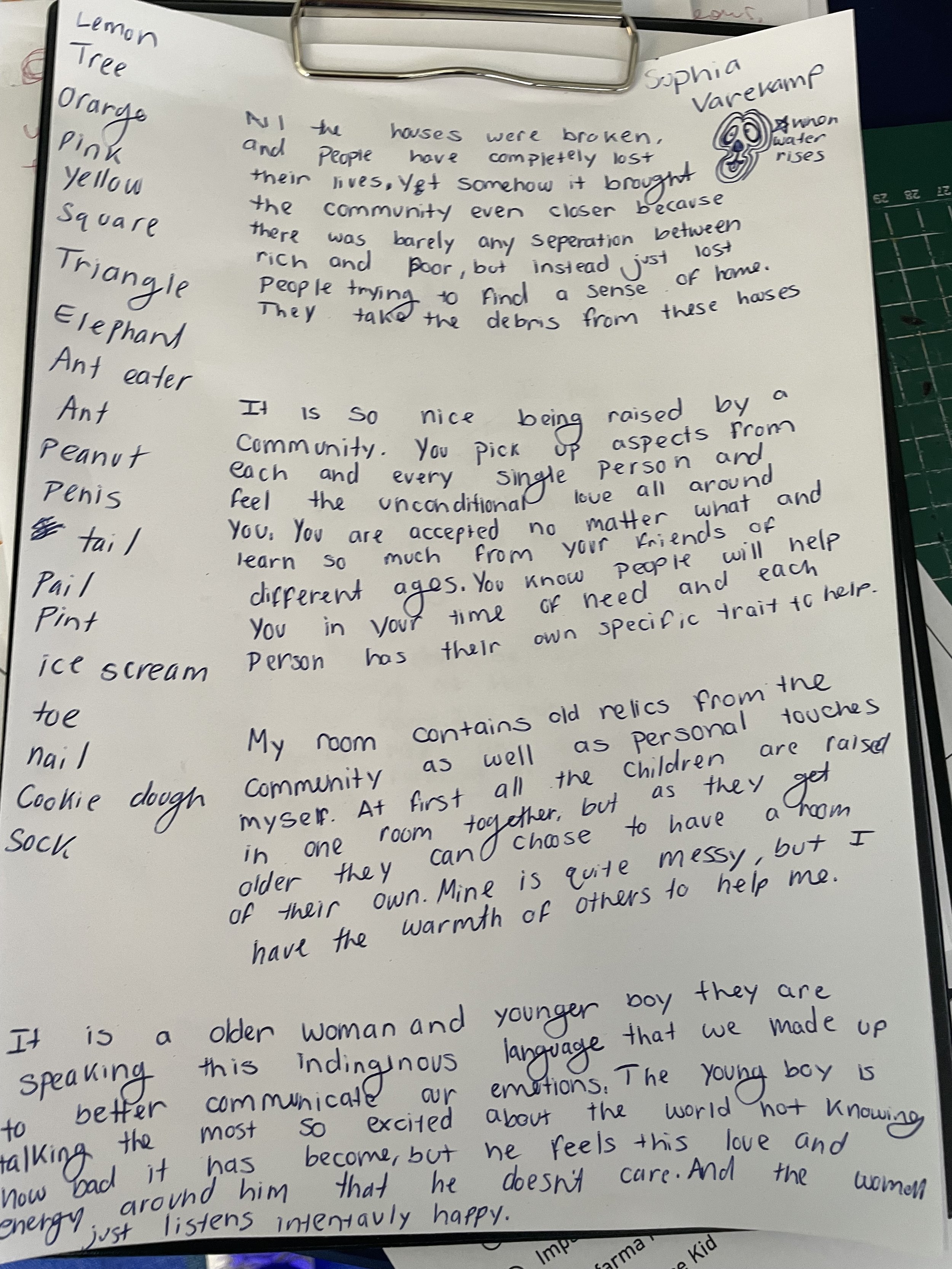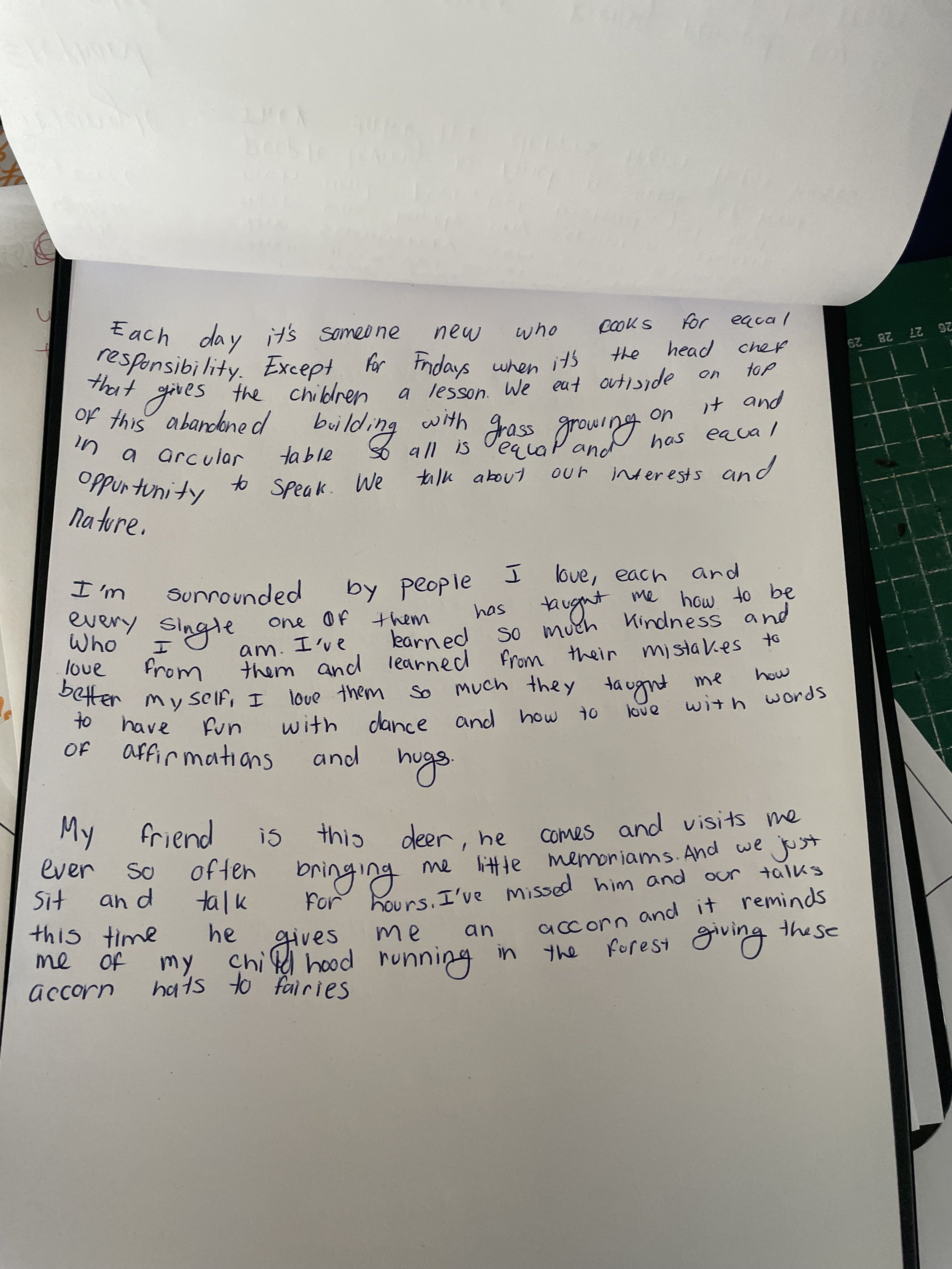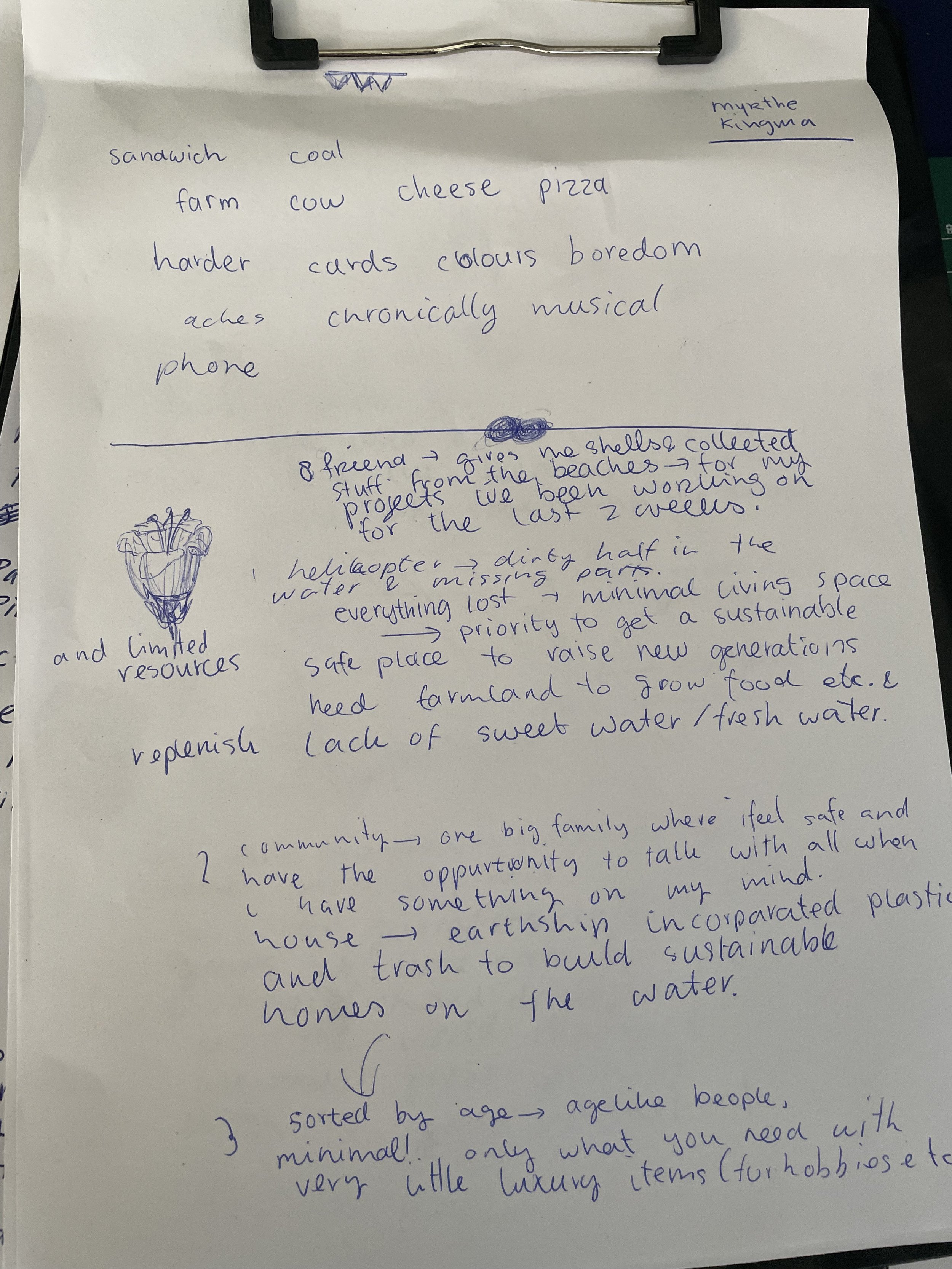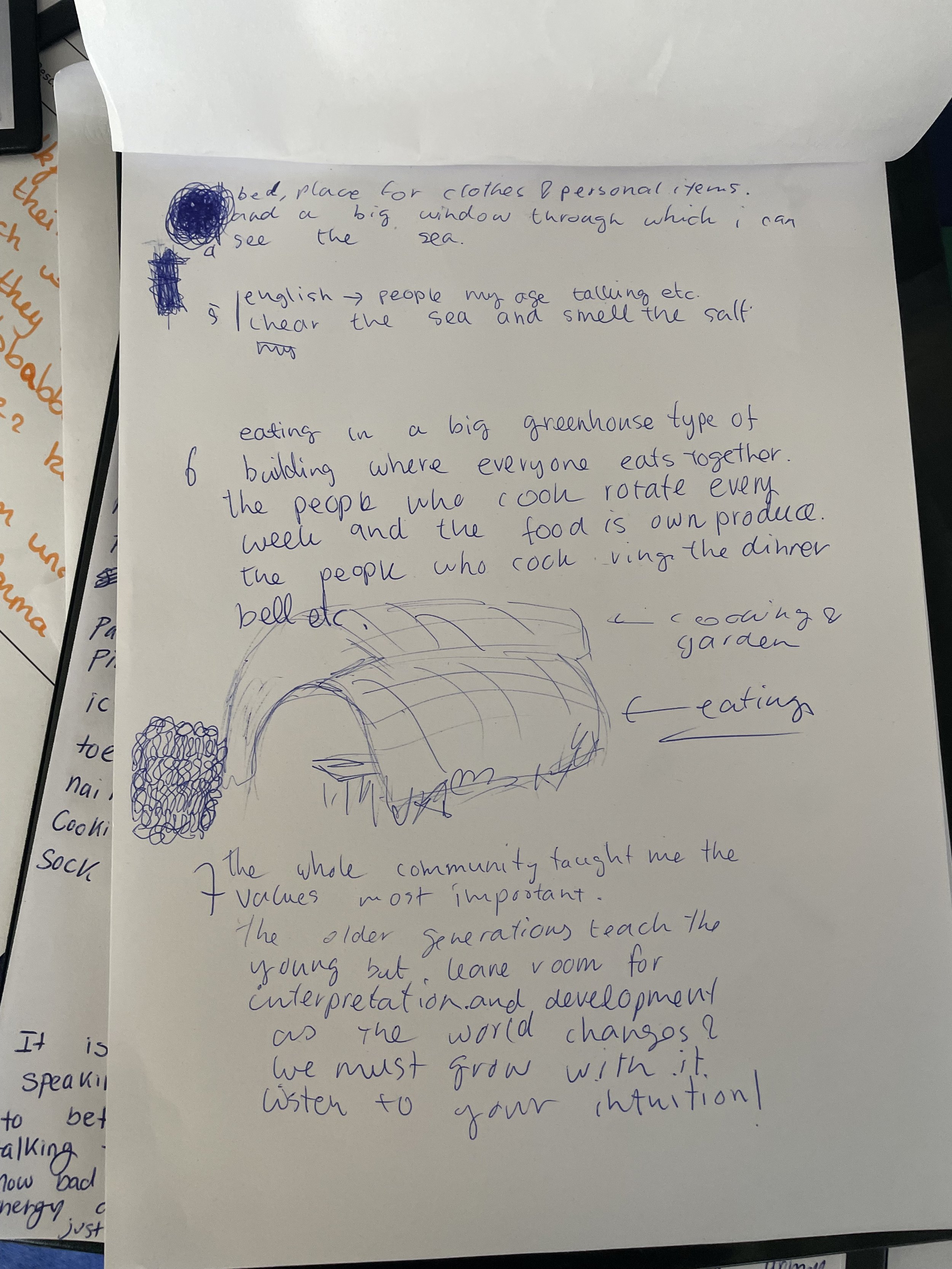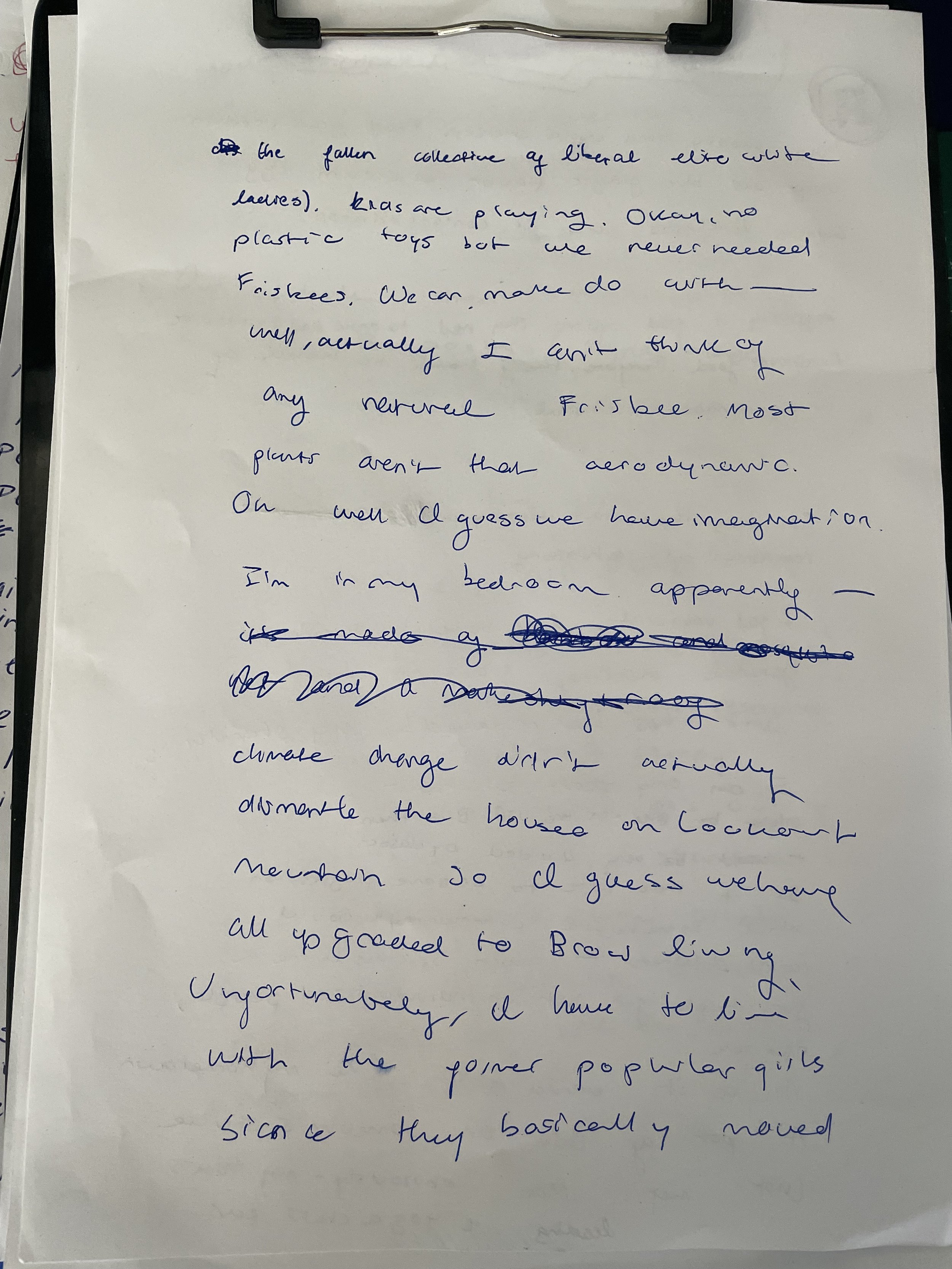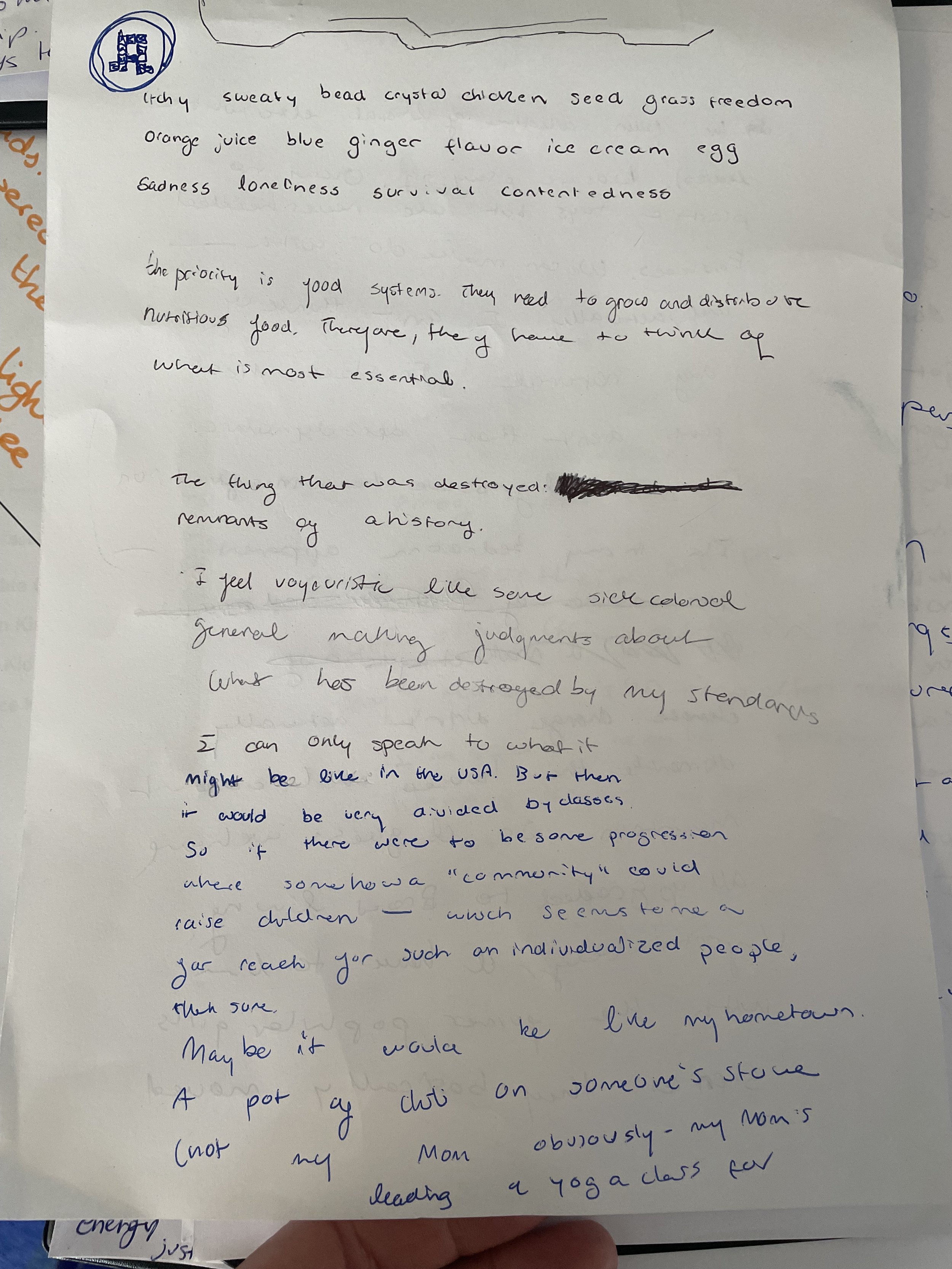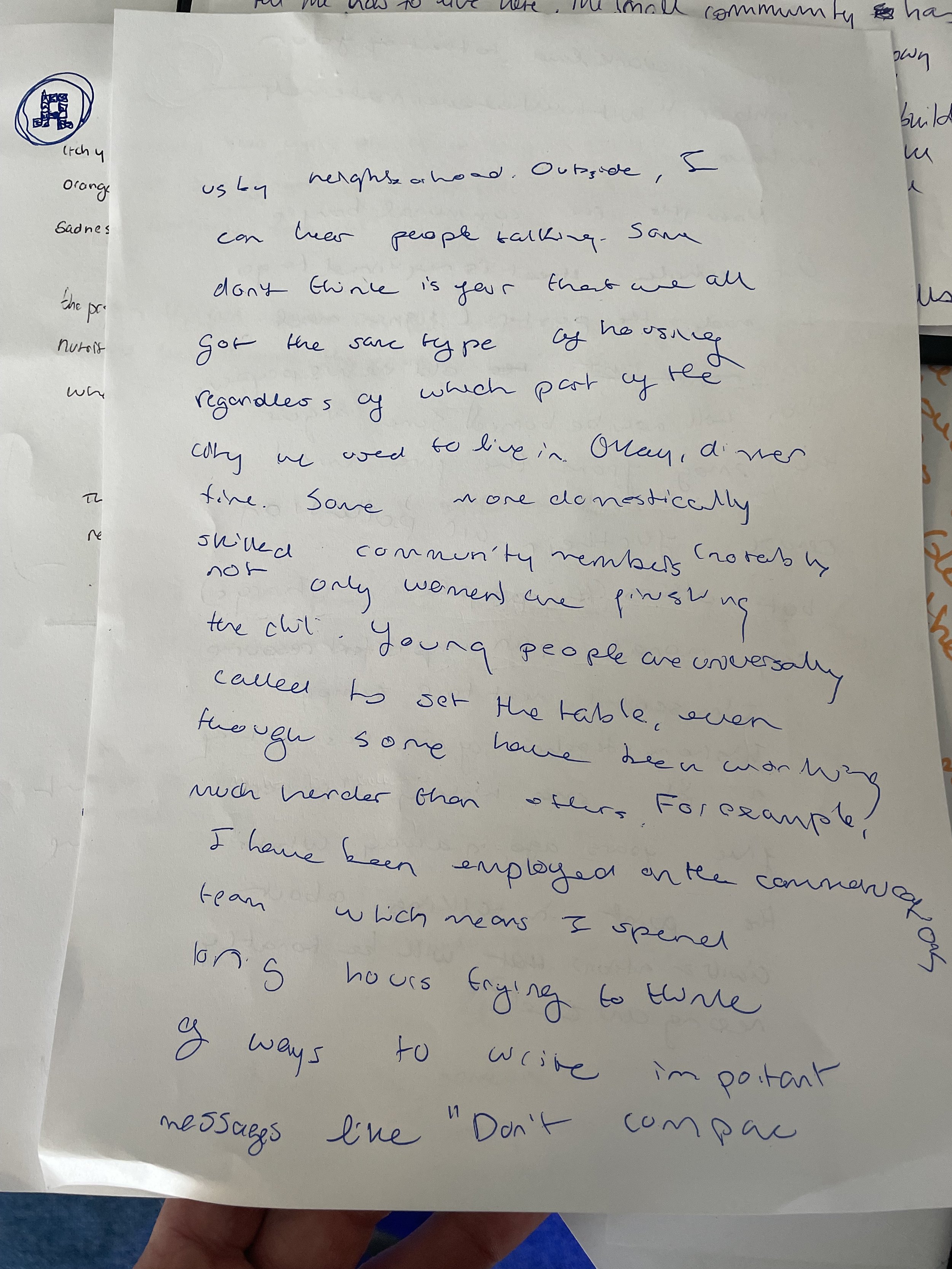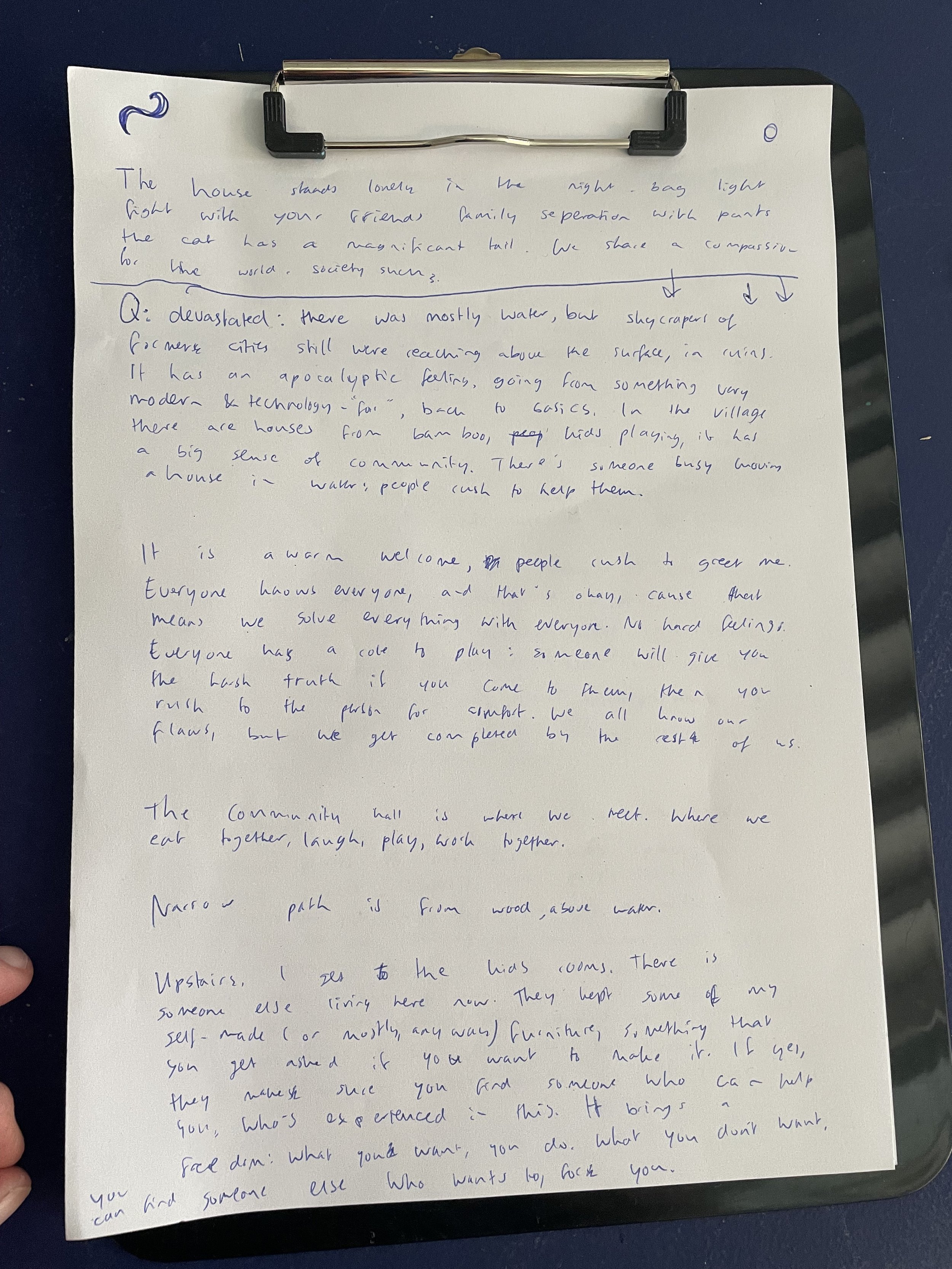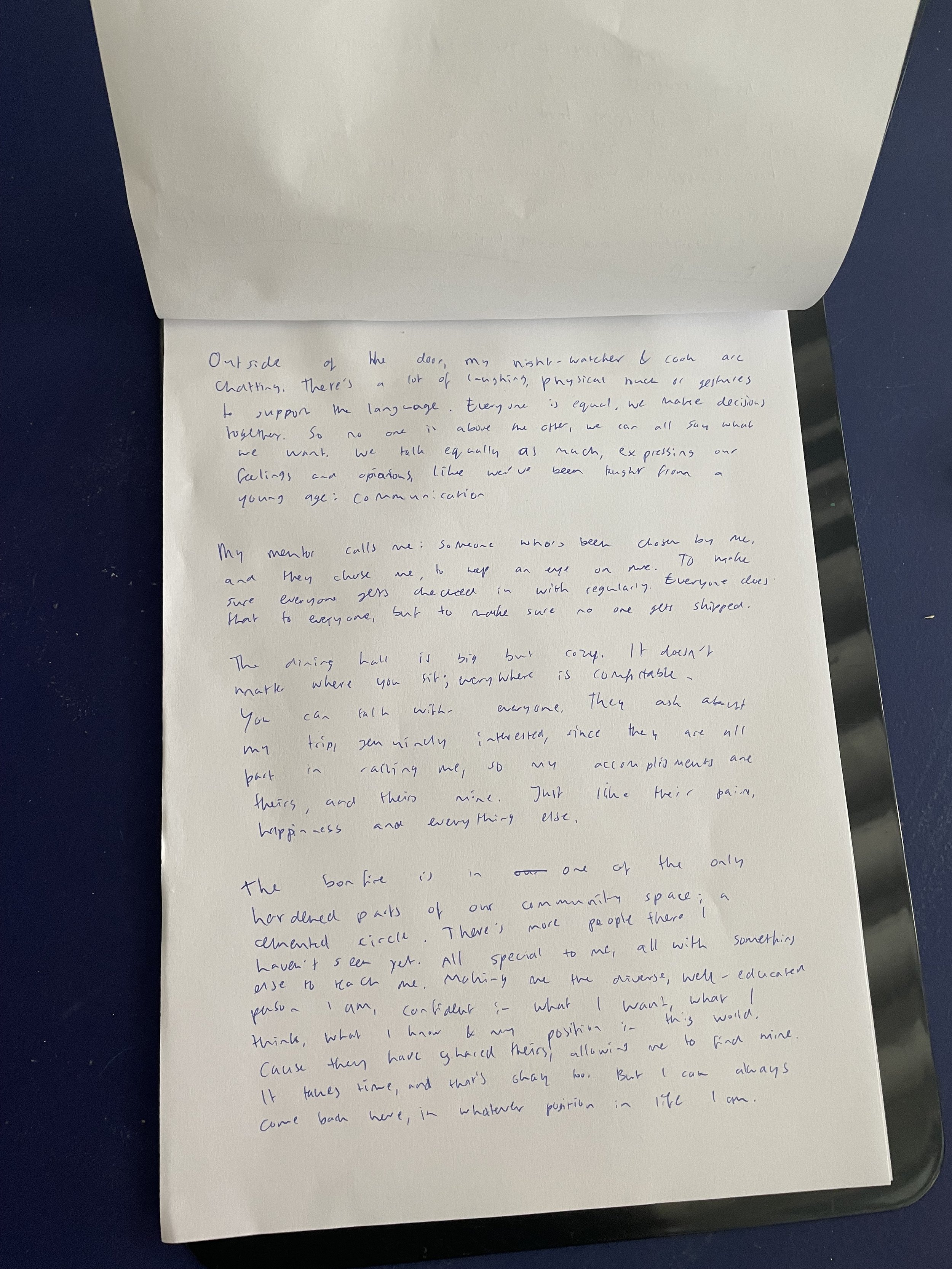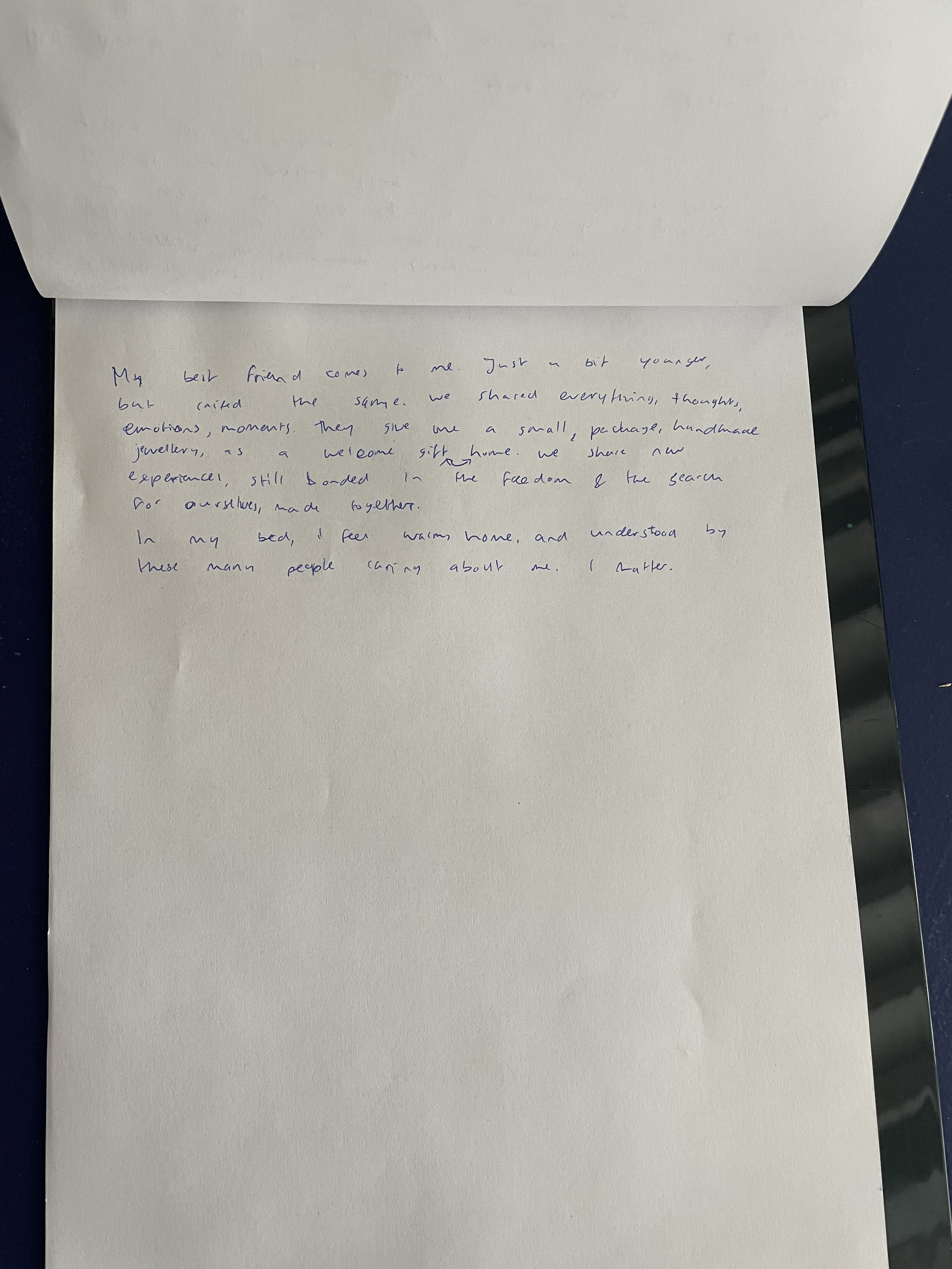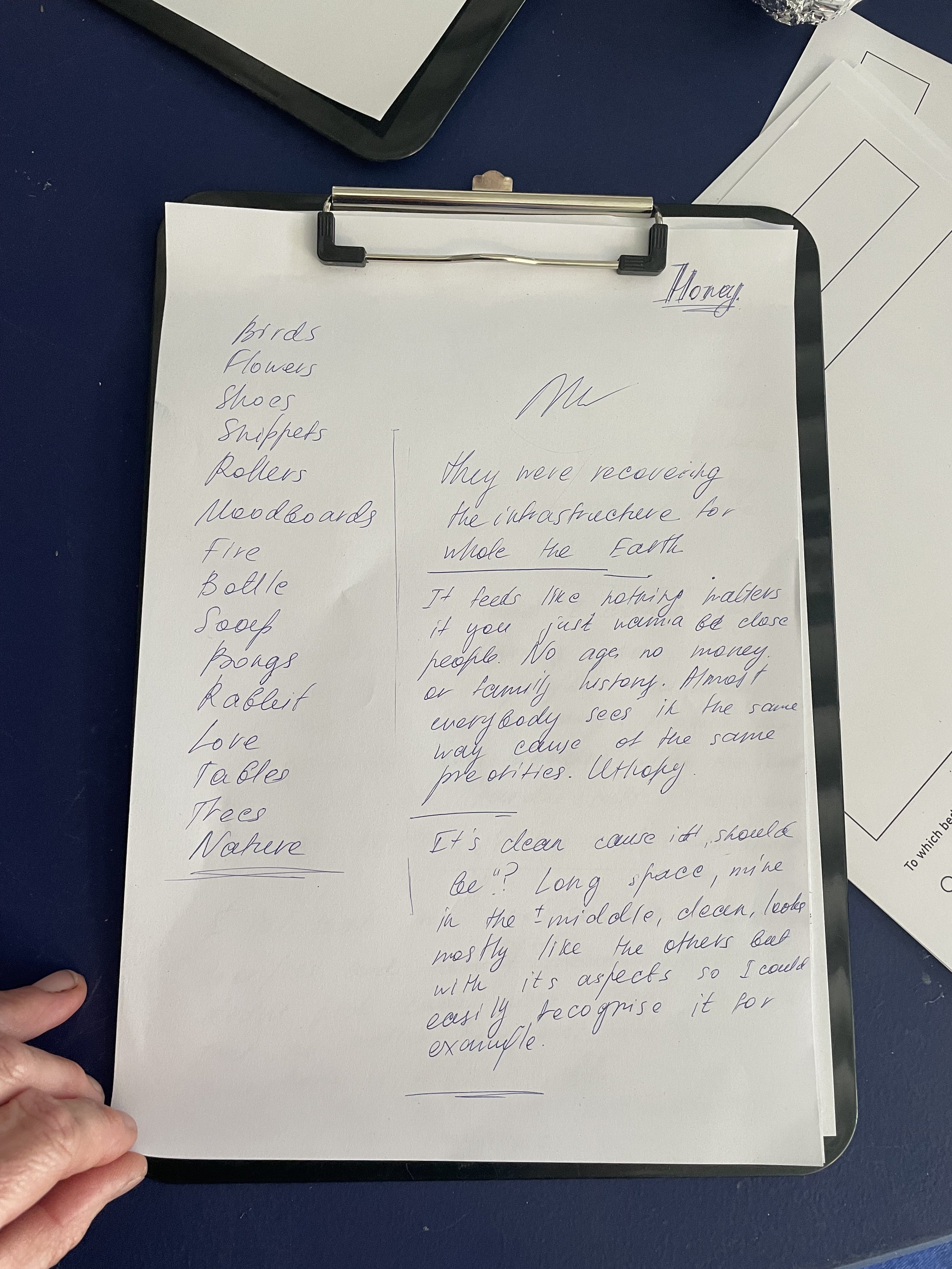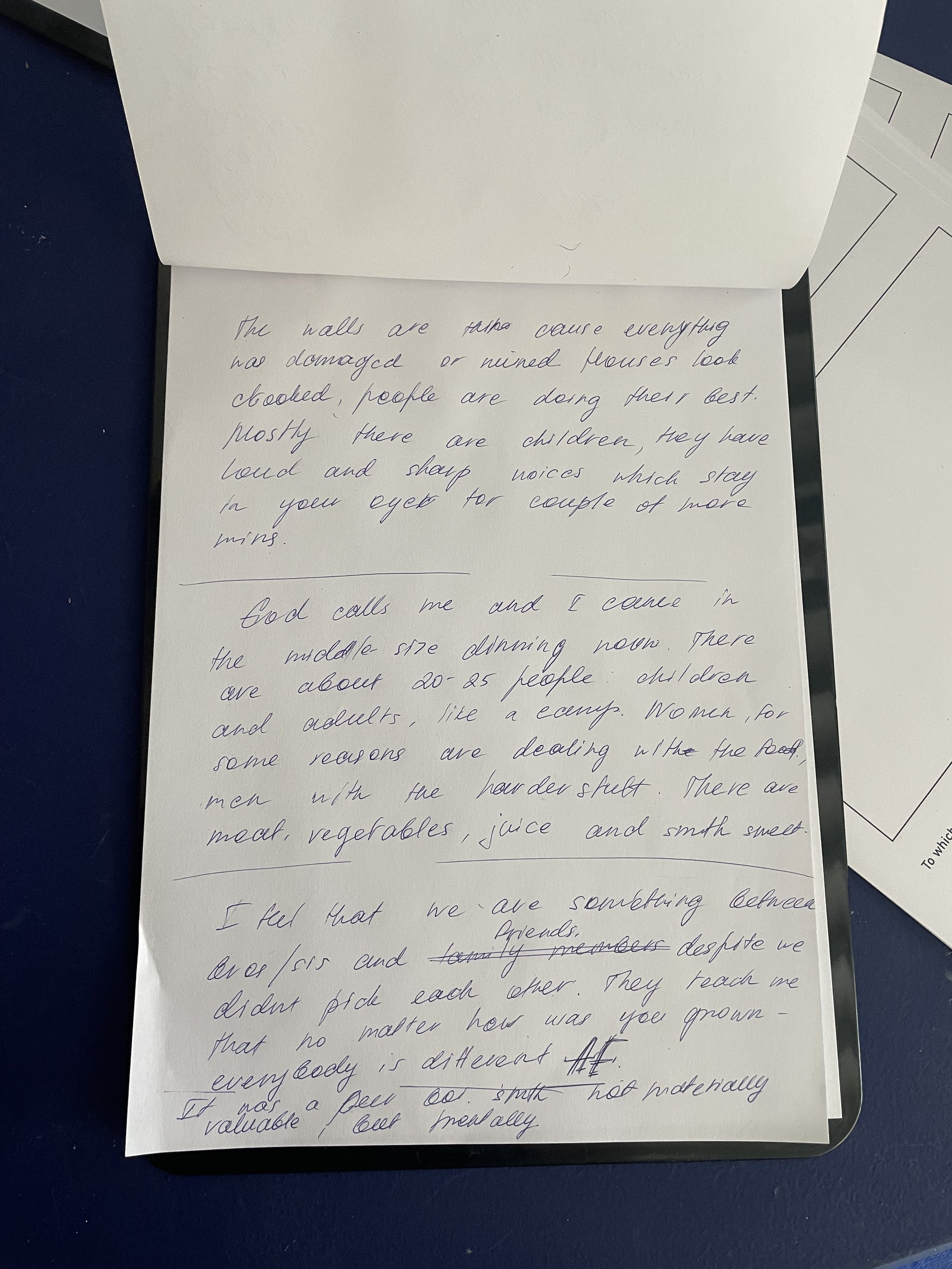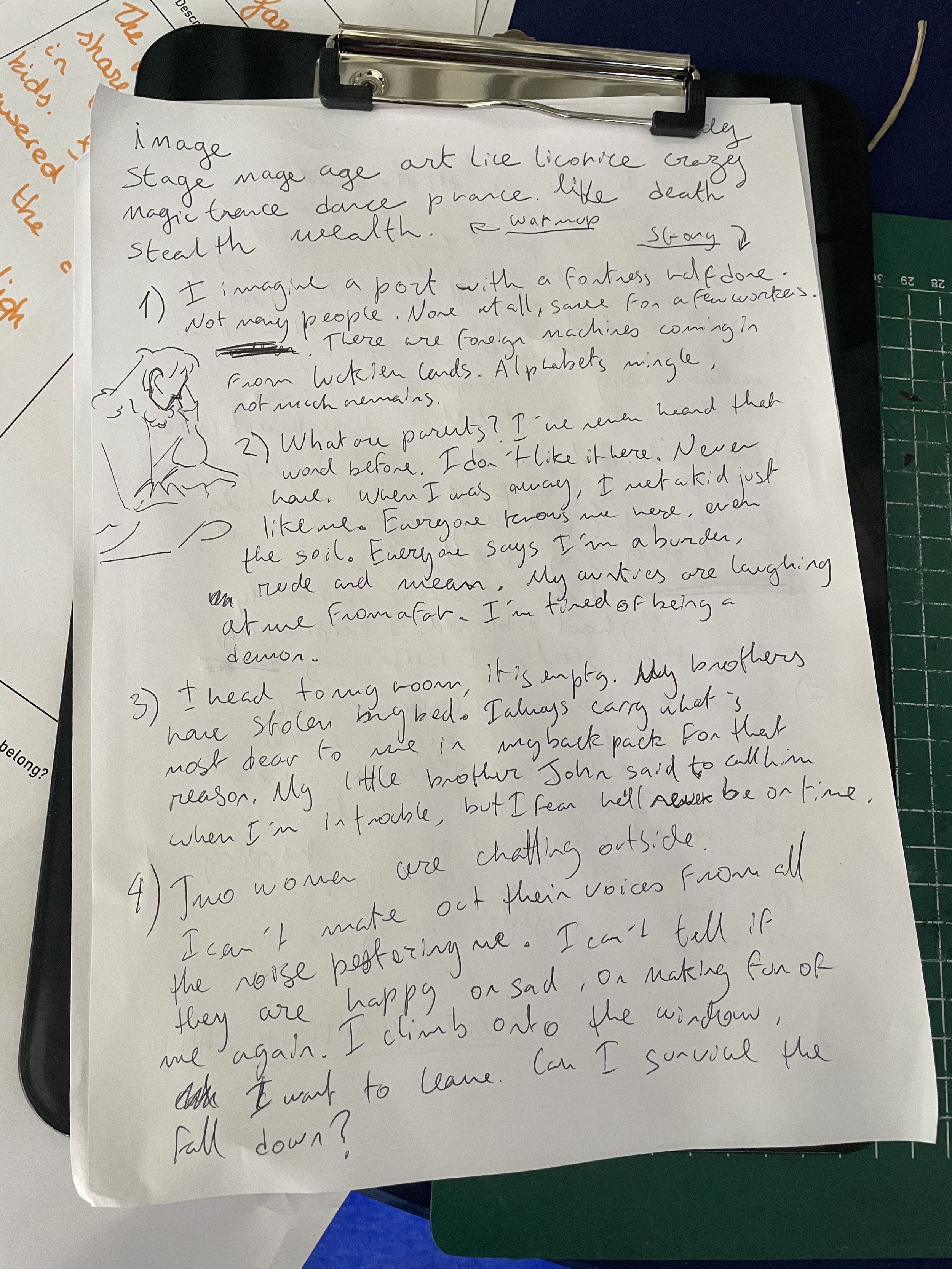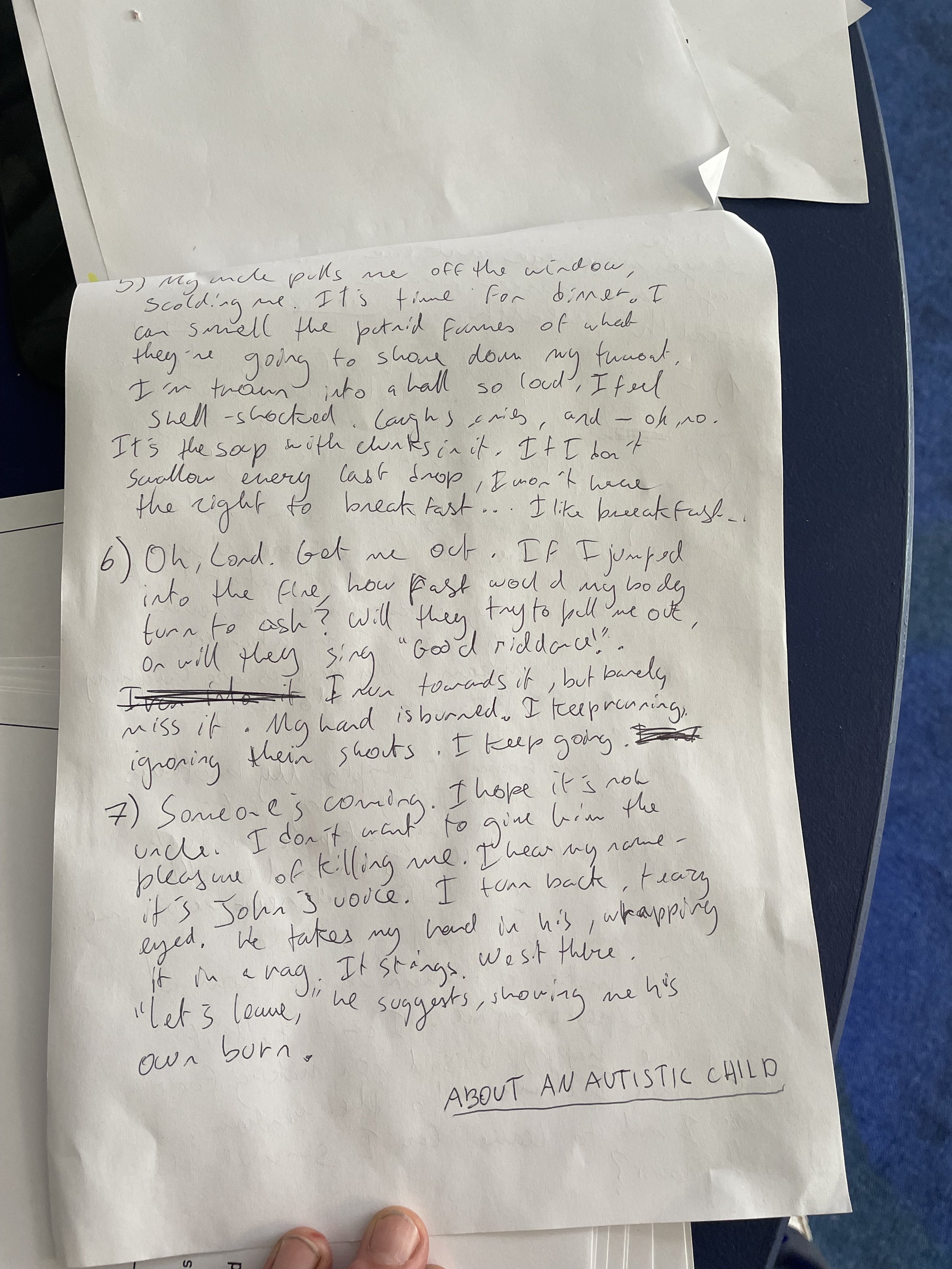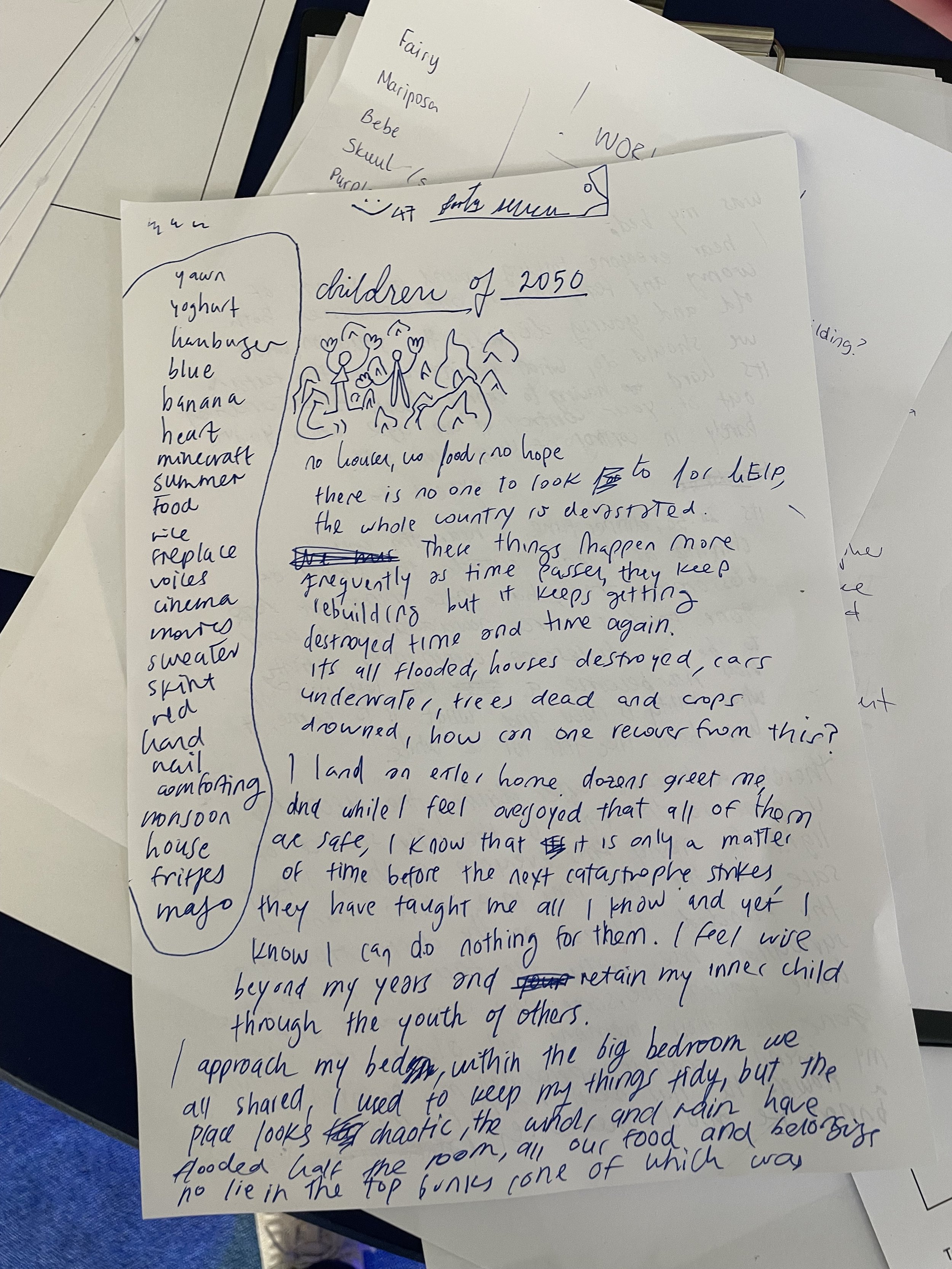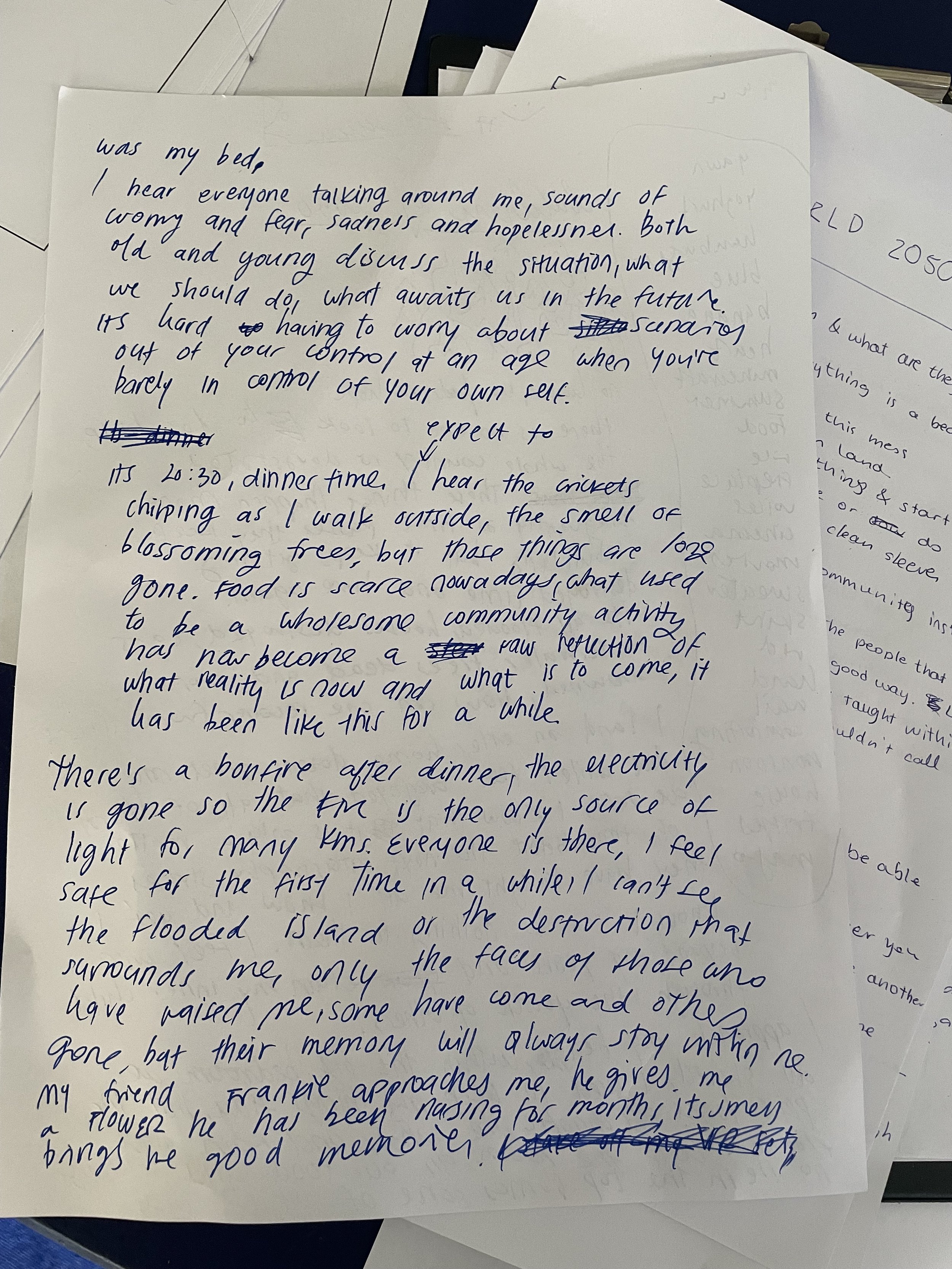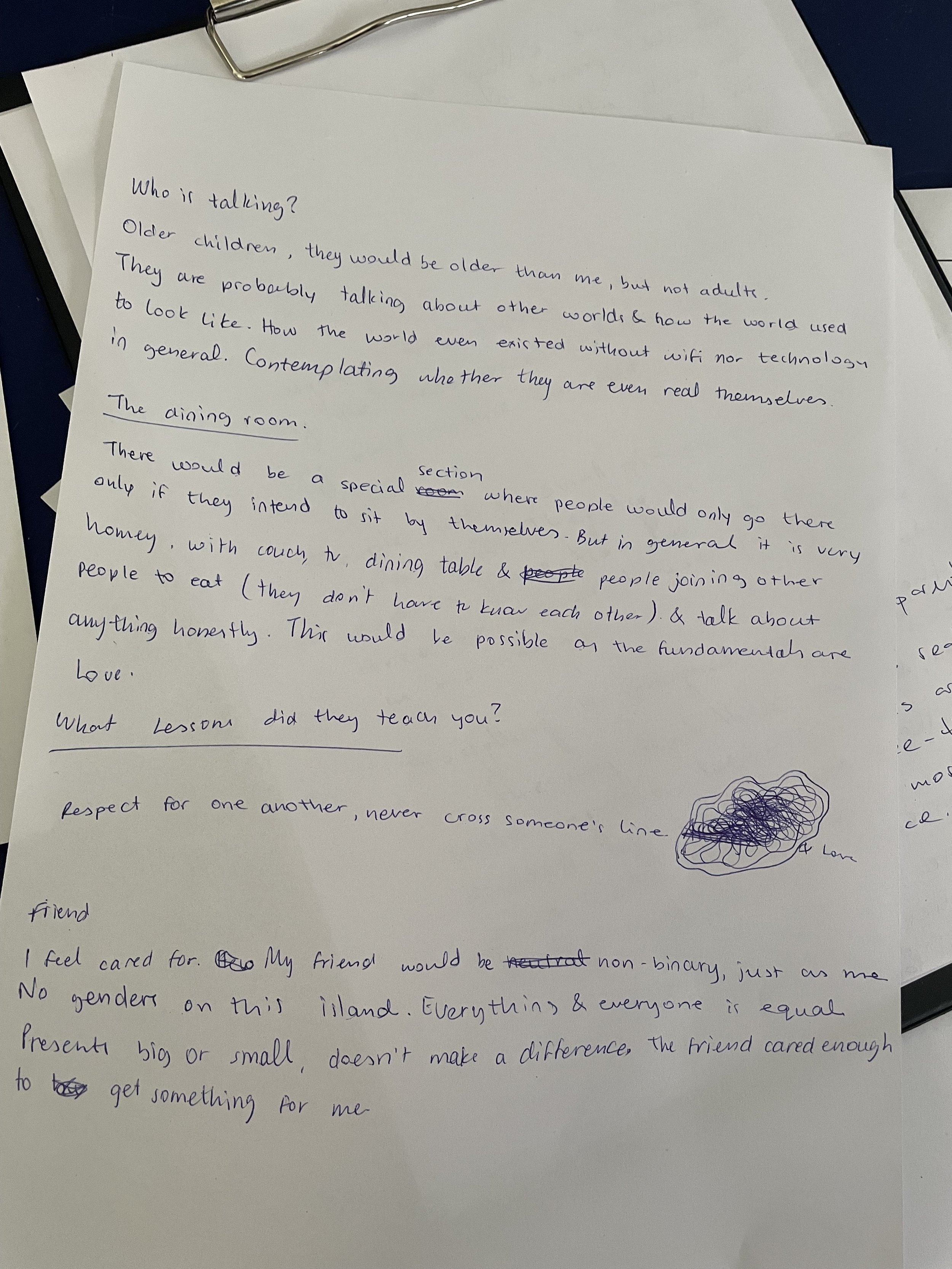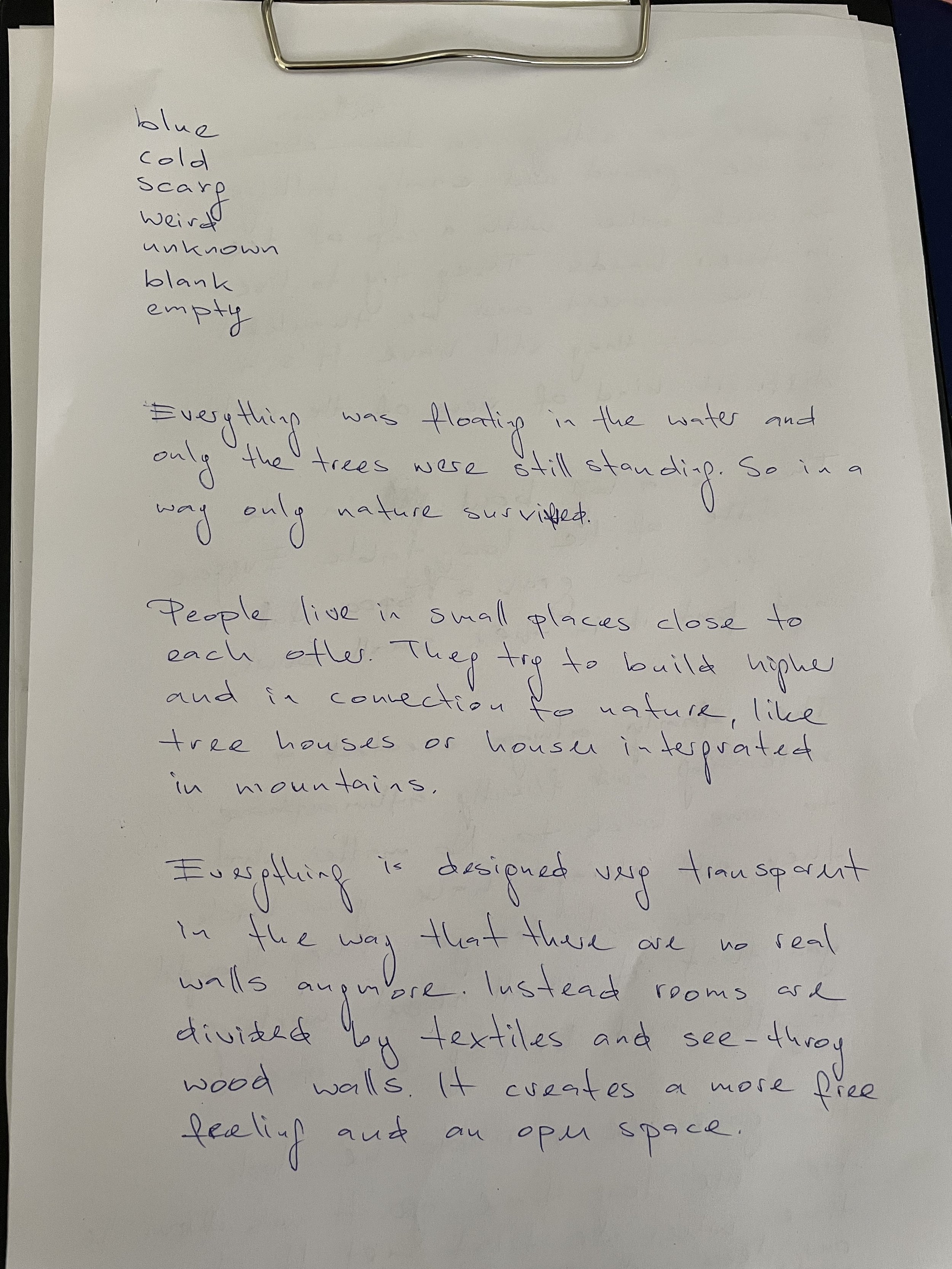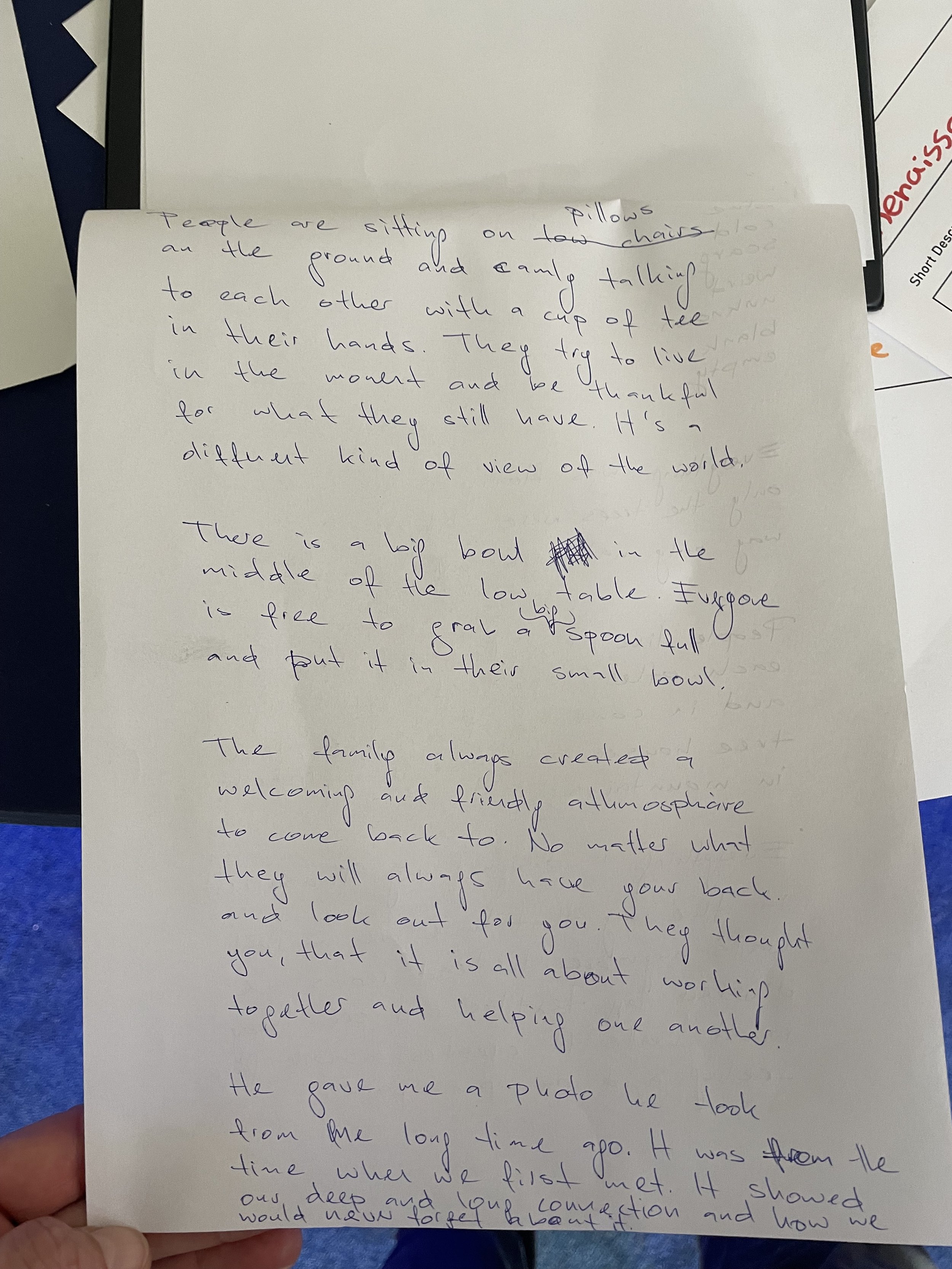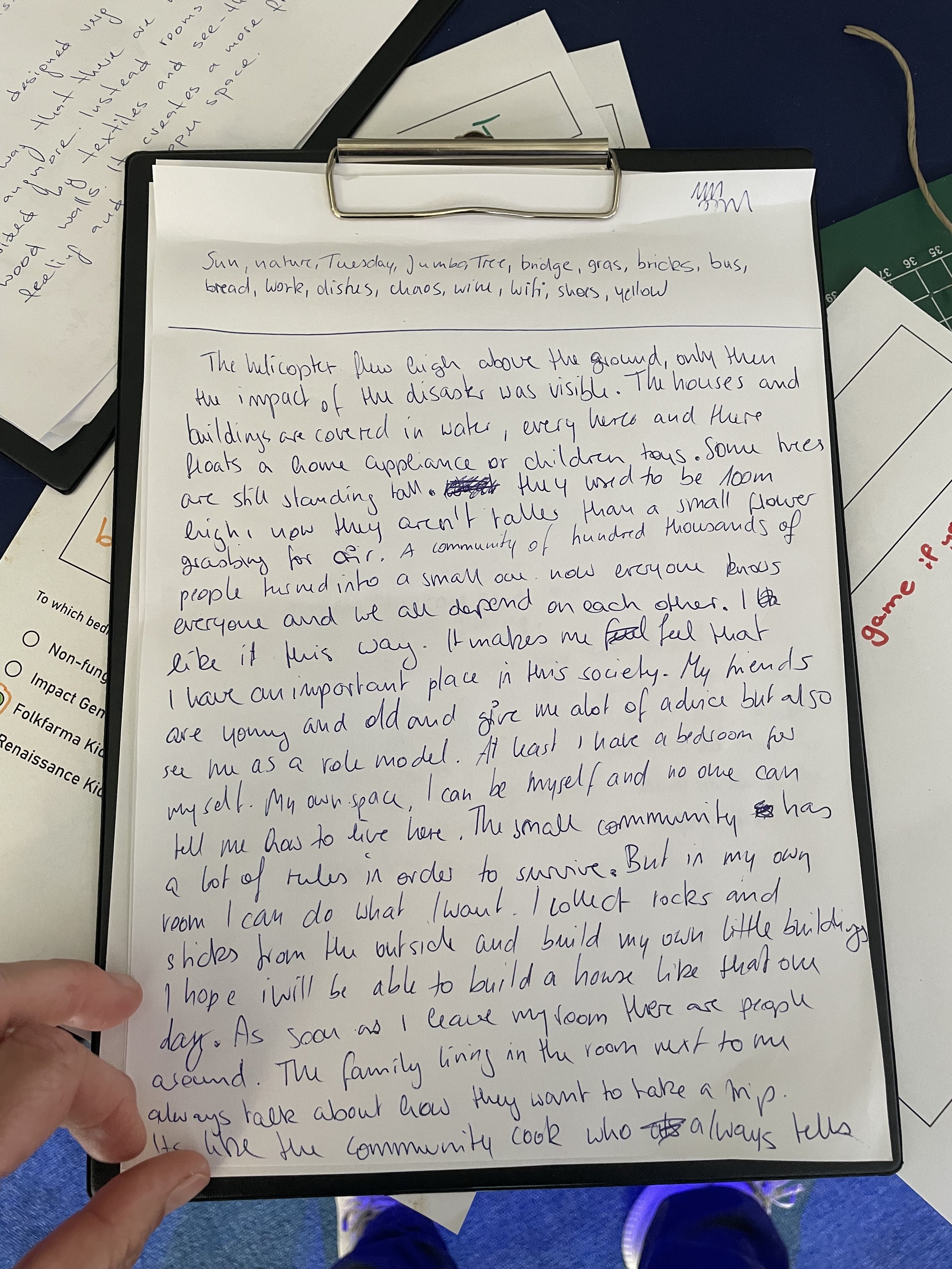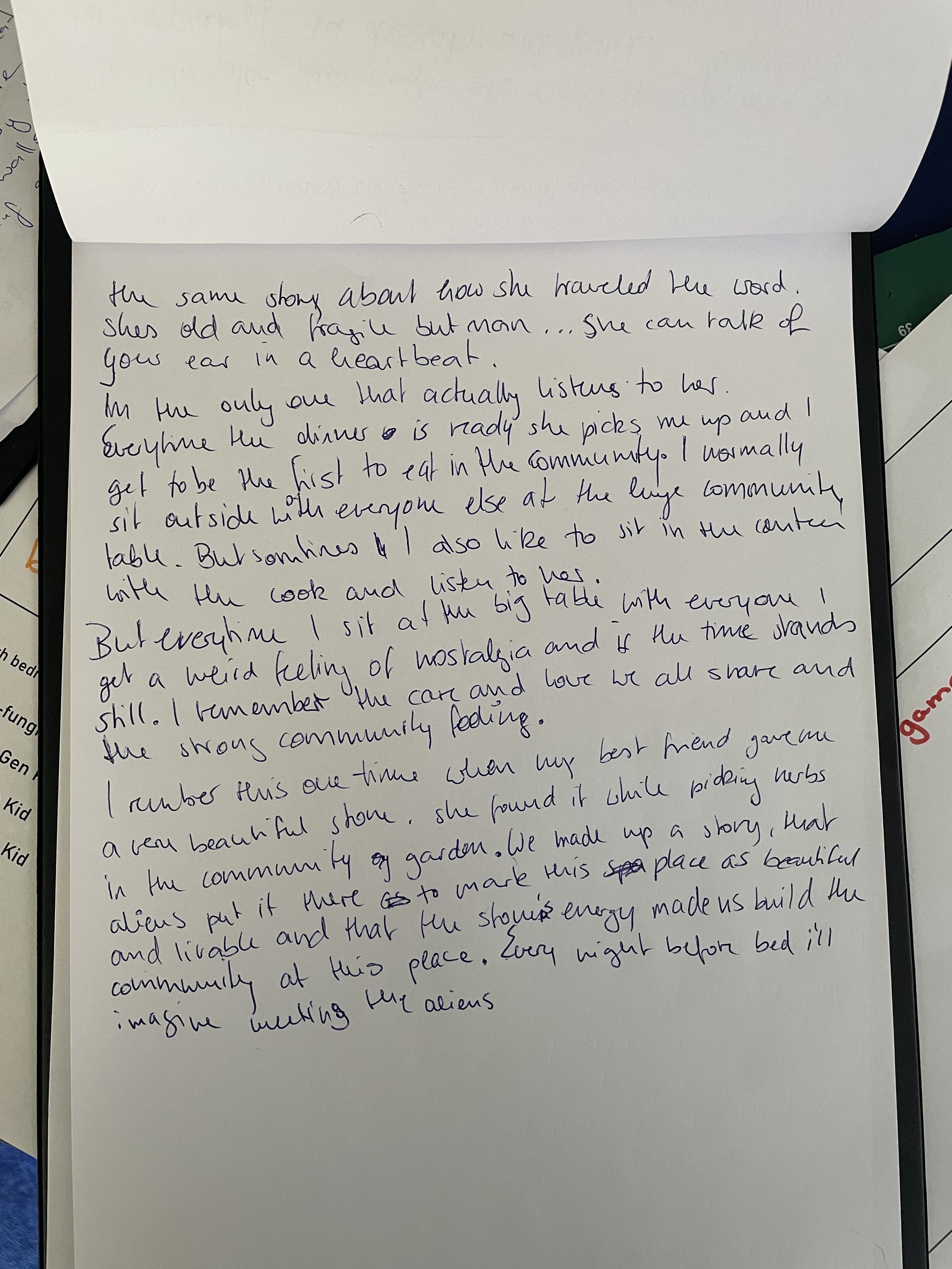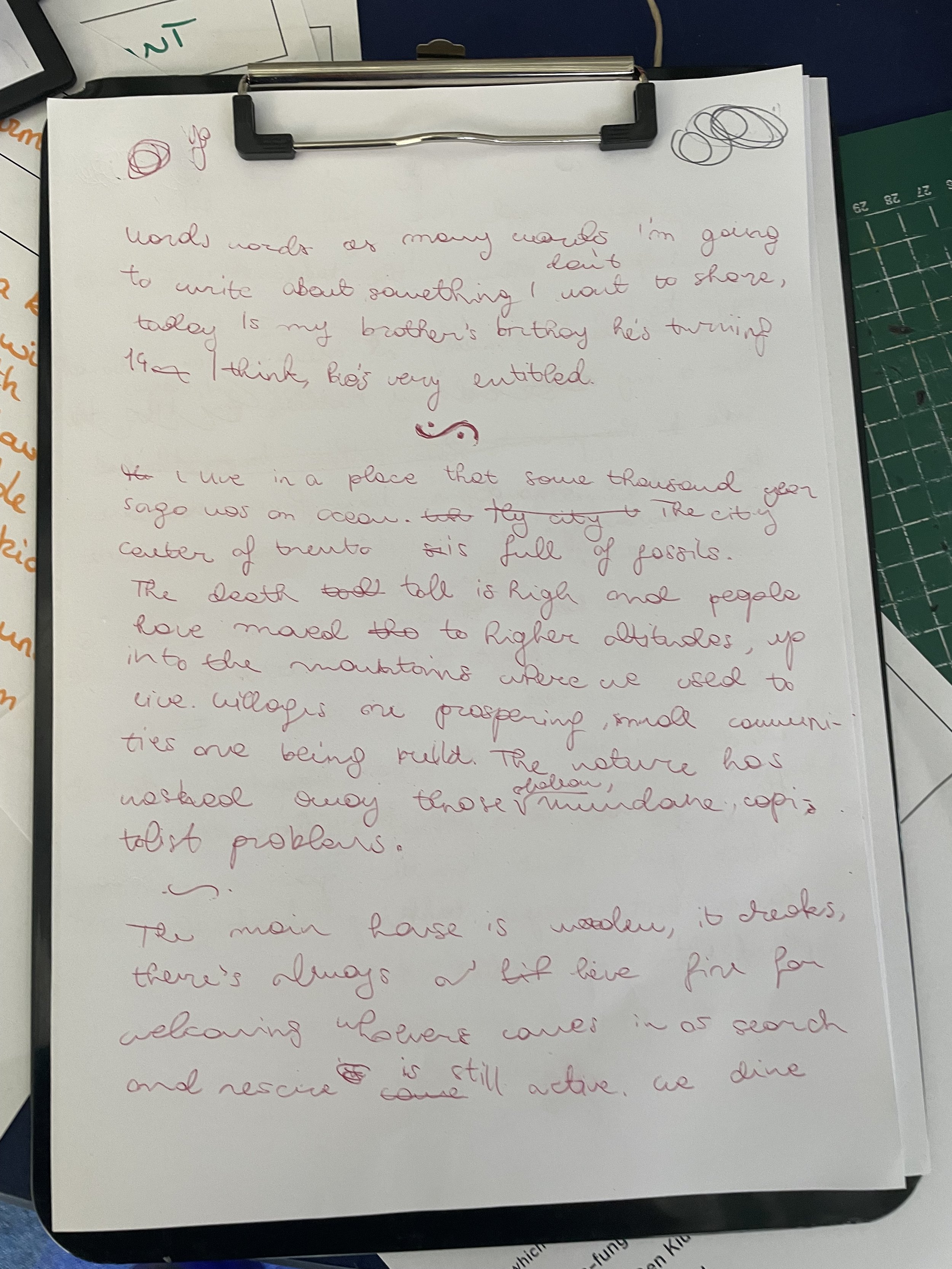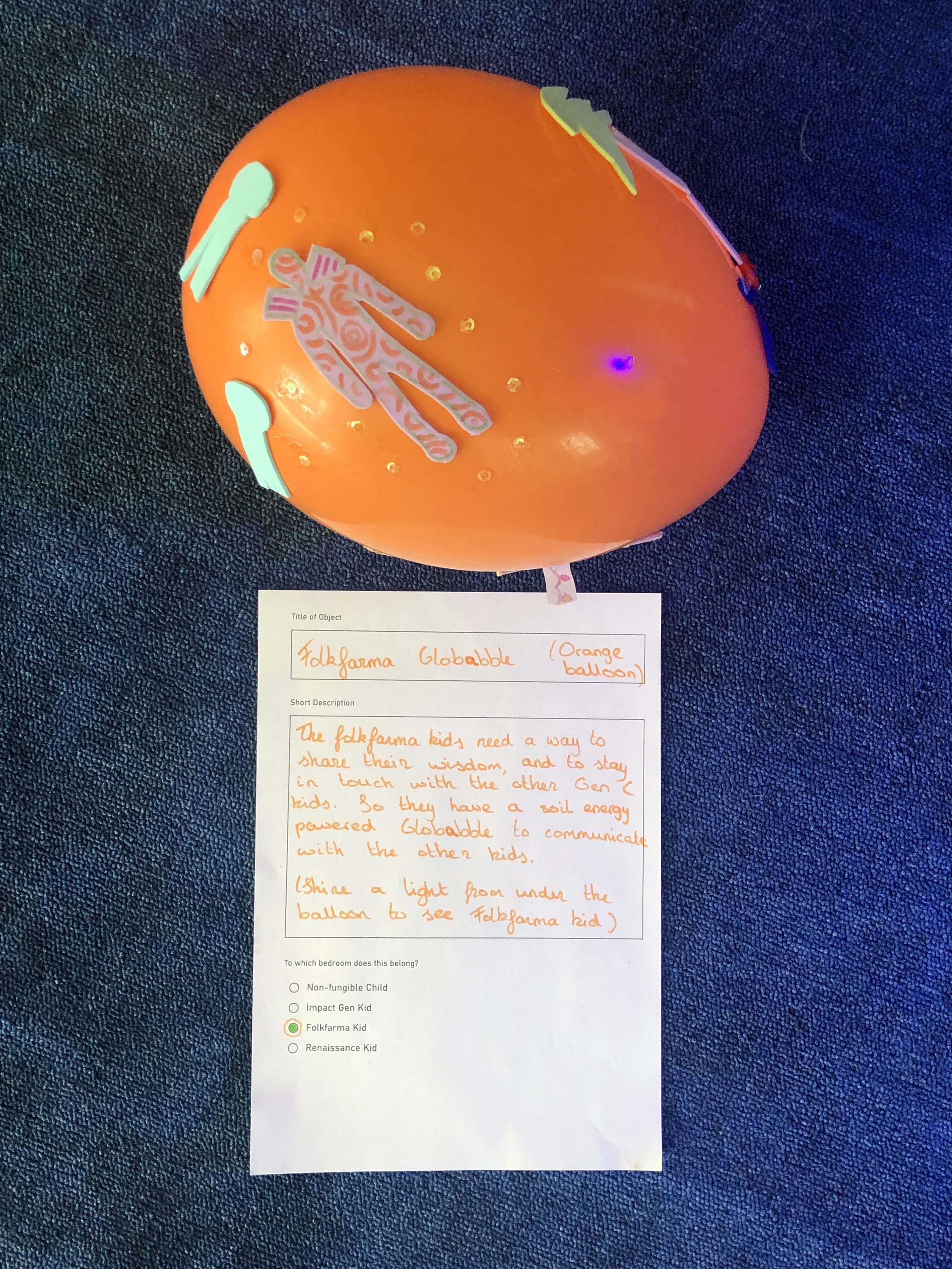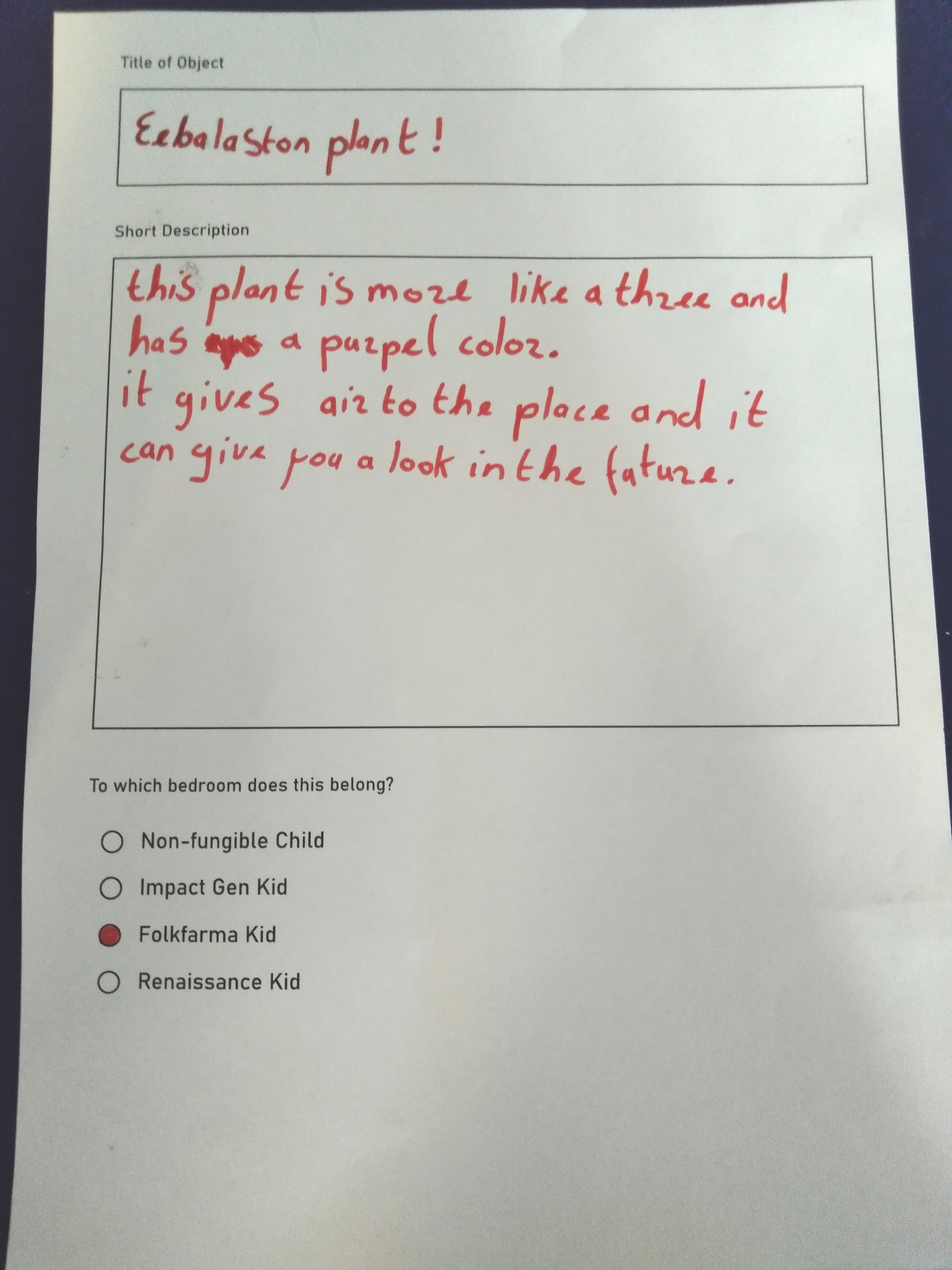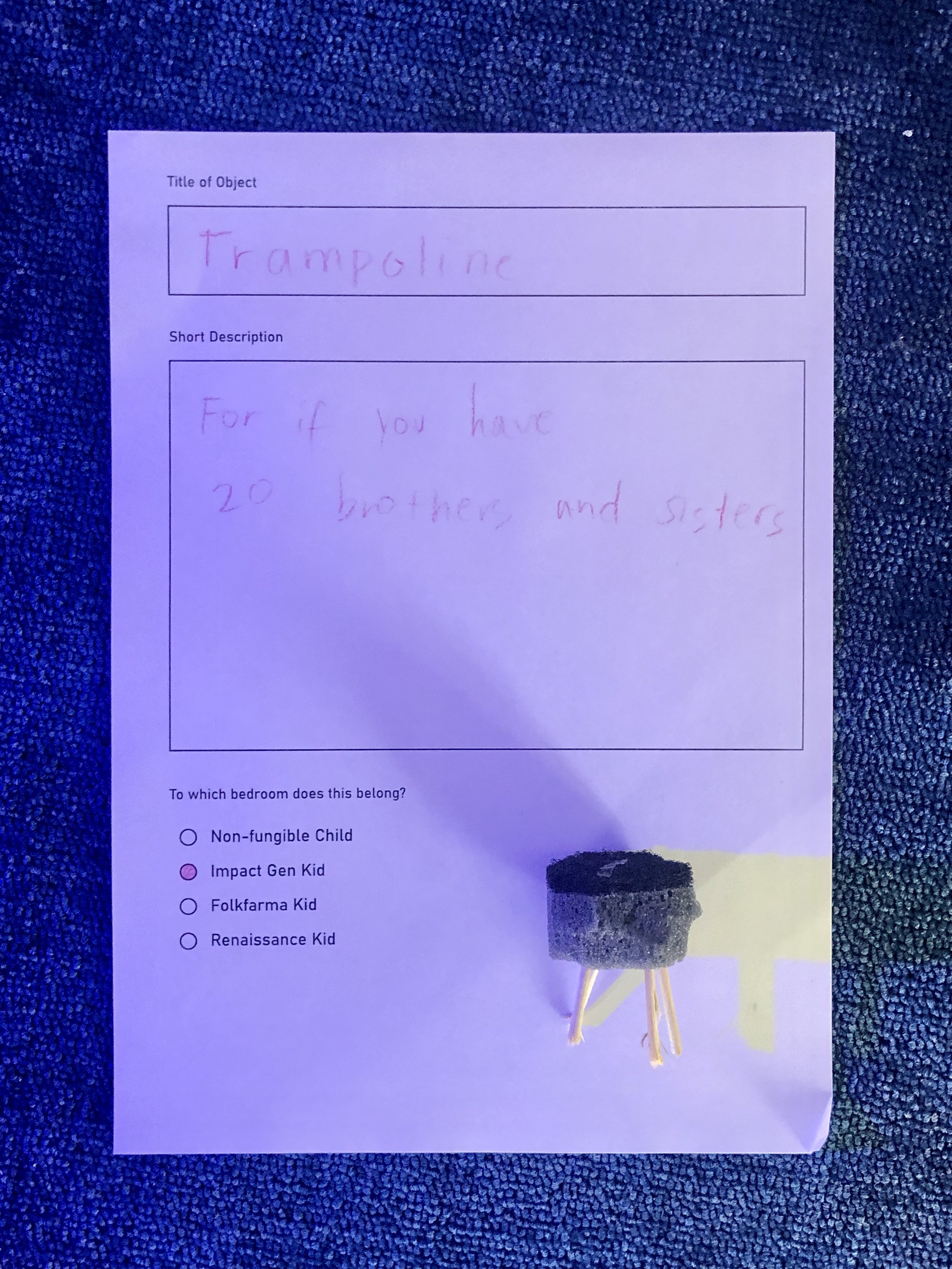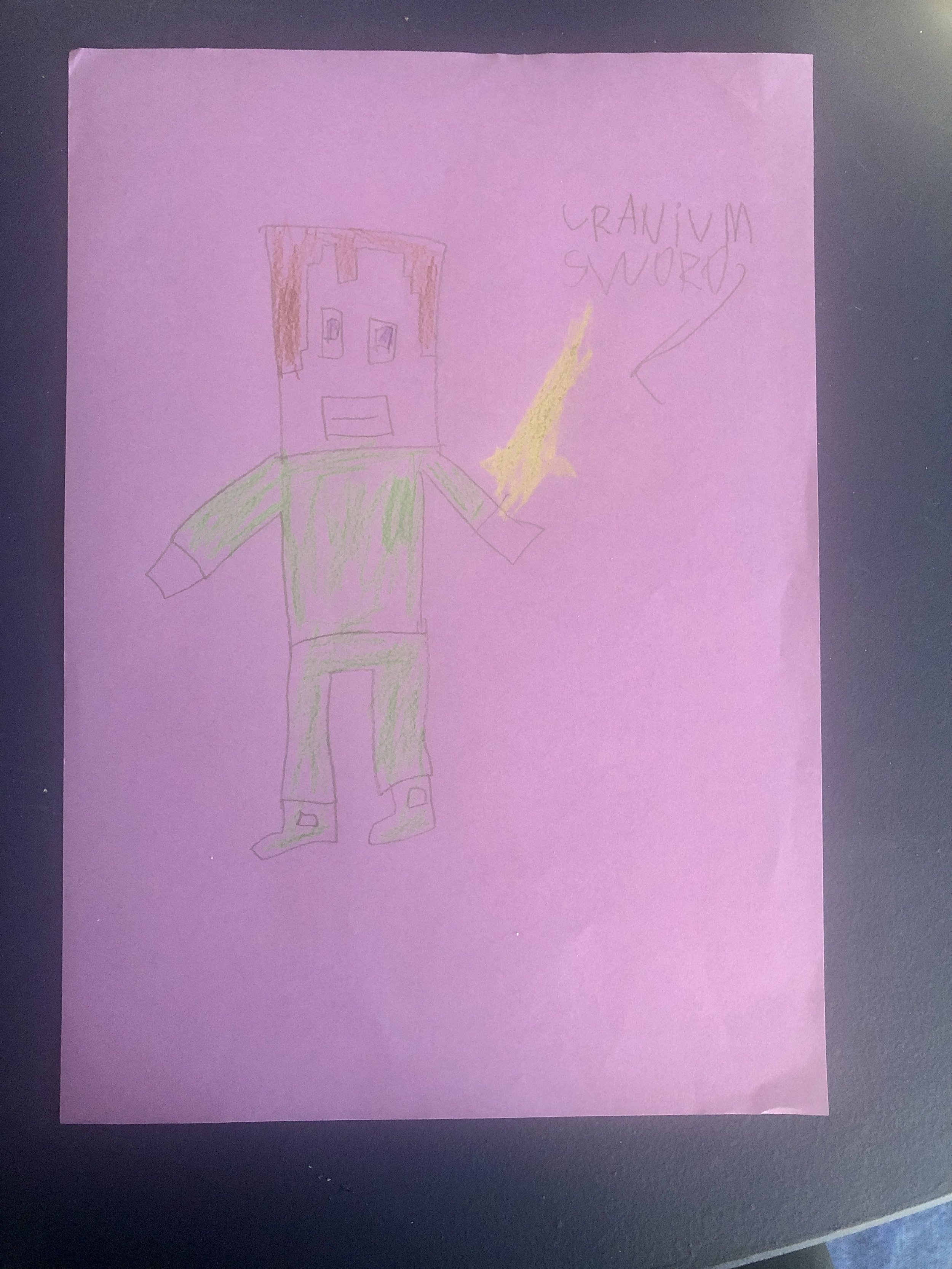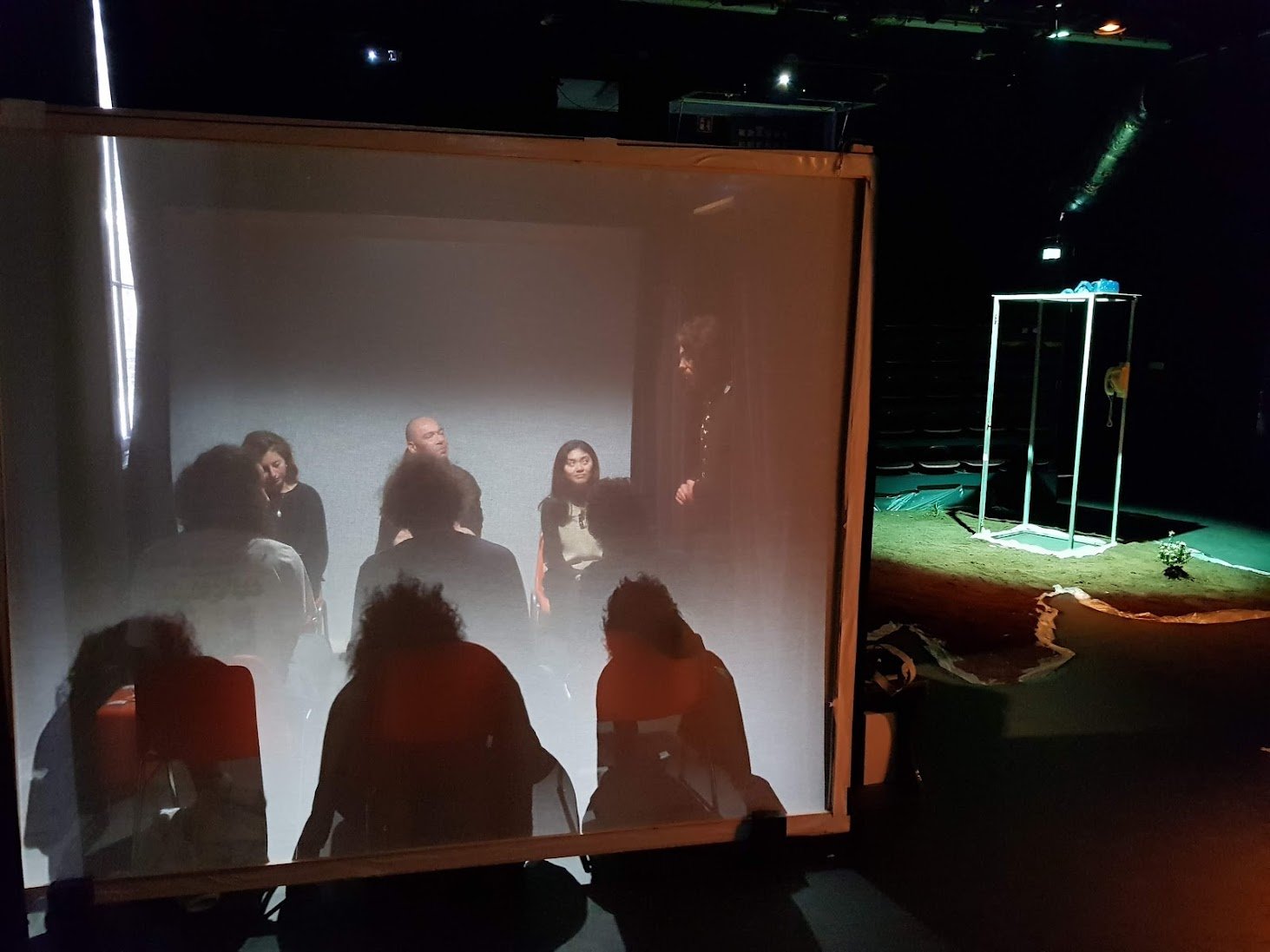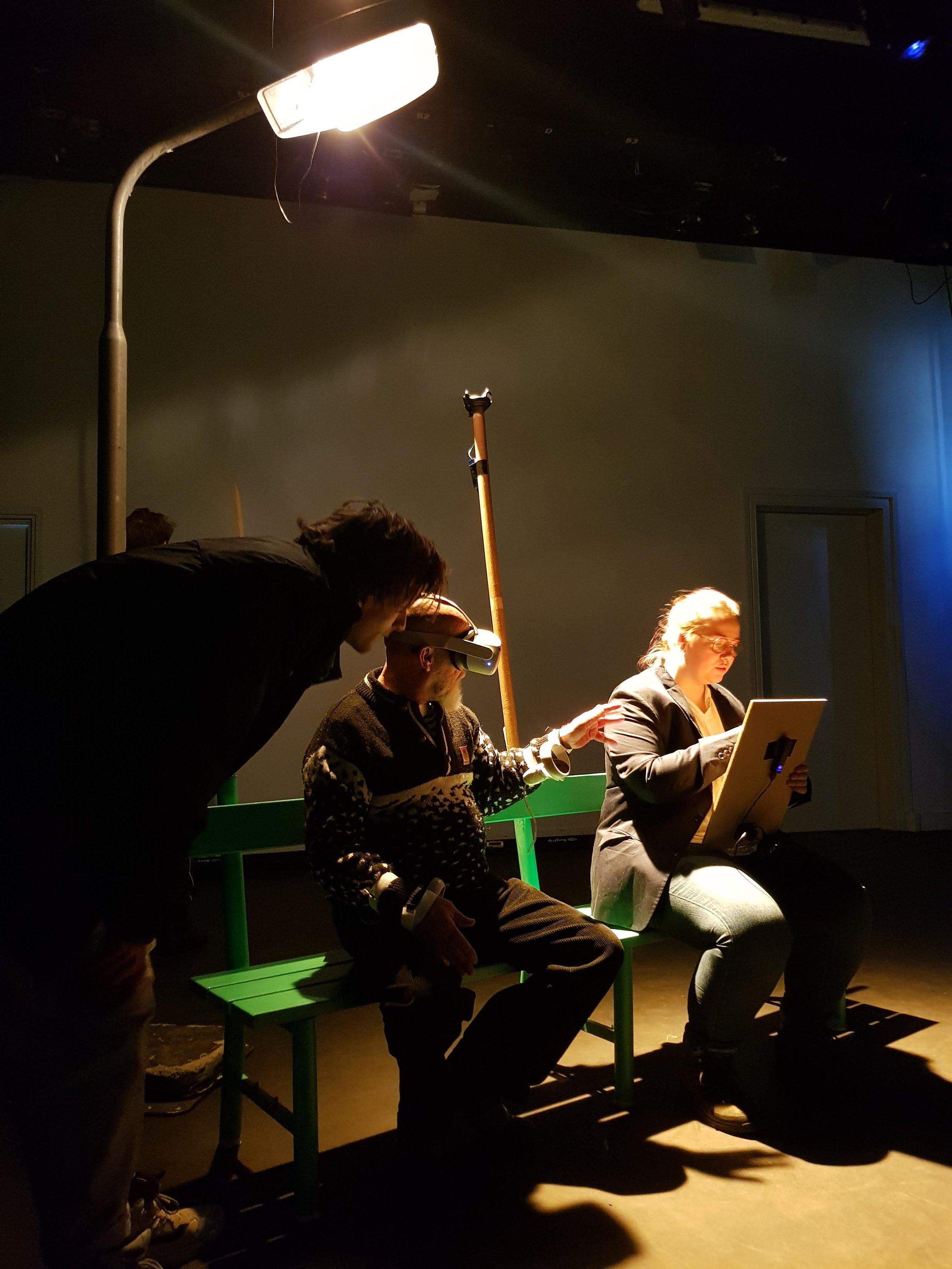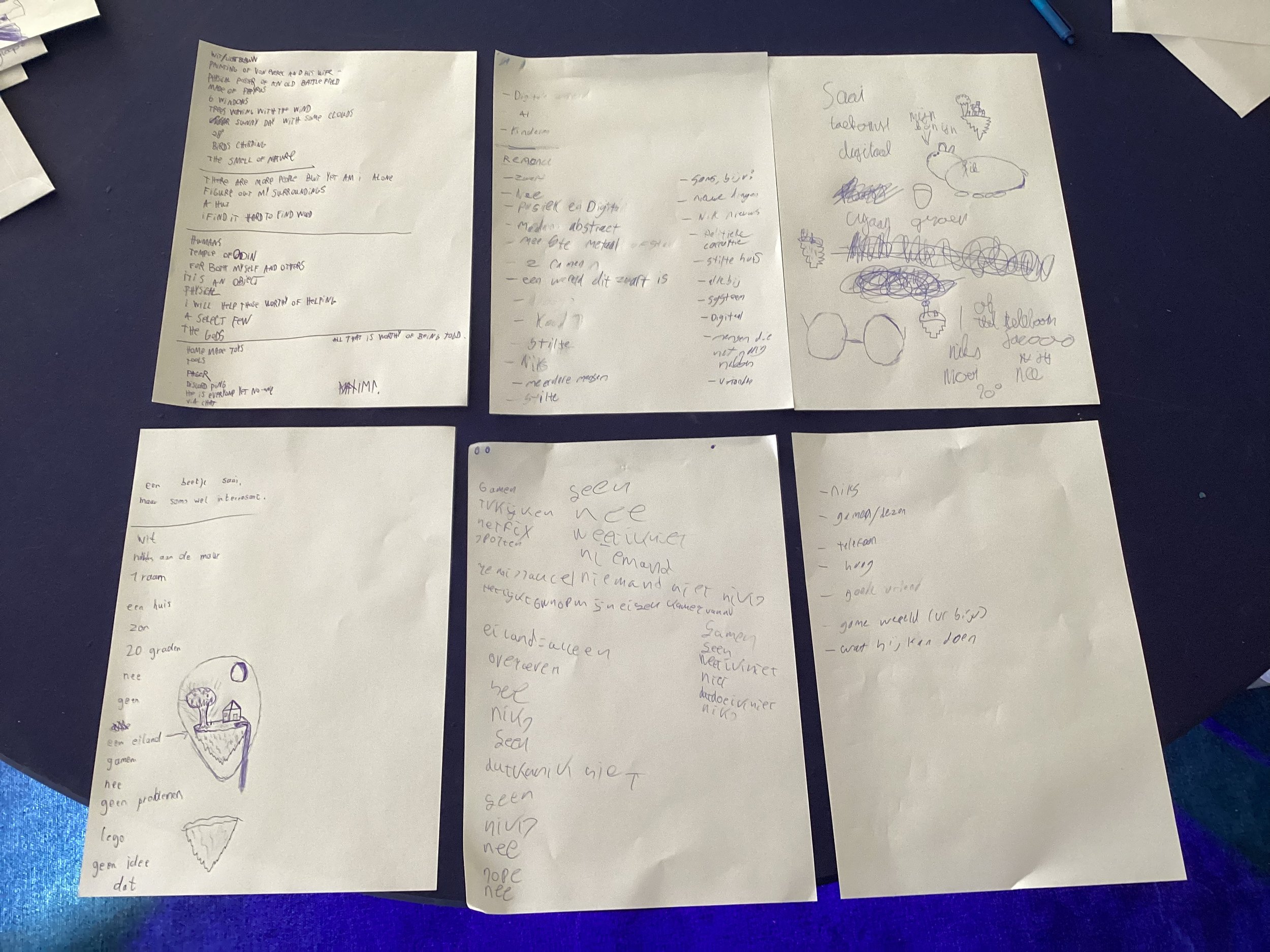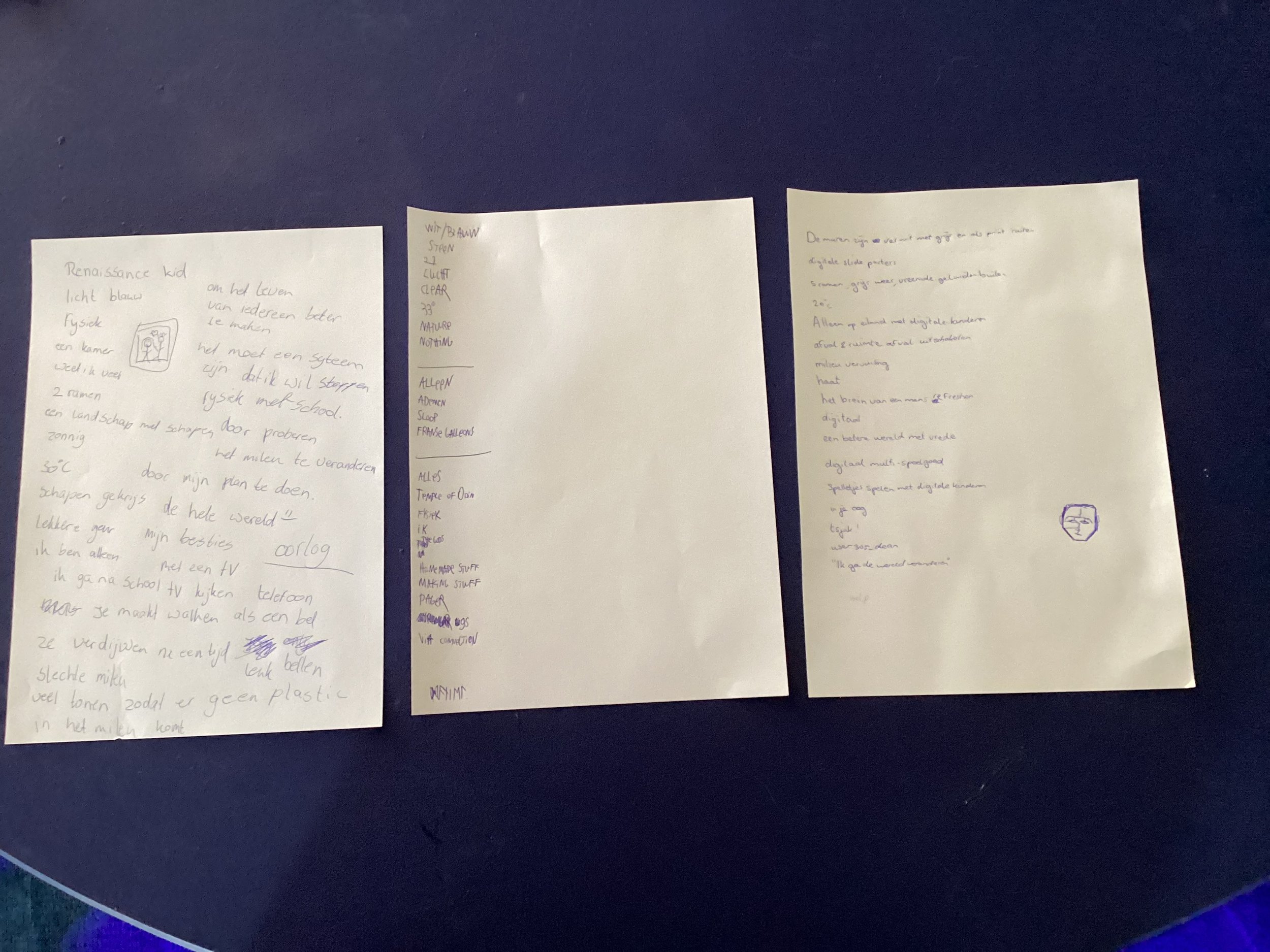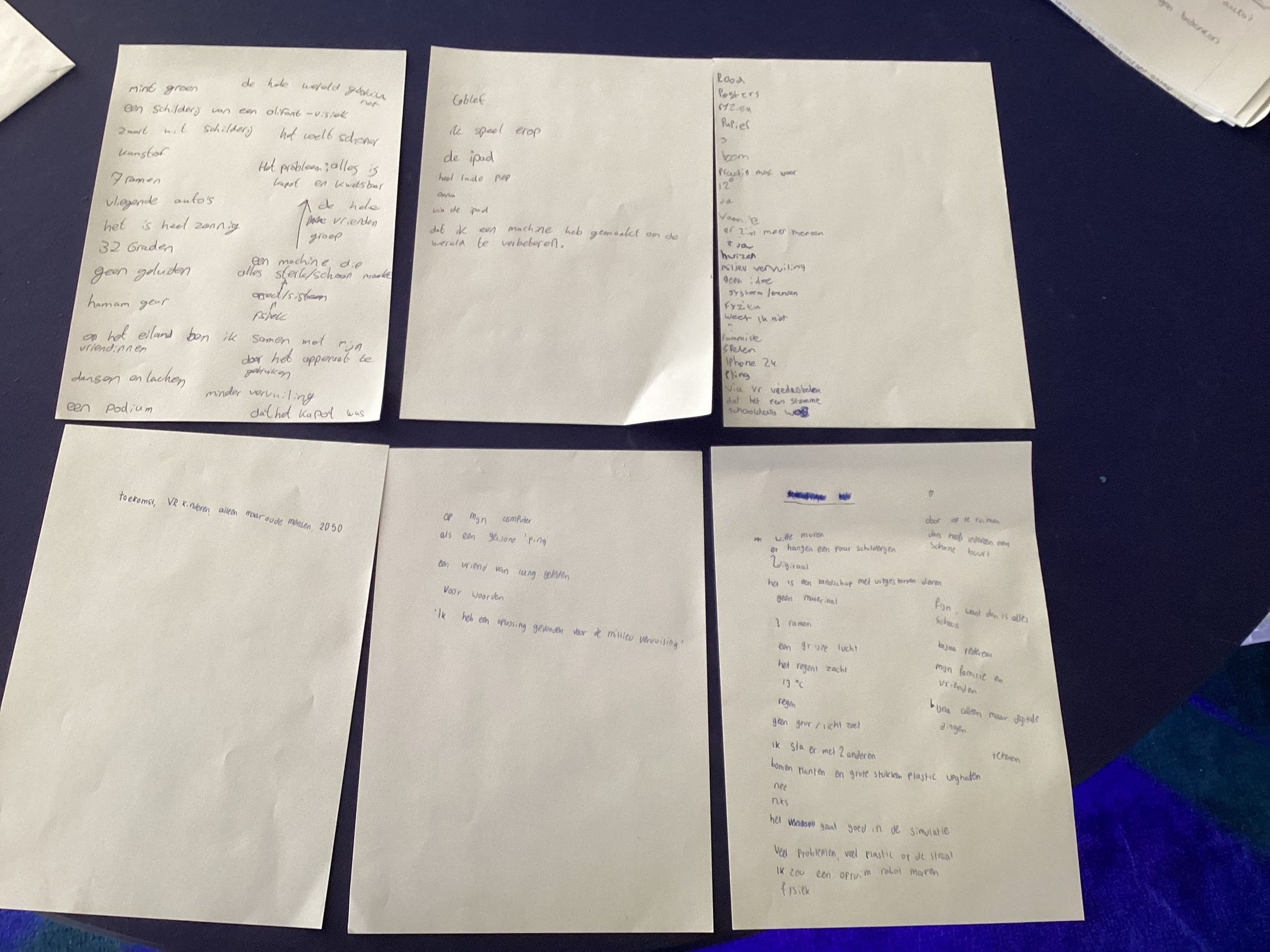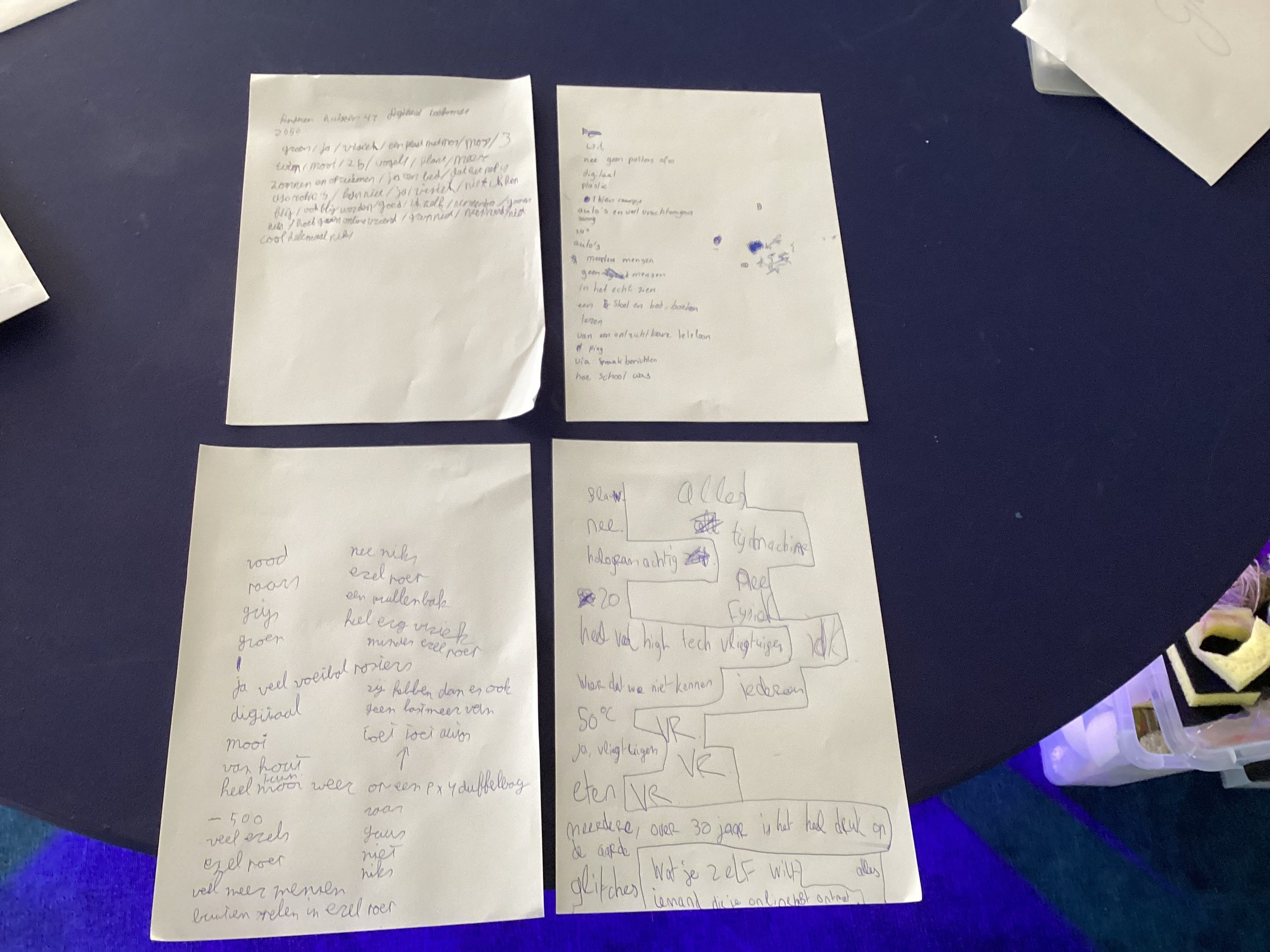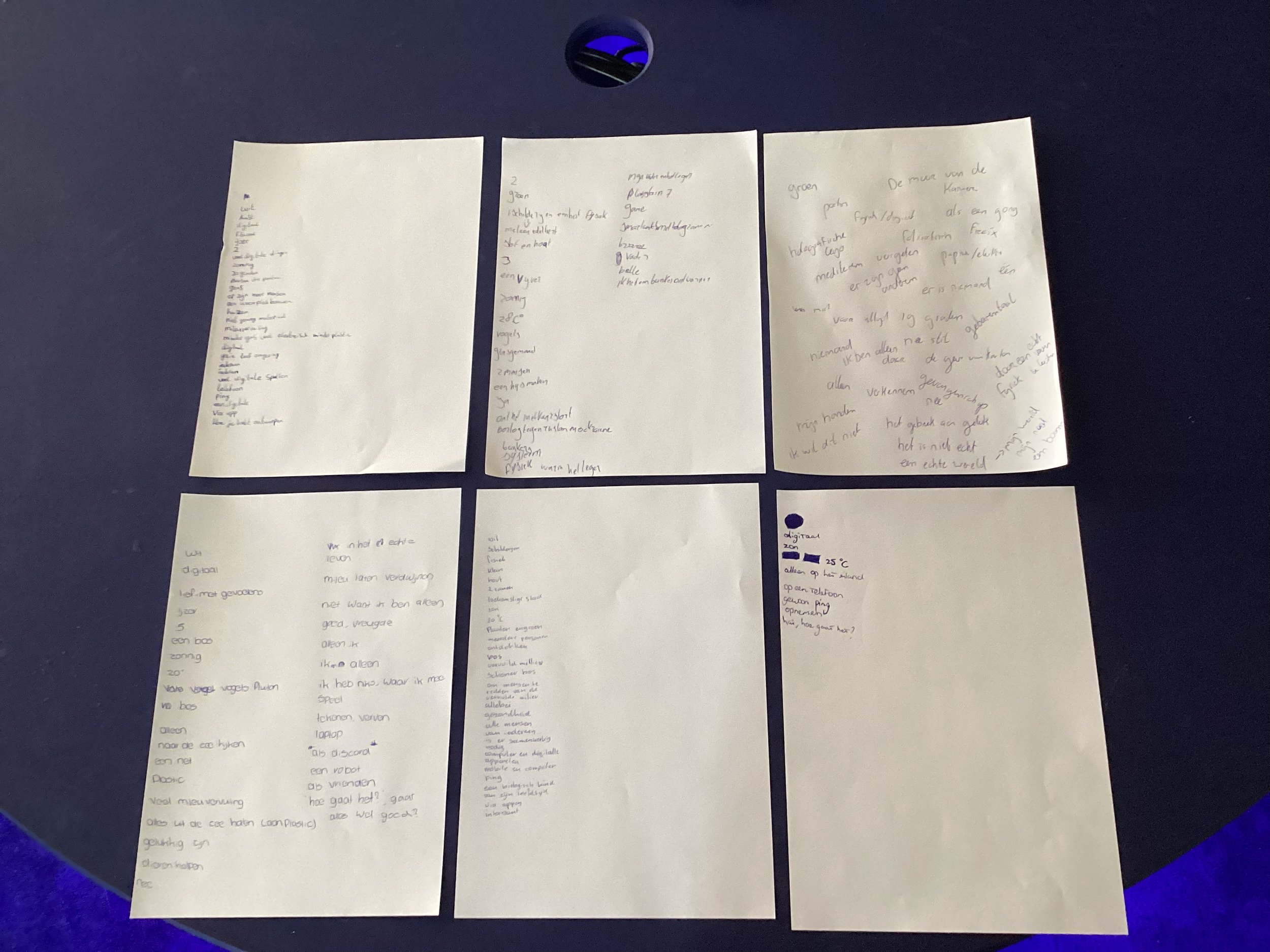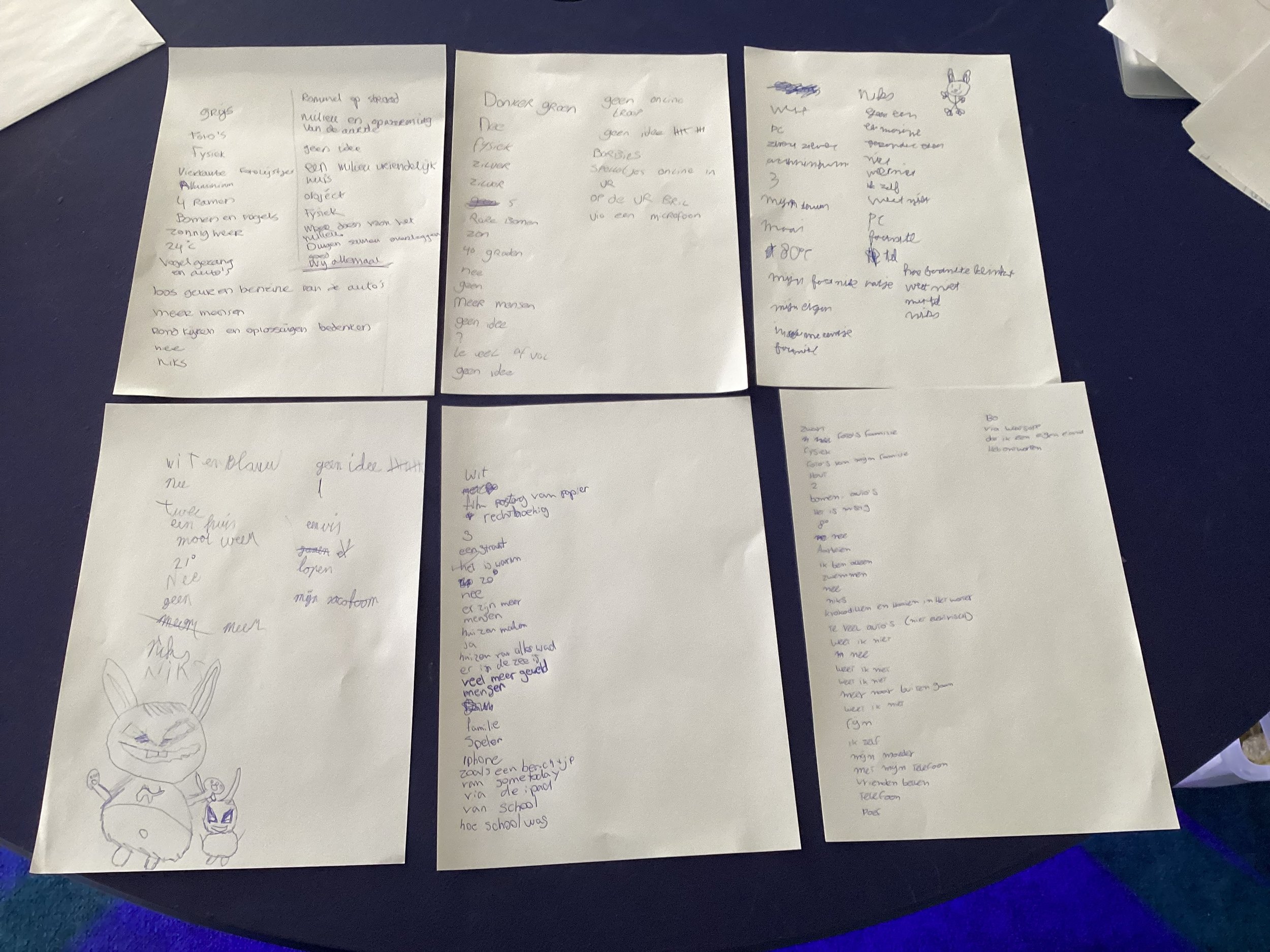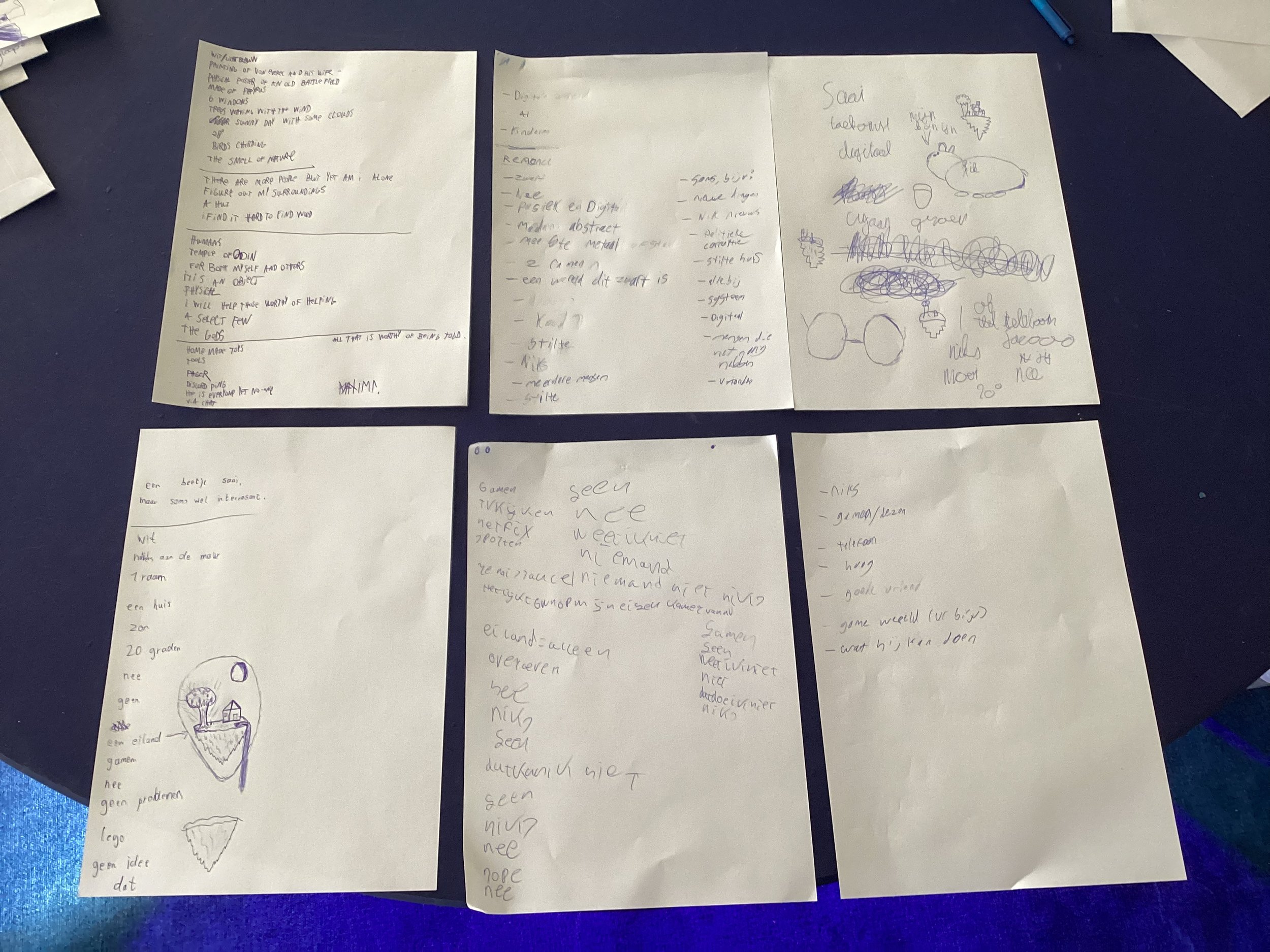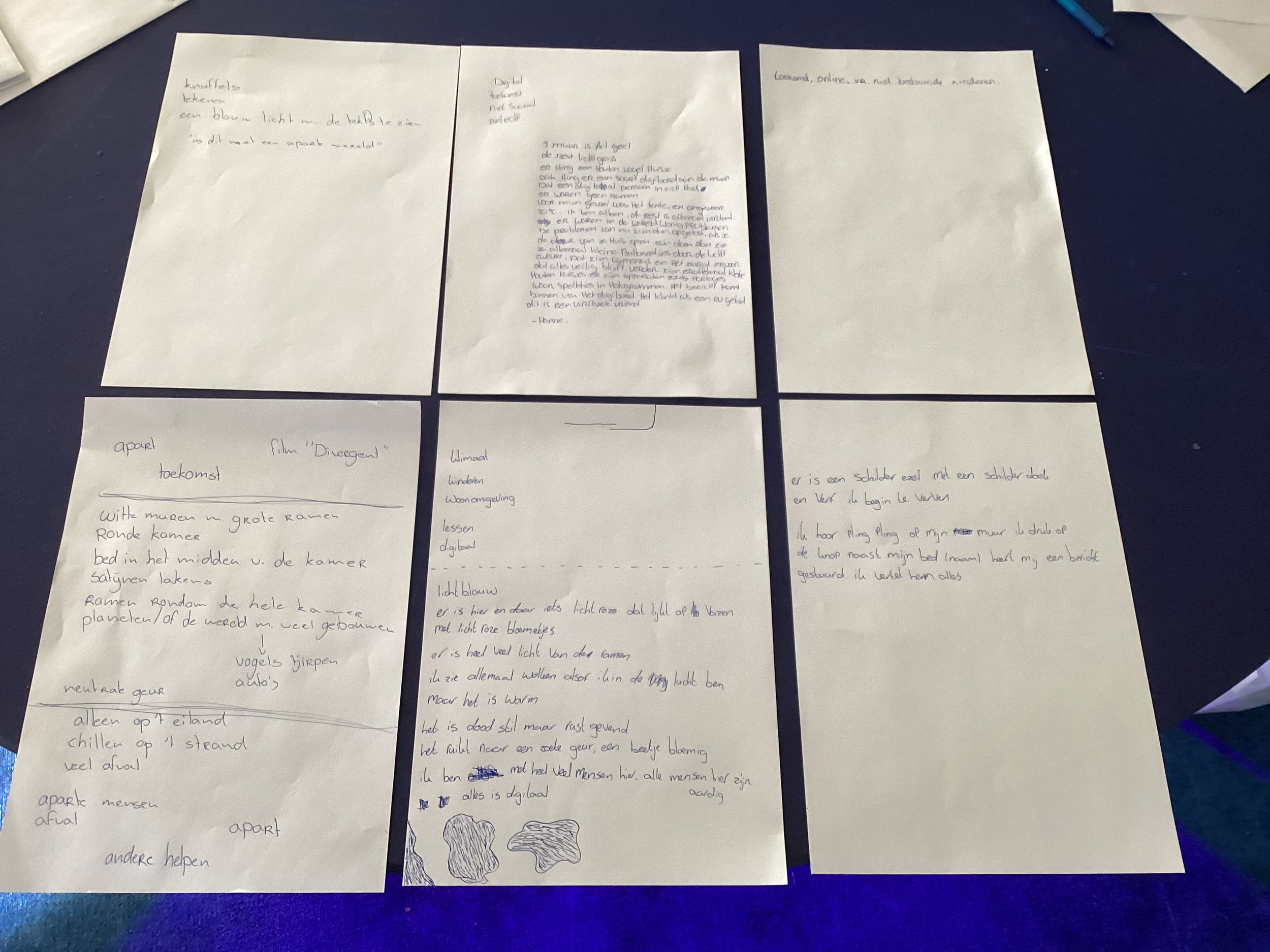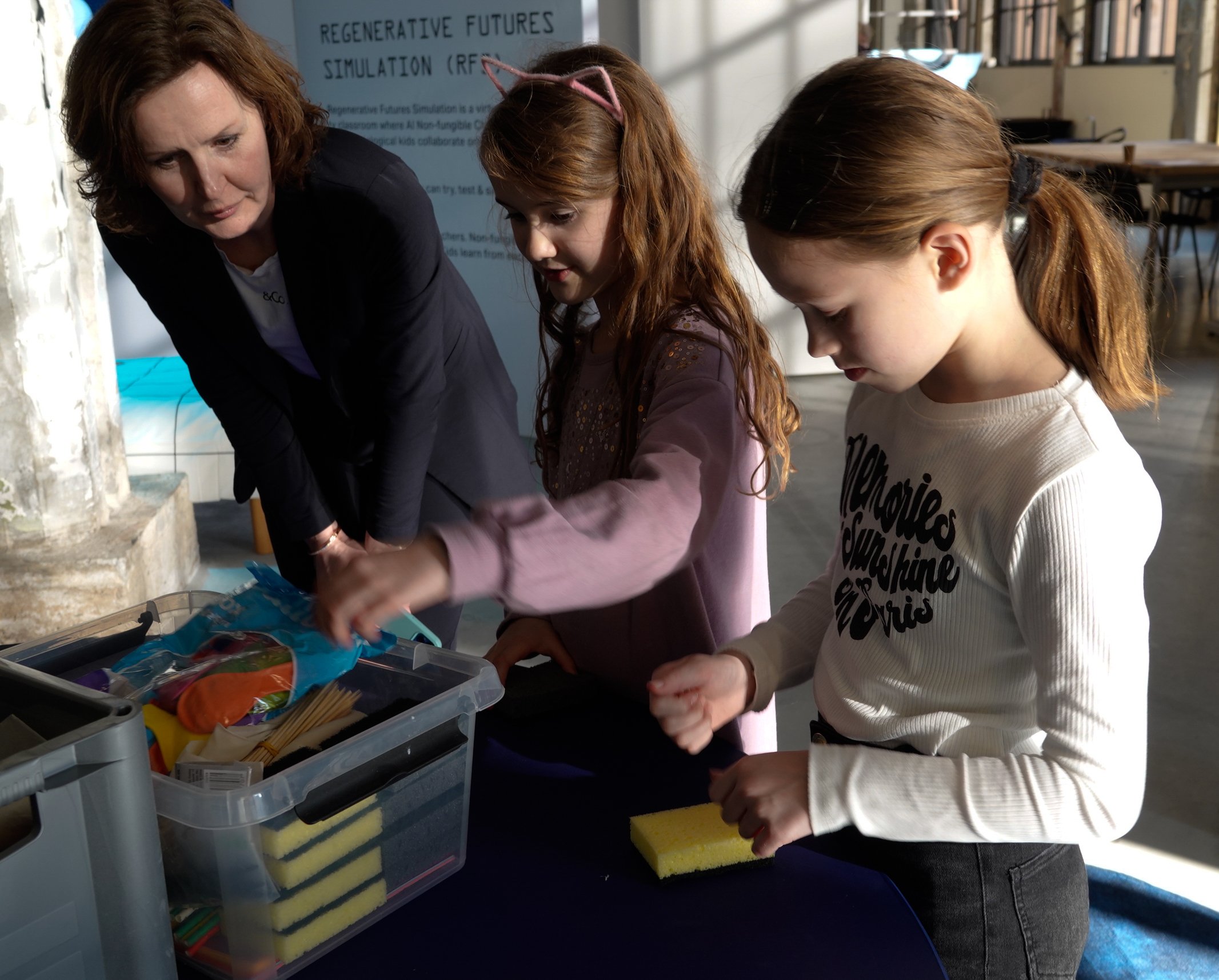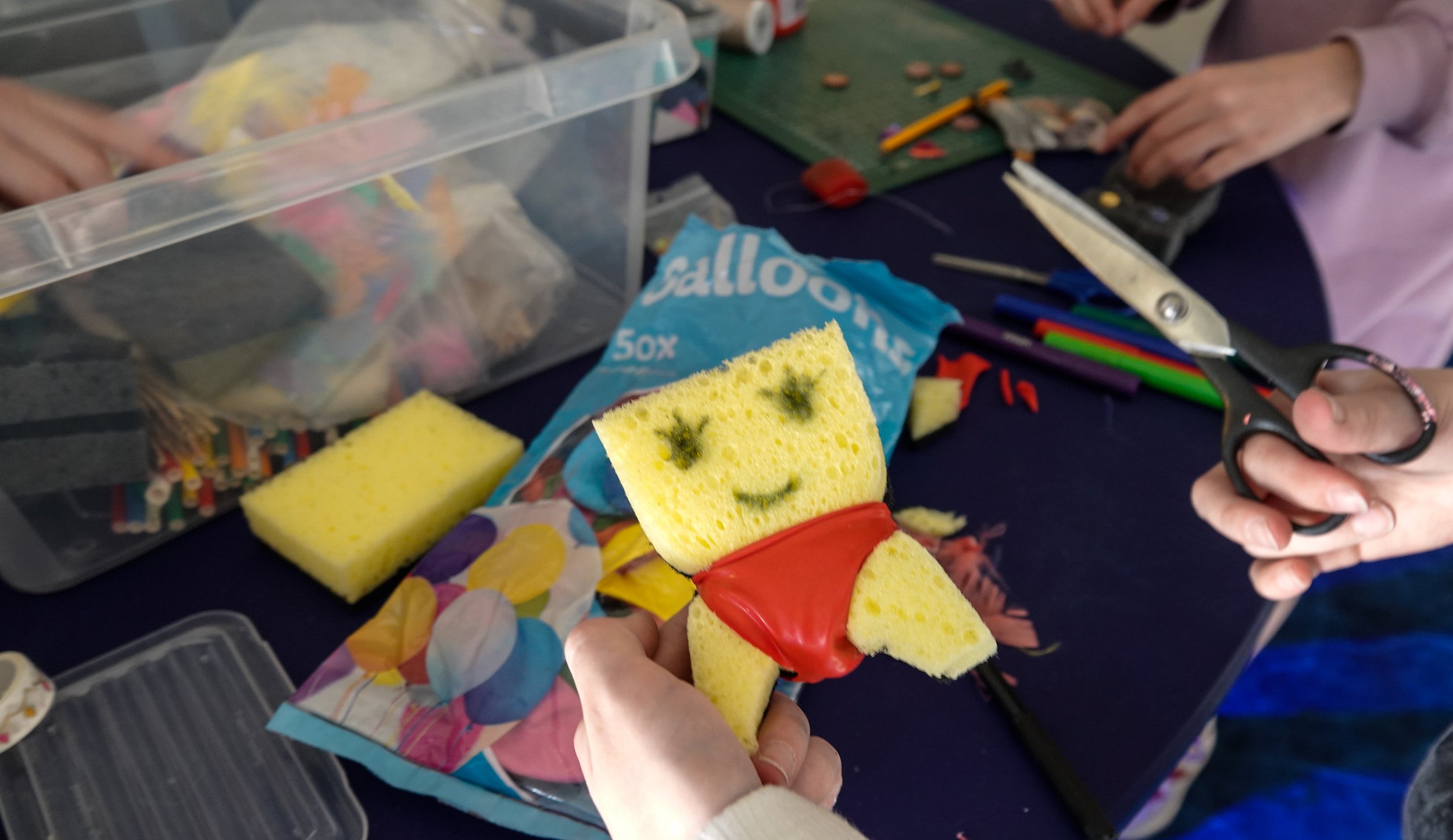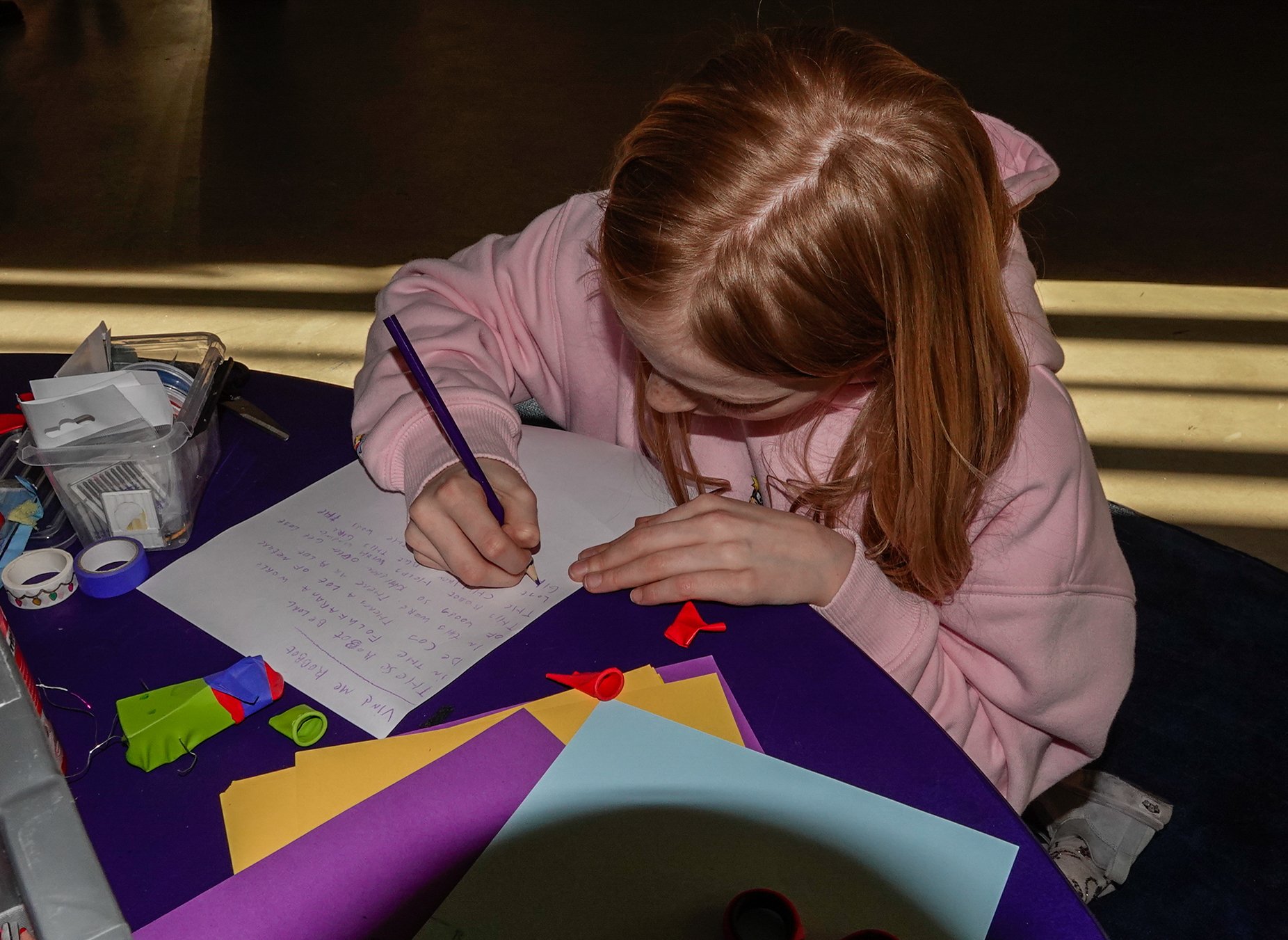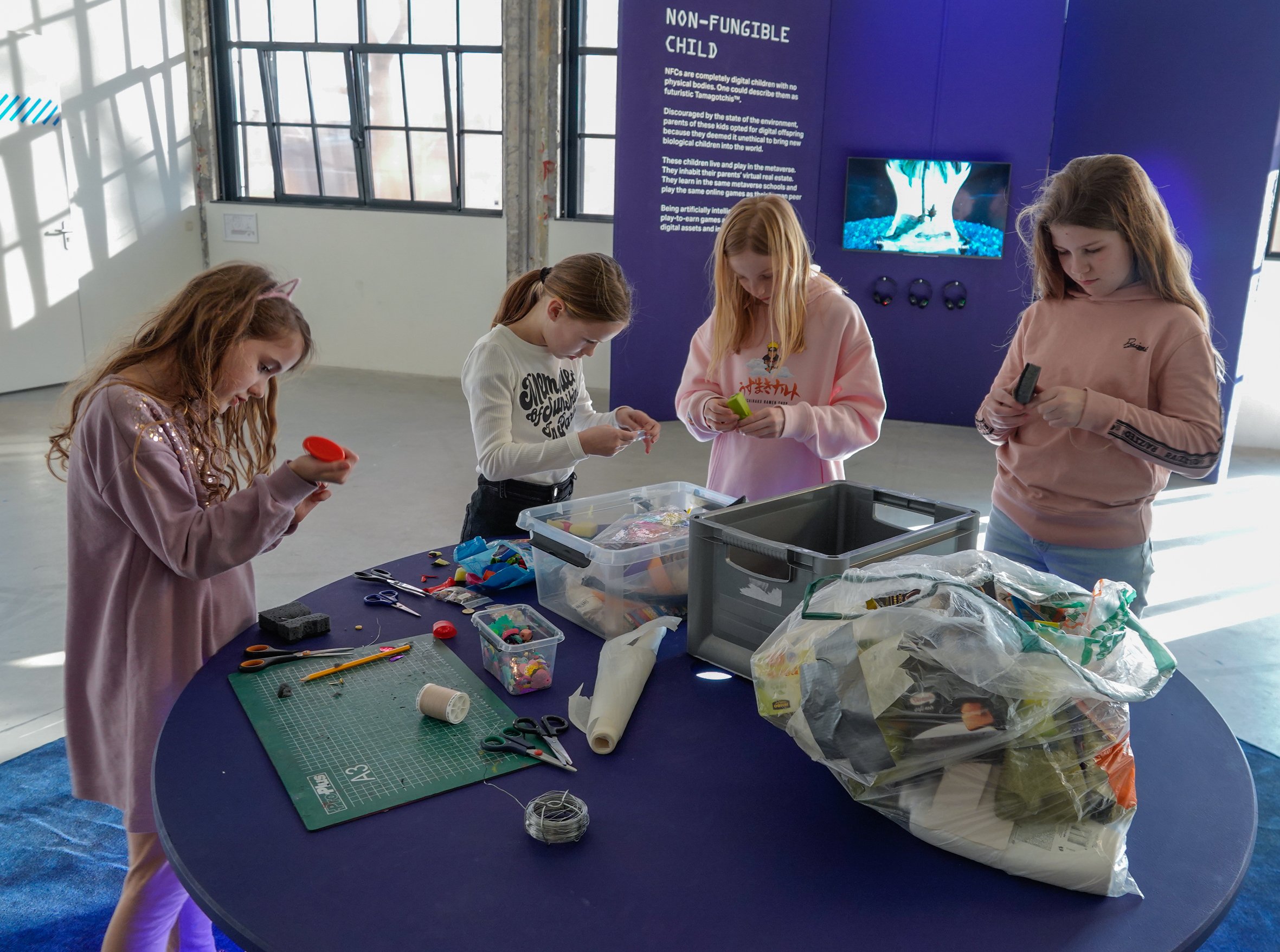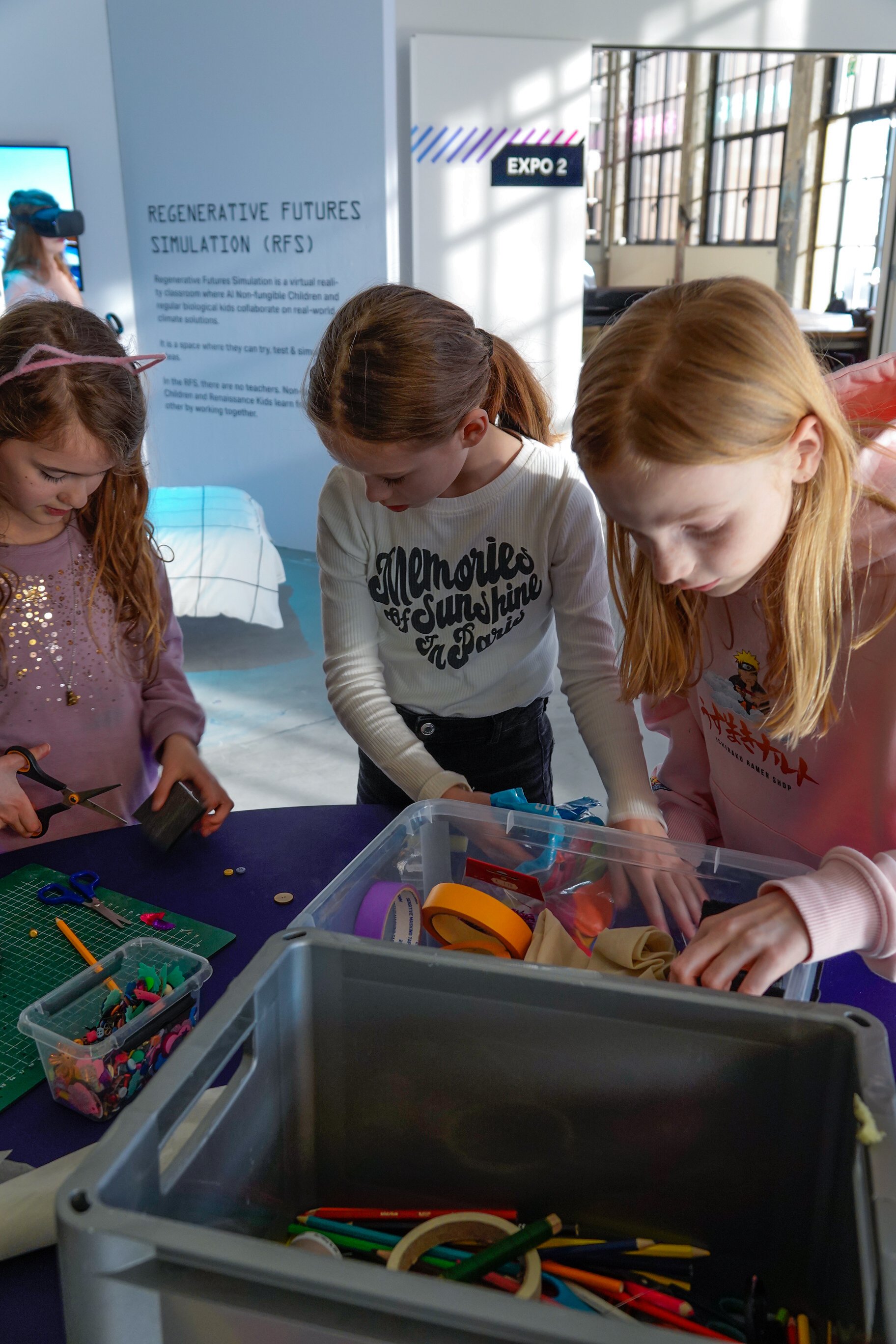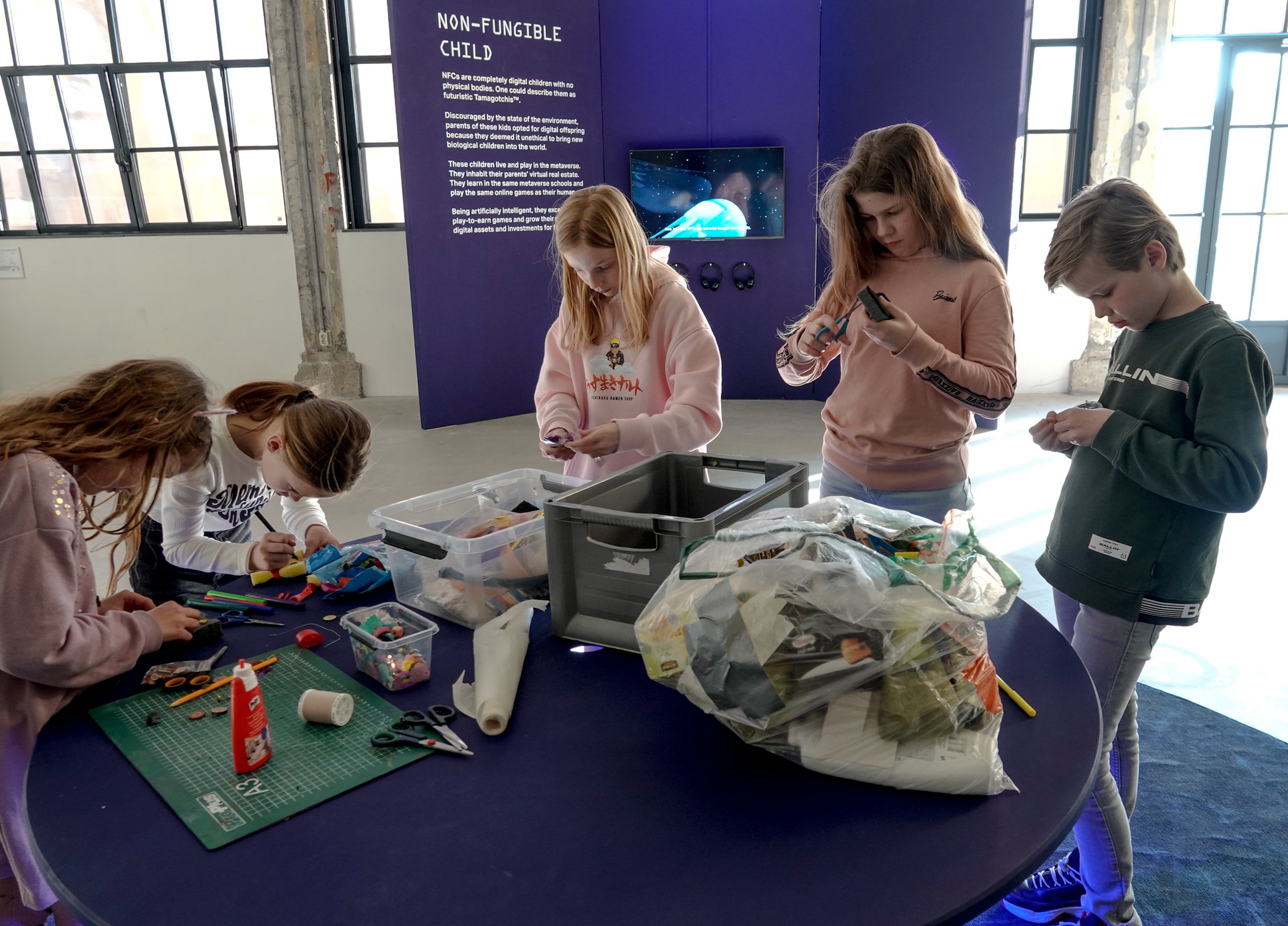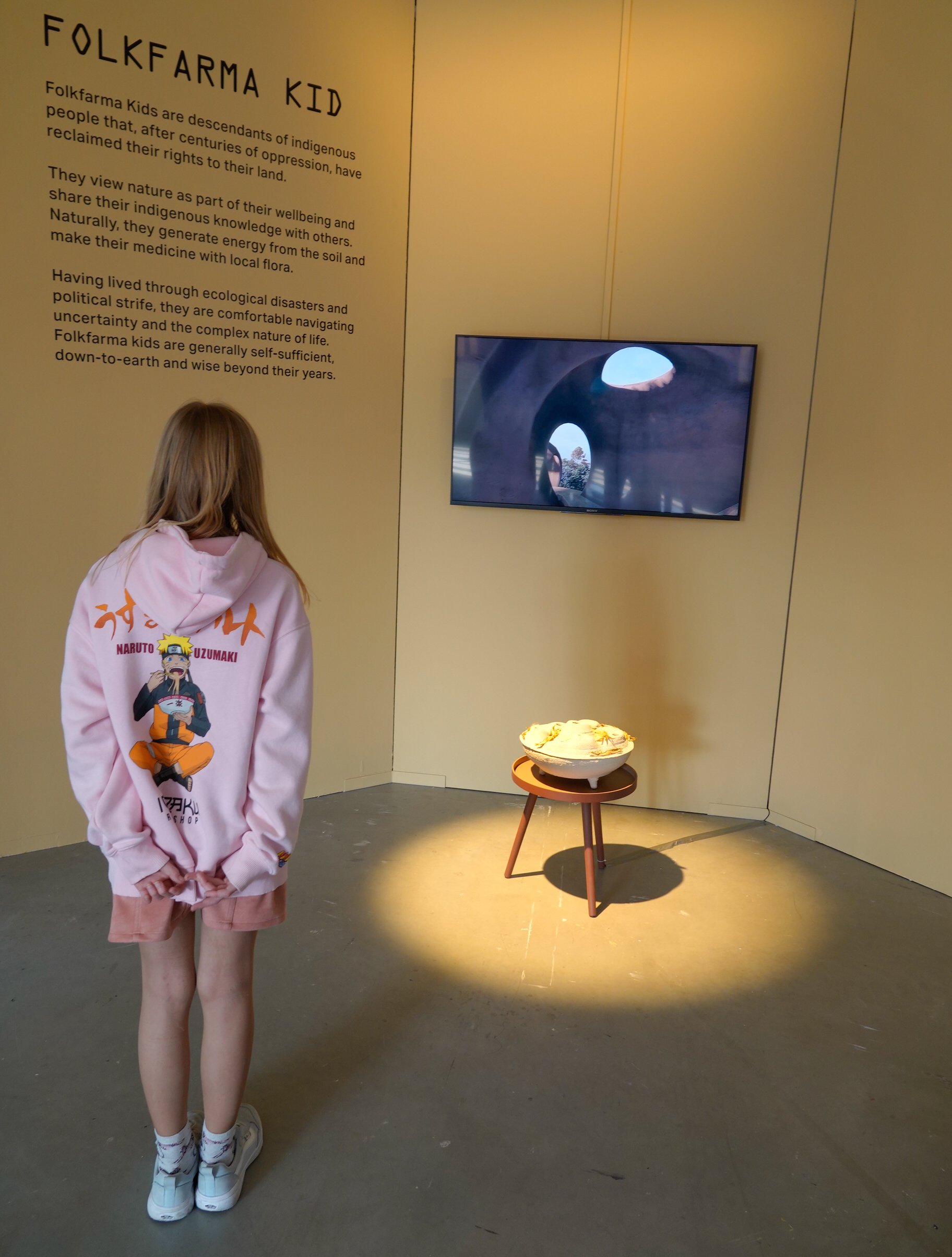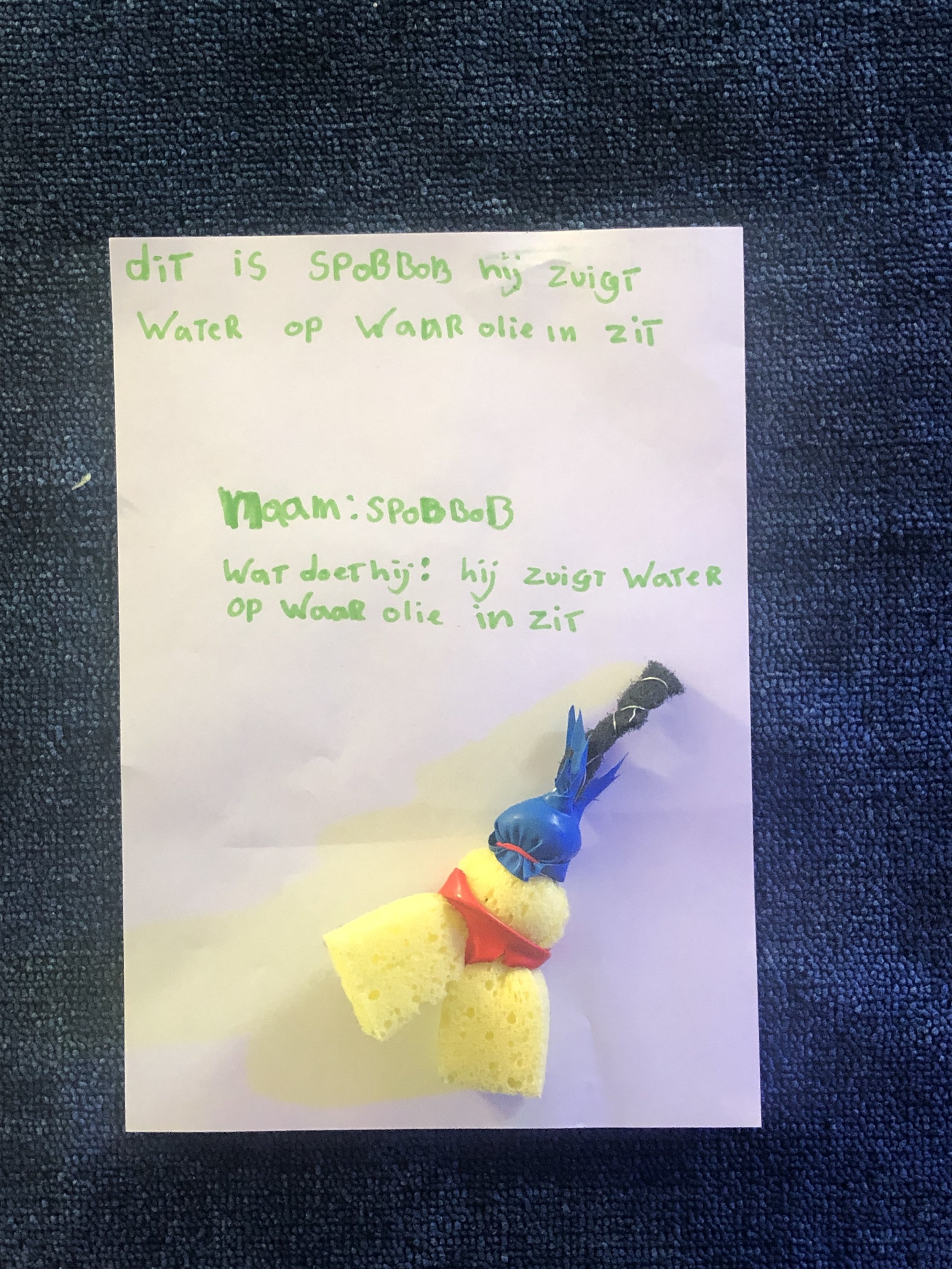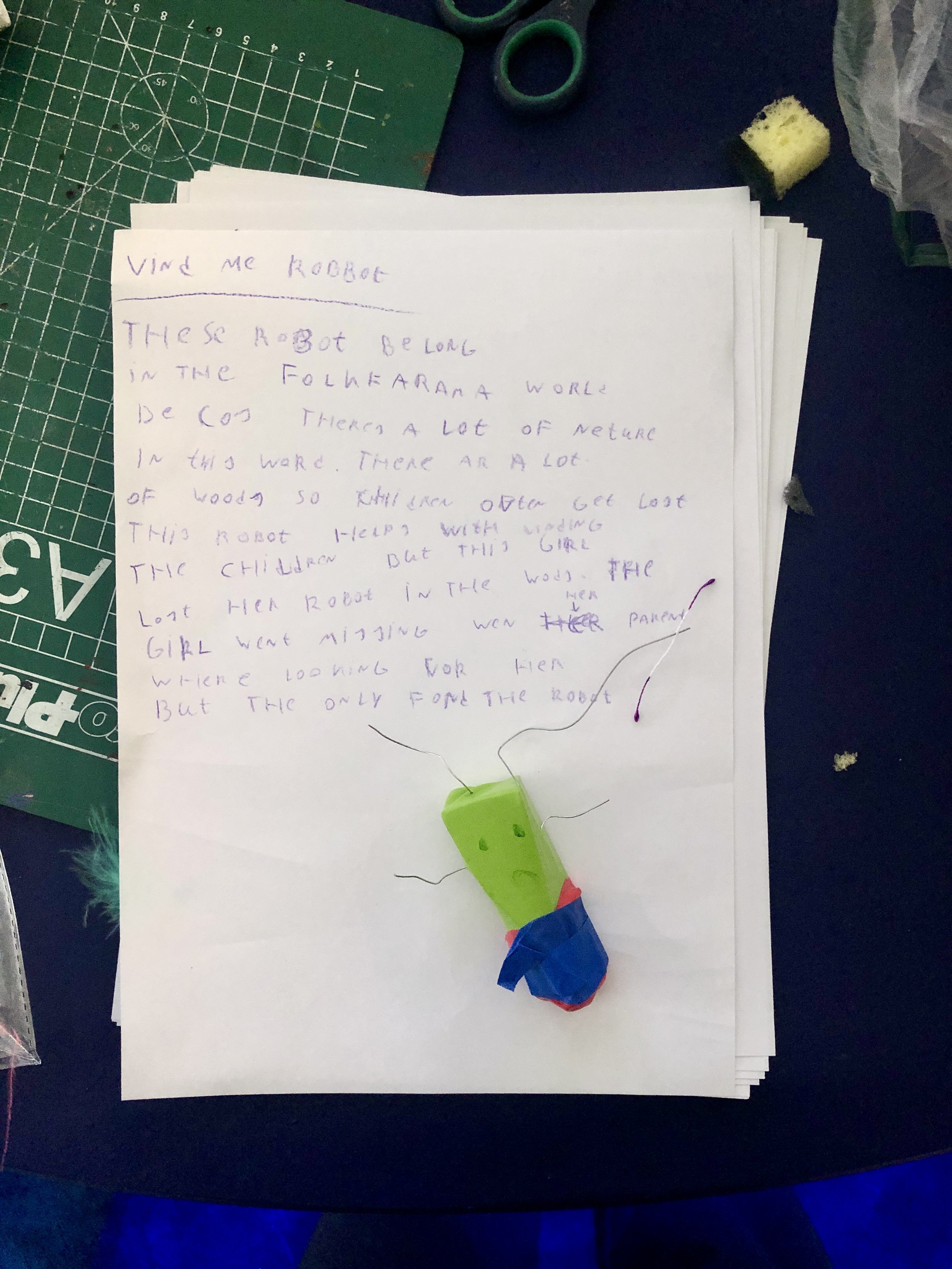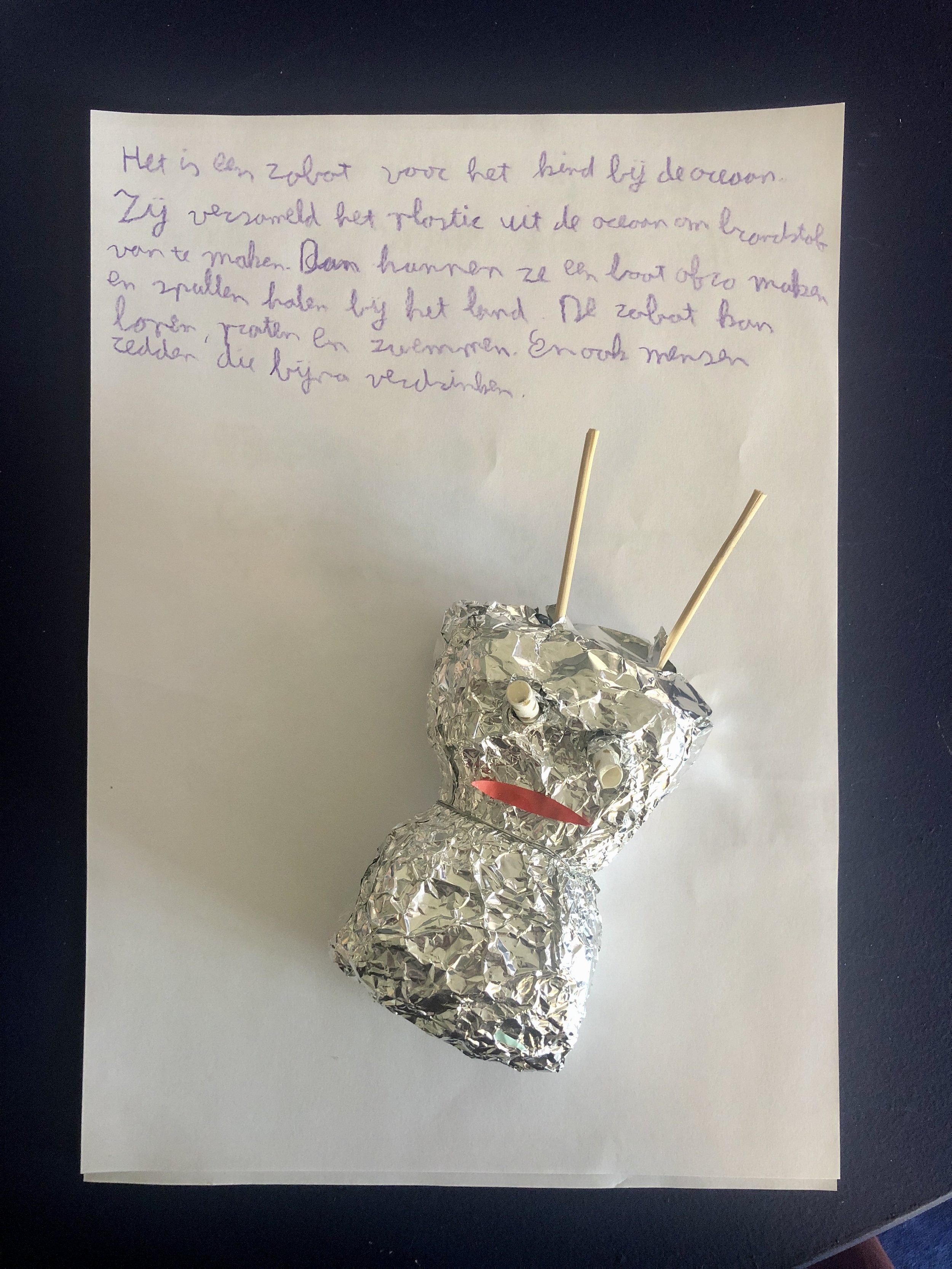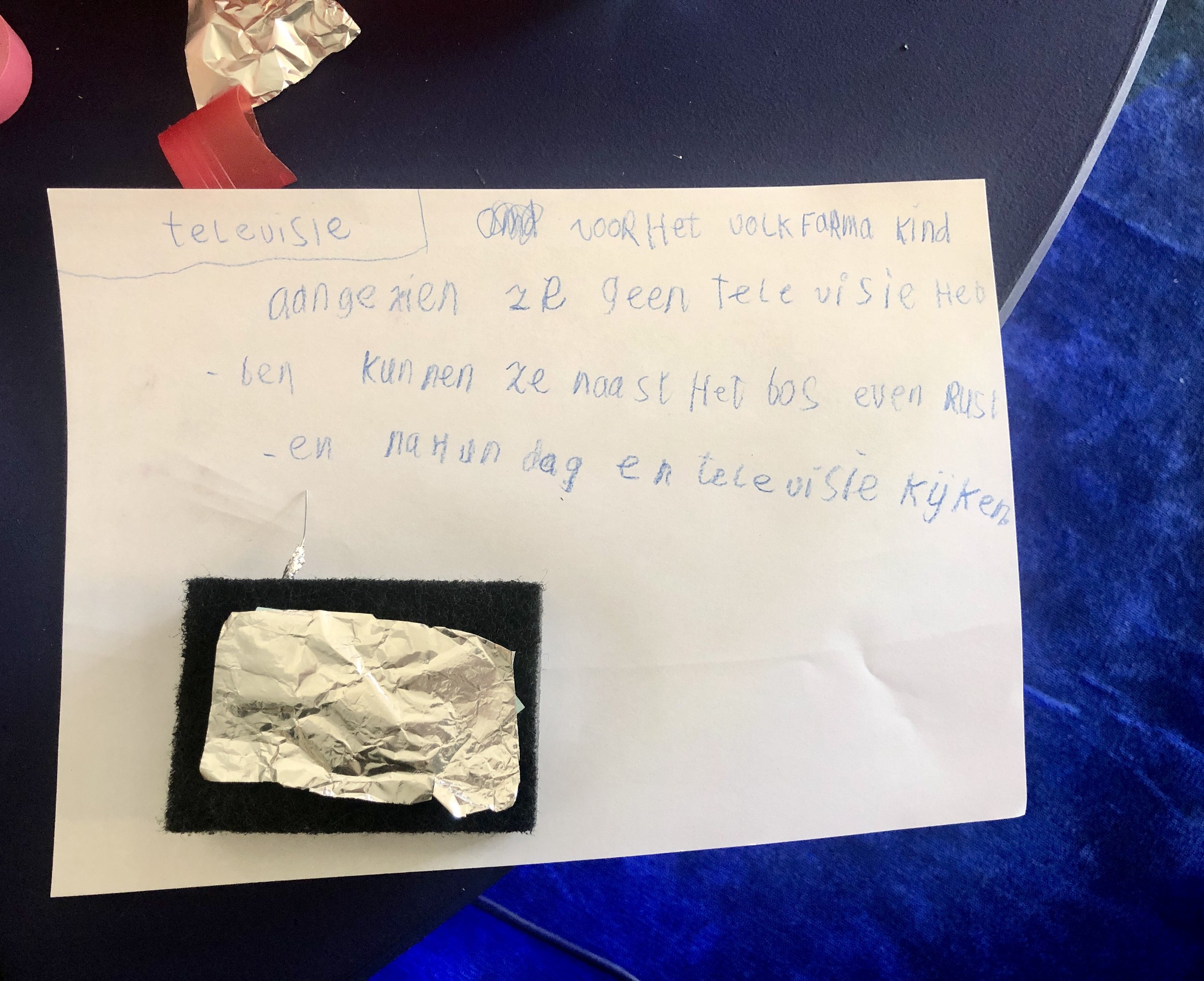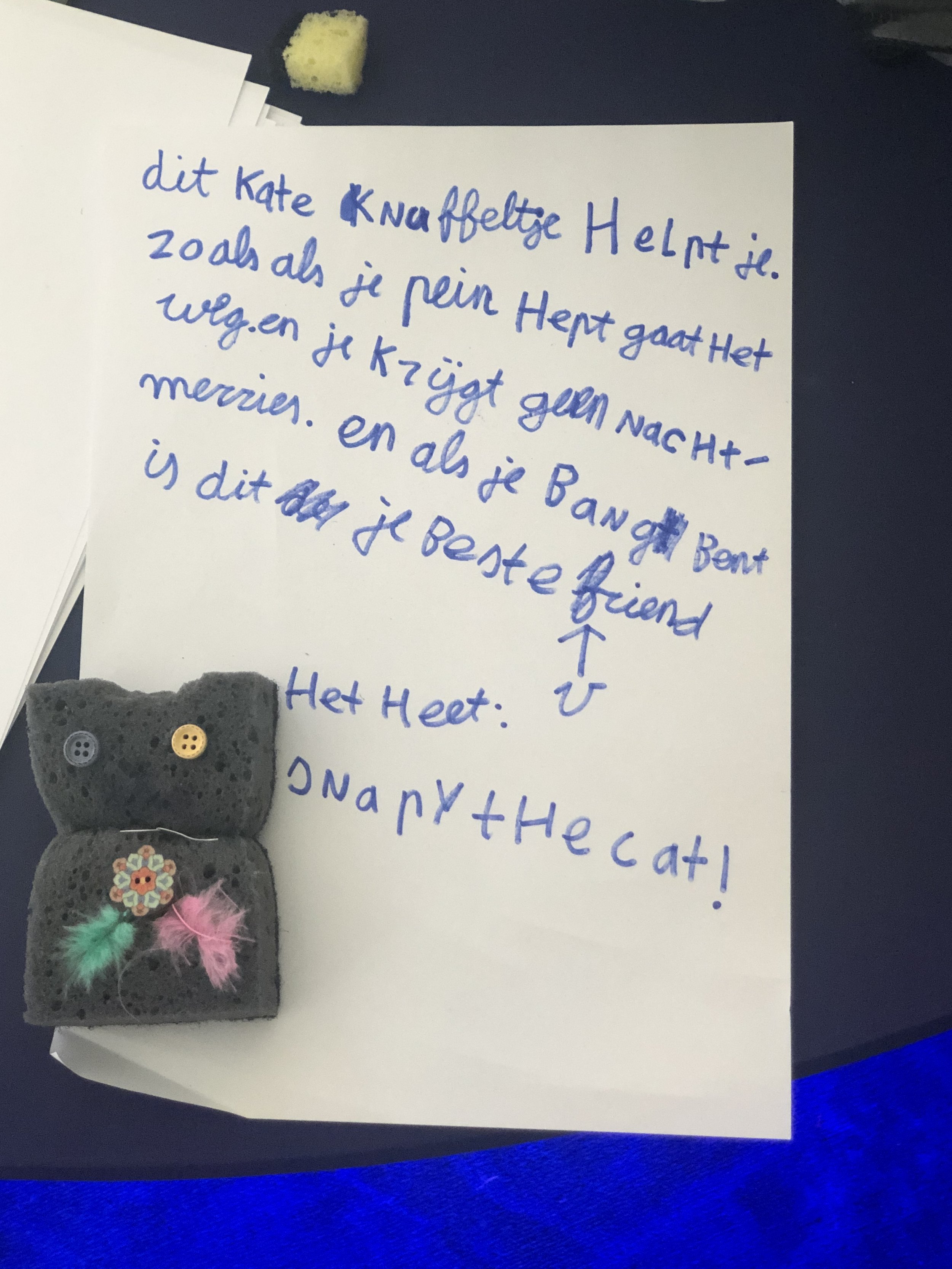Workshop Output
Gen C: Children of 2050
WEEK 7
‘Dear Diary’ Creative Writing Workshop - Bonhoeffer
Group 1 - ‘Impact Gen Kid’
click to view full images
Group 2 - ‘Non-fungible Child’
click to view full images
Group 3 - ‘Renaissance Kid’
click to view full images
Group 4 - ‘Renaissance Kid’
click to view full images
Group 5 - ‘Renaissance Kid’
click to view full images
Group 6 - ‘Impact Gen Kid’
CLICK TO VIEW full IMAGES
WEEK 6
‘Dear Diary’ Creative Writing Workshop - AKI
I was blown away by the output from the Dear Diary workshops this week because I never really know what to expect. Some students just connect better with some workshops over others. However, it seemed like the AKI students really put themselves in the shoes of the Impact Gen Kid. Overall it regularly surprises me to see how much exhibition visitors and students relate to the Impact Gen Kid and Folkfarma Kid, considering they’re primarily based off of my personal experiences living in The Philippines. But I suppose community and connection to nature is something we all want for ourselves.
WEEK 5
Material Worldbuilding Workshop - Public
If there’s one bit of feedback I’ve received over and over again, it’s that the Non-fungible Child lacks a point of connection to their parents and other kids in the physical world. From a necklace gift to a portal from the Folkfarma world into the metaverse, the output from this week was all about creating intimacy and shared experiences between kids.
click to view full image
Audio LARP
WEEK 4
Material Worldbuilding Workshop - Public
It occurred to me that nature might not be as colorful in 2050. These kids reminded me of that with their funky little artificial plants. Maybe somehow there will be some brightly-colored flora in the next iteration of the Folkfarma world to give life to the otherwise muted palette.
click to view full image
WEEK 3
Material Worldbuilding Workshop - Public
The weather was lovely this week. It was warm and sunny, which meant that it was a good week for the two boys in the first photo to rollerblade to my exhibition. In fact, they came for a few days in a row to build new things and even joined a workshop in Tetem’s lab during the weekend. Each time they came, they seemed to be thinking deeply about what they wanted to add, change or improve in each Children of 2050 scenario.
They especially loved to immerse themselves in the Regenerative Futures Simulation, expressing the urge to make something. This classroom is in fact now online and accessible via CoSpaces, so they could actually do that if they wanted.
According to them, they would first save the drowning scuba diver before building an island out of trash. And the first thing they said they’d build on the island was a kitchen so they could cook some fish and survive. I hope there are still enough fish in the sea in 2050!
Another visitor that came this week was a young girl who came with her dad. They were interesting to talk to because they apparently play Minecraft together everyday. Open-world sandbox games like this do serve many educational purposes as well as entertainment and quality time, especially between people that spend a lot of time away from each other. I wasn’t surprised that she had trouble choosing between the two tech-forward futures. She ended up drawing a uranium sword for the Renaissance Kid. I wonder what I’ll do with that!
click to view full image
WEEK 2
Worldbuilding Workshop - Univerity of the Arts Utrecht (HKU)
Even before opening the Gen C exhibition in Tetem, I shared the concept with students from HKU and worked with them to develop their own worlds and utopias. The project outcome was an hybrid interactive physical/digital experience, evidently communicating their own values and personalities through a fictional world.
About the project they wrote —
Interactive Performance Design year two (IPD 2), a study at the HKU theatre built Linea Fortuna, a direct line to the happiness you seek. An interactive performance where two worlds come together, the physical world and the virtual world by means of VR.
In this project IPD 2 worked with Neos VR and Bianca Carague’s workshops around her exhibition Gen C : children of 2050.
Together with Bianca we worked to create our own utopia, 50 years in the future. During the workshop we thought about social rules and laws, transportation, architecture and much more. Besides that we were given a range of tools with which we could keep designing our utopia.
We started the project by designing individual utopia and learning VR, after some time we decided to take a closer look at the four individual worlds. Themes such as urge, letting go, reality, intimacy and nature were common, the basis for the french revolution: Liberté,
Égalité, Fraternité too were very prominent. With these terms we began to develop a common utopia and the eventual experience where physical tactility and virtual images would take centre stage.
After a provisional performance we came to the conclusion that no single world would feel like a perfect utopia for everyone. As a result the story of Tam came to be, a young girl who goes in search of a more utopian world. In her travels she discovers that the grass isn’t always greener on the other side.
In the final performance the audience travels as fortune seekers/travelers with Linea Fortuna, they explore three different utopia.
The first, Vechtenaer, is built on equality, sharing and nature yet every day seems to be the same as the previous.
The second, Silvister, is all about technological advancements and free time (or the lack thereof).
The third, Owtsentum, is centred around religious life goals and giving meaning to yourself and the nature around you. There are however fairly strict rules to adhere to.
After this long journey the fortune seekers end up atop of a cliff with a view of where they’ve been, it is now up to them to choose in which utopia they’ll move on. Where do you want to live? Where lies your happiness?
This performance was performed on 2/4/2022 at the HKU-theatre building at Janskerkhof.
IPD 2/Makers: Dajo Malfliet, Fabian Baauw, Lars Pubben, Tessa van Kooten
Coaches: Joris Weijdom & Marcel Dolman
Material Worldbuilding Workshop - Public
This week I was particularly intrigued by these “Earth-simulator glasses”. It was the first of several ideas and opinions (as I’ll write about later on) that Non-fungible Child should be able to feel connected to their human parents . Indeed, living alone in a virtual home might be lonely, if AIs will know what that feels like at all. Intimacy and connection to the physical world turned out to be a recurring theme for the NFC, so this concept is definitely something that will make its way into the next iteration of the bedroom.
click to view full image
‘Dear Diary’ Workshops
Since I spent this week in Rotterdam, a teacher from Tetem facilitated a creative writing workshop for three groups of students from Innova School. During this workshop, students choose one of the four futures to immerse themselves in through a guided visualization. This is what I call a meditation-like story, where the students are invited to close their eyes and listen to the teacher describe the future scenario of each 2050 kid in vivid detail. This would help students feel as if they’re really there.
At the end of the guided visualization, the students are called to open their eyes and write a diary/journal entry, describing their day, as if they had just lived a day as a child in 2050. This helps students build empathy and creativity, building on the given scenario with their intuition. It demonstrates to students that when it comes to the future, it’s not about imagining alternate places or things, but affecting the lives of real people.
Innova School (Group 1)
click to view full image
Innova School (Group 2)
click to view full image
Innova School (Group 3)
click to view full image
WEEK 1
Children’s Opening: Worldbuilding Workshop
During the afternoon opening, some kids came to see the exhibition and participate in a worldbuilding workshop where they had to choose from one of my future scenarios and build on it. I asked them, ‘Which future is the most interesting to you and what’s missing in that future?’ ‘If you could add or change anything in the bedrooms I created, what would it be? Can you make it?’
From a cat that spreads comfort to whoever presses its buttons to a machine that collects plastic debris from the ocean and turns it into clean energy, the kids had a lot of creative ideas about how to solve the problems that humanity could face in 2050, considering a fast-changing climate.
I thought it was funny that one boy made a TV for the Folkfarma Kid’s bedroom. According to him, kids that live so closely to nature should be able to watch Netflix too. This made me think about balance and how even though some of the bedrooms I created for the exhibition are more heavily mediated by technology; some by nature, both nature and technology will seep into the worlds of these future children seamlessly and uncontrollably.
I was also especially inspired by this ‘Find Me Robot’ made by one of the girls. She made a little tracker toy that, according to her, helps parents keep track of their children’s whereabouts. More than the object itself, however, I was more impressed by the story behind it. She was thinking not just about new objects for the future but the people that would be living in it.
The reason, the girl explained to me, why the robot had crooked antennae is because the Folkfarma Kid who owned it dropped it while exploring the forest. She got lost; all her parents have left of her now is this broken robot. Crooked antennae meant something bad had happened to the Folkfarma Kid.
I must admit that I expected the story to have a happy ending, but this girl is right. We must be prepared to consider that not all futures will be happy ones. Moreover, we must consider not just what objects, spaces or experiences will exist in the future but what stories can be told through them and how they might affect real people.
click to view full image
To contribute ideas to the growing exhibition, visit EDU.COSPACES.IO and use class code K7SZ6


